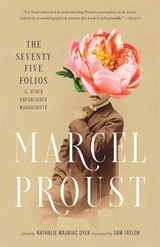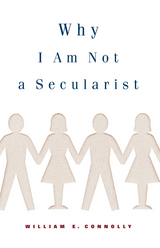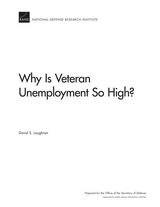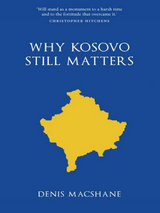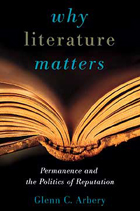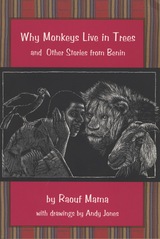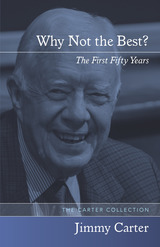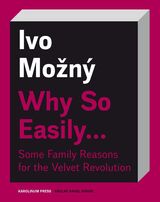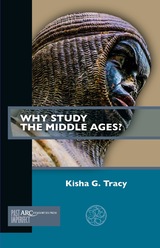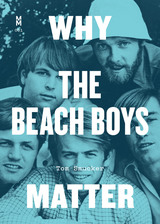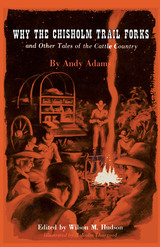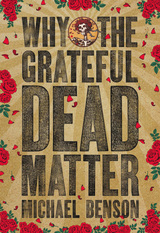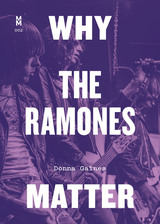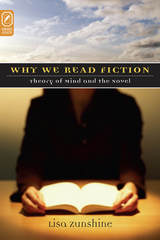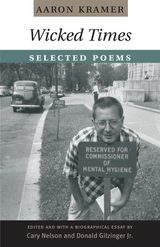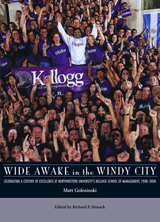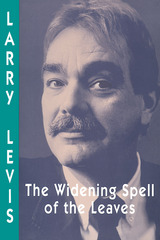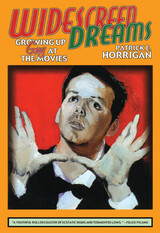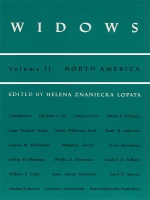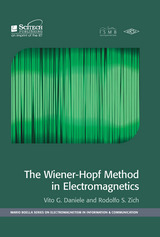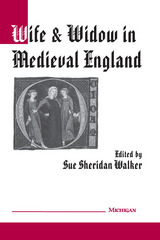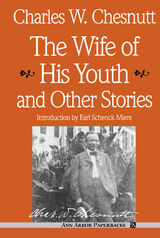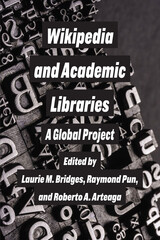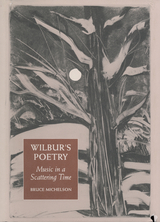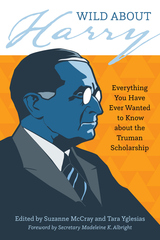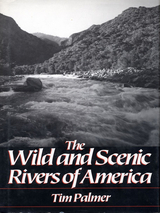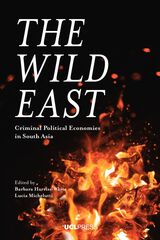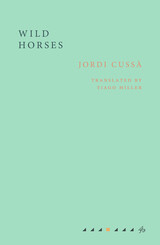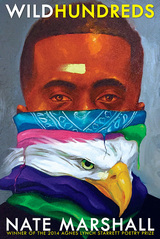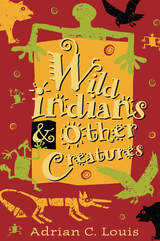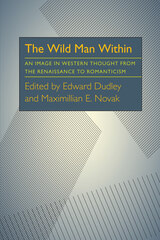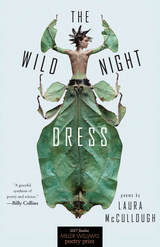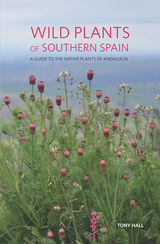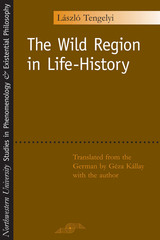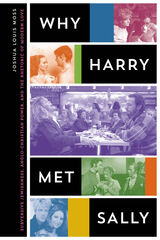 Why Harry Met Sally: Subversive Jewishness, Anglo-Christian Power, and the Rhetoric of Modern Love
By Joshua Louis Moss
University of Texas Press, 2017 From immigrant ghetto love stories such as The Cohens and the Kellys (1926), through romantic comedies including Meet the Parents (2000) and Knocked Up (2007), to television series such as Transparent (2014–), Jewish-Christian couplings have been a staple of popular culture for over a century. In these pairings, Joshua Louis Moss argues, the unruly screen Jew is the privileged representative of progressivism, secular modernism, and the cosmopolitan sensibilities of the mass-media age. But his/her unruliness is nearly always contained through romantic union with the Anglo-Christian partner. This Jewish-Christian meta-narrative has recurred time and again as one of the most powerful and enduring, although unrecognized, mass-culture fantasies. Using the innovative framework of coupling theory, Why Harry Met Sally surveys three major waves of Jewish-Christian couplings in popular American literature, theater, film, and television. Moss explores how first-wave European and American creators in the early twentieth century used such couplings as an extension of modernist sensibilities and the American “melting pot.” He then looks at how New Hollywood of the late 1960s revived these couplings as a sexually provocative response to the political conservatism and representational absences of postwar America. Finally, Moss identifies the third wave as emerging in television sitcoms, Broadway musicals, and “gross-out” film comedies to grapple with the impact of American economic globalism since the 1990s. He demonstrates that, whether perceived as a threat or a triumph, Jewish-Christian couplings provide a visceral, easily graspable, template for understanding the rapid transformations of an increasingly globalized world.
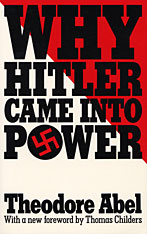 Why Hitler Came into Power
Theodore Abel
Harvard University Press, 1986 In 1934 Theodore Abel went to Germany and offered a prize, under the auspices of Columbia University, for autobiographies of members of the National Socialist movement. The six hundred essays he received constitute the single best source on grassroots opinion within the Nazi Party, and they form the empirical foundation for Abel’s fascinating yet curiously neglected 1938 book. Although a number of scholars have drawn on these reports, Abel’s own treatment has never been surpassed. Of particular value is his presentation of the life histories of a worker, a soldier, an anti-Semite, a middle-class youth, a farmer, and a bank clerk, all of whom explain in their own words why they joined the NSDAP. In the vast literature on National Socialism, no more useful or revealing testimony exists.
In a new Foreword, Thomas Childers discusses how the past half-century of research and writing on Nazi Germany has upheld Abel’s original insights into the broad appeal of the National Socialist movement, thereby reaffirming this work’s enduring value for students of the topic.
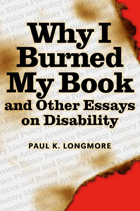 Why I Burned My Book
Paul Longmore
Temple University Press, 2003 This wide-ranging book shows why Paul Longmore is one of the most respected figures in disability studies today. Understanding disability as a major variety of human experience, he urges us to establish it as a category of social, political, and historical analysis in much the same way that race, gender, and class already have been. The essays here search for the often hidden pattern of systemic prejudice and probe into the institutionalized discrimination that affects the one in five Americans with disabilities.Whether writing about the social critic Randolph Bourne, contemporary political activists, or media representations of people with disabilities, Longmore demonstrates that the search for heroes is a key part of the continuing struggle of disabled people to gain a voice and to shape their destinies. His essays on bioethics and public policy examine the conflict of agendas between disability rights activists and non-disabled policy makers, healthcare professionals, euthanasia advocates, and corporate medical bureaucracies. The title essay, which concludes the book, demonstrates the necessity of activism for any disabled person who wants access to the American dream.
 Why I Buy: Self, Taste, and Consumer Society in America
Rami Gabriel
Intellect Books, 2013 Why do we buy? How do our acts of—and ideas about—consumption impact our selves, our institutions, and our societies? An incisive response to these questions, Why I Buy explains how consumption came to give meaning and value to social and personal life. Balancing psychological, conceptual, and historical analyses with examples drawn from popular culture and mass media, Rami Gabriel traces the ways in which beliefs about the self—including dualism, individualism, and expressivism—influence consumer behavior. These understandings of the self, Gabriel argues, structure the values that Americans seek and find in consumer society; they therefore have structural consequences for our cultural, political, and economic lives. For example, Gabriel describes how imbalances in the institutions of participatory politics have directly resulted from a consumer society centered on powerful nongovernmental institutions and a scattered body of disengaged citizens whose social and individual needs are not primarily satisfied through civic involvement. By exploring the relationship between our individual needs and our institutions, Gabriel ultimately points the way toward transformations that could lead to a more sustaining and sustainable society.
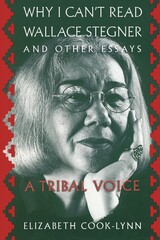 Why I Can't Read Wallace Stegner and Other Essays: A Tribal Voice
Elizabeth Cook-Lynn
University of Wisconsin Press, 1996 This provocative collection of essays reveals the passionate voice of a Native American feminist intellectual. Elizabeth Cook-Lynn, a poet and literary scholar, grapples with issues she encountered as a Native American in academia. She asks questions of critical importance to tribal people: who is telling their stories, where does cultural authority lie, and most important, how is it possible to develop an authentic tribal literary voice within the academic community?
In the title essay, “Why I Can’t Read Wallace Stegner,” Cook-Lynn objects to Stegner’s portrayal of the American West in his fiction, contending that no other author has been more successful in serving the interests of the nation’s fantasy about itself. When Stegner writes that “Western history sort of stopped at 1890,” and when he claims the American West as his native land, Cook-Lynn argues, he negates the whole past, present, and future of the native peoples of the continent. Her other essays include discussion of such Native American writers as Michael Dorris, Ray Young Bear, and N. Scott Momaday; the importance of a tribal voice in academia, the risks to American Indian women in current law practices, the future of Indian Nationalism, and the defense of the land.
Cook-Lynn emphasizes that her essays move beyond the narrowly autobiographical, not just about gender and power, not just focused on multiculturalism and diversity, but are about intellectual and political issues that engage readers and writers in Native American studies. Studying the “Indian,” Cook-Lynn reminds us, is not just an academic exercise but a matter of survival for the lifeways of tribal peoples. Her goal in these essays is to open conversations that can make tribal life and academic life more responsive to one another.
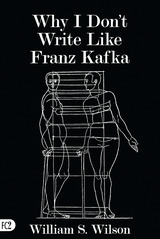 Why I Don't Write Like Franz Kafka
William Wilson
University of Alabama Press, 2002 In a 1978 New York Times book review, Kenneth Baker described Why I Don't Write Like Franz Kafka as: "...the most powerful New American fiction I have encountered in years. A demanding, exhilarating work." Nearly 25 years later, FC2 is proud to reissue this classic collection of short fiction by William S. Wilson that seems even more relevant today. It touches on controversies over the role of science in our lives and deals with cosmetic surgery and the medical uses of human embryos, heart transplants, and regenerated genitalia. And that's only the beginning. The story "Metier: Why I Don't Write Like Franz Kafka," implies that Kafka responded in his fiction to questions that no longer need to be asked in fiction. The epistolary story, "Conveyance: The Story I Wouldn't Want Bill Wilson to Read," is an intimate letter from a woman who had wanted to write fiction and who now challenges Wilson's reaction to her report of a tragedy. "Interim" chronicles the imaginary reforestation of Scotland and "Anthropology" turns on the actual moment in Structuralism when Claude Levi-Strauss relocates the ear to the back of the head in order to interpret a myth. Written with cool precision and a subtle touch, these meditations and metafictions will continue to reverberate for decades to come.
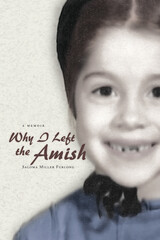 Why I Left the Amish: A Memoir
Saloma Miller Furlong
Michigan State University Press, 2011
There are two ways to leave the Amish—one is through life and the other through death. When Saloma Miller Furlong’s father dies during her first semester at Smith College, she returns to the Amish community she had left twenty four years earlier to attend his funeral. Her journey home prompts a flood of memories. Now a mother with grown children of her own, Furlong recalls her painful childhood in a family defined by her father’s mental illness, her brother’s brutality, her mother’s frustration, and the austere traditions of the Amish—traditions Furlong struggled to accept for years before making the difficult decision to leave the community. In this personal and moving memoir, Furlong traces the genesis of her desire for freedom and education and chronicles her conflicted quest for independence. Eloquently told, Why I Left the Amish is a revealing portrait of life within—and without—this frequently misunderstood community.
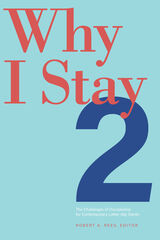 Why I Stay 2: The Challenges of Discipleship for Contemporary Latter-day Saints
Robert A. Rees
Signature Books, 2021 One’s religious affiliation may be determined, at least, initially, by family and culture, but the ultimate choice to stay is, in the end, personal. This second volume of Why I Stay touches on the weighty decisions and complex issues people ponder in a faith journey and which fork in the road to take once they face them.
Twenty-one women and men discuss what it is about Mormonism that keeps them part of the fold. Their deep, unique experiences make their individual travels even more compelling. Kimberly Applewhite Teitter, growing up in the South as a Black Latter-day Saint, often encountered well-meaning Latter-day Saints whose words messaged the idea that she was at some level an outsider or perhaps not as authentically Mormon as others in her congregation. Thus, she writes, “At the end of the day I’m still Black—still have felt the weight of proving that I represent the church I’ve fought so hard for my entire life.” Yet the very episodes that could have driven her from the church became lessons on the meaning of discipleship.
For Carol Lynn Pearson, staying boiled down to two reasons: “I find a great deal of love in this church,” and “where I do not find love, I have an opportunity to help create love.” The stories she shares illuminate that mantra. Mitch Mayne, an openly gay man, has faced many challenges by his decision to stay. “Most days, it seems I can’t be Mormon enough for my LDS community, and I can’t be gay enough for my LGBT fellows.” In his essay, he answers the question many have asked: “Why don’t you just leave the church?”
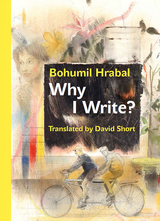 Why I Write?: The Early Prose from 1945 to 1952
Bohumil Hrabal
Karolinum Press, 2019 “Glimmers in anticipation of Hrabal’s later virtuosity.”
—New Yorker
“A collection of formative fiction from a writer whose work has earned comparison with Joyce and Beckett. . . . Early work from a writer who merits a larger readership.”
—Kirkus Reviews
This collection of the earliest prose by one of literature’s greatest stylists captures, as scholar Arnault Maréchal put it, “the moment when Hrabal discovered the magic of writing.” Taken from the period when Bohumil Hrabal shifted his focus from poetry to prose, these stories—many written in school notebooks, typed and read aloud to friends, or published in samizdat—often showcase raw experiments in style that would define his later works. Others intriguingly utilize forms the author would never pursue again. Featuring the first appearance of key figures from Hrabal’s later writings, such as his real-life Uncle Pepin, who would become a character in his later fiction and is credited here as a coauthor of one piece, the book also contains stories that Hrabal would go on to cannibalize for some of his most famous novels. All together, Why I Write? offers readers the chance to explore this important nascent phase of Hrabal’s writing.
Expertly interpreted by award-winning Hrabal translator David Short, this collection comprises some of the last remaining prose works by Hrabal to be translated into English. A treasure trove for Hrabal devotees, Why I Write? allows us to see clearly why this great prose master was, as described by Czech writer and publisher Josef Škvorecký, “fundamentally a lyrical poet.”
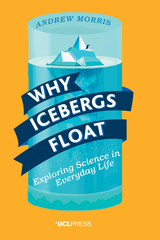 Why Icebergs Float: Exploring Science in Everyday Life
Andrew Morris
University College London, 2016 From paintings and food to illness and icebergs, science is happening everywhere. Rather than follow the path of a syllabus or textbook, Andrew Morris takes examples from the science we see every day and uses them as entry points to explain a number of fundamental scientific concepts – from understanding colour to the nature of hormones – in ways that anyone can grasp. While each chapter offers a separate story, they are linked together by their fascinating relevance to our daily lives. The topics explored in each chapter are based on hundreds of discussions the author has led with adult science learners over many years – people who came from all walks of life and had no scientific training, but had developed a burning curiosity to understand the world around them. This book encourages us to reflect on our own relationship with science and serves as an important reminder of why we should continue learning as adults.
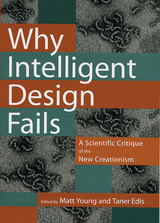 Why Intelligent Design Fails: A Scientific Critique of the New Creationism
Edited by Matt Young and Taner Edis
Rutgers University Press, 2004 Is Darwinian evolution established fact, or a dogma ready to be overtaken by "intelligent design"? This is the debate raging in courtrooms and classrooms across the country. Why Intelligent Design Fails assembles a team of physicists, biologists, computer scientists, mathematicians, and archaeologists to examine intelligent design from a scientific perspective. They consistently find grandiose claims without merit. Contributors take intelligent design's two most famous claims--irreducible complexity and information-based arguments--and show that neither challenges Darwinian evolution. They also discuss thermodynamics and self-organization; the ways human design is actually identified in fields such as forensic archaeology; how research in machine intelligence indicates that intelligence itself is the product of chance and necessity; and cosmological fine-tuning arguments. Intelligent design turns out to be a scientific mistake, but a mistake whose details highlight the amazing power of Darwinian thinking and the wonders of a complex world without design.
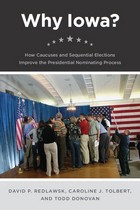 Why Iowa?: How Caucuses and Sequential Elections Improve the Presidential Nominating Process
David P. Redlawsk, Caroline J. Tolbert, and Todd Donovan
University of Chicago Press, 2010 If Barack Obama had not won in Iowa, most commentators believe that he would not have been able to go on to capture the Democratic nomination for president. Why Iowa? offers the definitive account of those early weeks of the campaign season: from how the Iowa caucuses work and what motivates the candidates’ campaigns, to participation and turnout, as well as the lingering effects that the campaigning had on Iowa voters. Demonstrating how “what happens in Iowa” truly reverberates throughout the country, five-time Iowa precinct caucus chair David P. Redlawsk and his coauthors take us on an inside tour of one of the most media-saturated and speculated-about campaign events in American politics.
Considering whether a sequential primary system, in which early, smaller states such as Iowa and New Hampshire have such a tremendous impact is fair or beneficial to the country as a whole, the authors here demonstrate that not only is the impact warranted, but it also reveals a great deal about informational elements of the campaigns. Contrary to conventional wisdom, this sequential system does confer huge benefits on the nominating process while Iowa’s particularly well-designed caucus system—extensively explored here for the first time—brings candidates’ arguments, strengths, and weaknesses into the open and under the media’s lens.
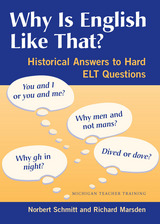 Why Is English Like That?: Historical Answers to Hard ELT Questions
Norbert Schmitt and Richard Marsden
University of Michigan Press, 2006 Why is "night" spelled with "gh"? Why can't sentences end with prepositions? Why does English have so many words that express the same ideas? Questions like these can be difficult for teachers to answer when they do not know the historical background of the English language. Why Is English Like That? gives teachers a brief and accessible history of the English without assuming any prior knowledge of the subject.
The book outlines the historical events that shaped English; describes how its grammar, vocabulary, spelling, and pronunciation developed over time; and highlights the "quirks" and "exceptions" in English that can be explained on a historical basis. By understanding how the English of today evolved from the English of past times, both teachers and students will be more comfortable with the many conventions of the English language.
Why Is English Like That? also contains reproducible grammar and vocabulary exercises that will help teachers incorporate some of this historical knowledge into classroom activities. This book was written with English language teachers in mind, and the exercises are designed for ESL/EFL students, but it may also be used by teachers in training (L1 and L2).
Why Is Veteran Unemployment So High?
David S. Loughran
RAND Corporation, 2014 Between 2000 and 2011, younger veterans were more likely to be unemployed than younger non-veterans. This difference falls rapidly with age and time. The evidence supports the hypothesis that veteran unemployment reflects engagement in job search. There is little evidence that veterans are disadvantaged in the labor market. Limiting benefits to veterans might reduce the length of unemployment spells, but the budgetary effect is unclear.
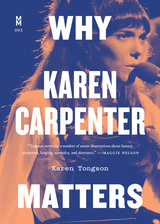 Why Karen Carpenter Matters
By Karen Tongson
University of Texas Press, 2019 In the '60s and '70s, America's music scene was marked by raucous excess, reflected in the tragic overdoses of young superstars such as Jimi Hendrix and Janis Joplin. At the same time, the uplifting harmonies and sunny lyrics that propelled Karen Carpenter and her brother, Richard, to international fame belied a different sort of tragedy—the underconsumption that led to Karen's death at age thirty-two from the effects of an eating disorder. In Why Karen Carpenter Matters, Karen Tongson (whose Filipino musician parents named her after the pop icon) interweaves the story of the singer’s rise to fame with her own trans-Pacific journey between the Philippines—where imitations of American pop styles flourished—and Karen Carpenter’s home ground of Southern California. Tongson reveals why the Carpenters' chart-topping, seemingly whitewashed musical fantasies of "normal love" can now have profound significance for her—as well as for other people of color, LGBT+ communities, and anyone outside the mainstream culture usually associated with Karen Carpenter’s legacy. This hybrid of memoir and biography excavates the destructive perfectionism at the root of the Carpenters’ sound, while finding the beauty in the singer's all too brief life.
Why Kosovo Matters
Denis MacShane
Haus Publishing, 2011 A short polemical appeal by Dennis MacShane (Minister for Europe 2005-2010) for policy-makers to re-engage with the Western Balkans before it is too late. Drawing on his experience as a Minister for the Balkans between 2001-2010, MacShane has written a vivid and forceful account, showing that the Western Balkans are a symbol of Europe's weakness to transform one of its key regions and the choice is now stark: either the Balkans become Europeanised or Europe becomes Balkanised.
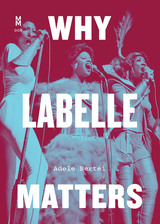 Why Labelle Matters
By Adele Bertei
University of Texas Press, 2021 Finalist, 2022 Lesbian Memoir/Biography, Lambda Literary Award for Arts and Culture
Crafting a legacy all their own, the reinvented Labelle subverted the “girl group” aesthetic to invoke the act’s Afrofuturist spirit and make manifest their vision of Black womanhood.
Performing as the Bluebelles in the 1960s, Patti LaBelle, Nona Hendryx, and Sarah Dash wore bouffant wigs and chiffon dresses, and they harmonized vocals like many other girl groups of the era. After a decade on the Chitlin Circuit, however, they were ready to write their own material, change their name, and deliver—as Labelle—an electrifyingly celestial sound and styling that reached a crescendo with a legendary performance at the Metropolitan Opera House to celebrate the release of Nightbirds and its most well-known track, “Lady Marmalade.” In Why Labelle Matters, Adele Bertei tells the story of the group that sang the opening aria of Afrofuturism and proclaimed a new theology of musical liberation for women, people of color, and LGBTQ people across the globe. With sumptuous and galactic costumes, genre-bending lyrics, and stratospheric vocals, Labelle’s out-of-this-world performances changed the course of pop music and made them the first Black group to grace the cover of Rolling Stone. Why Labelle Matters, informed by interviews with members of the group as well as Bertei’s own experience as a groundbreaking musician, is the first cultural assessment of this transformative act.
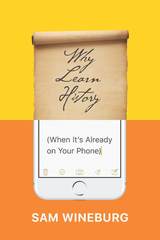 Why Learn History (When It’s Already on Your Phone)
Sam Wineburg
University of Chicago Press, 2018 Let’s start with two truths about our era that are so inescapable as to have become clichés: We are surrounded by more readily available information than ever before. And a huge percentage of it is inaccurate. Some of the bad info is well-meaning but ignorant. Some of it is deliberately deceptive. All of it is pernicious.
With the internet always at our fingertips, what’s a teacher of history to do? Sam Wineburg has answers, beginning with this: We definitely can’t stick to the same old read-the-chapter-answer-the-questions-at-the-back snoozefest we’ve subjected students to for decades. If we want to educate citizens who can sift through the mass of information around them and separate fact from fake, we have to explicitly work to give them the necessary critical thinking tools. Historical thinking, Wineburg shows us in Why Learn History (When It’s Already on Your Phone), has nothing to do with test prep–style ability to memorize facts. Instead, it’s an orientation to the world that we can cultivate, one that encourages reasoned skepticism, discourages haste, and counters our tendency to confirm our biases. Wineburg draws on surprising discoveries from an array of research and experiments—including surveys of students, recent attempts to update history curricula, and analyses of how historians, students, and even fact checkers approach online sources—to paint a picture of a dangerously mine-filled landscape, but one that, with care, attention, and awareness, we can all learn to navigate.
It’s easy to look around at the public consequences of historical ignorance and despair. Wineburg is here to tell us it doesn’t have to be that way. The future of the past may rest on our screens. But its fate rests in our hands.
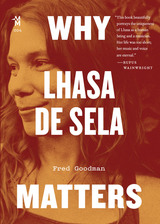 Why Lhasa de Sela Matters
By Fred Goodman
University of Texas Press, 2019 An artist in every sense of the word, Lhasa de Sela wowed audiences around the globe with her multilingual songs and spellbinding performances, mixing together everything from Gypsy music to Mexican rancheras, Americana and jazz, chanson française, and South American folk melodies. In Canada, her album La Llorona won the Juno Award and went gold, and its follow-up, The Living Road, won a BBC World Music Award. Tragically, de Sela succumbed to breast cancer in 2010 at the age of thirty-seven after recording her final album, Lhasa. Tracing de Sela’s unconventional life and introducing her to a new generation, Why Lhasa de Sela Matters is the first biography of this sophisticated creative icon. Raised in a hippie family traveling between the United States and Mexico in a converted school bus, de Sela developed an unquenchable curiosity, with equal affinities for the romantic, mystic, and cerebral. Becoming a sensation in Montreal and Europe, the trilingual singer rejected a conventional path to fame, joining her sisters’ circus troupe in France. Revealing the details of these and other experiences that inspired de Sela to write such vibrant, otherworldly music, Why Lhasa de Sela Matters sings with the spirit of this gifted firebrand.
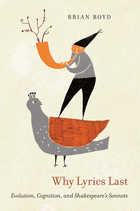 Why Lyrics Last: Evolution, Cognition, and Shakespeare’s Sonnets
Brian Boyd
Harvard University Press, 2012 In Why Lyrics Last, the internationally acclaimed critic Brian Boyd turns an evolutionary lens on the subject of lyric verse. He finds that lyric making, though it presents no advantages for the species in terms of survival and reproduction, is “universal across cultures because it fits constraints of the human mind.” An evolutionary perspective— especially when coupled with insights from aesthetics and literary history—has much to tell us about both verse and the lyrical impulse.
Boyd places the writing of lyrical verse within the human disposition “to play with pattern,” and in an extended example he uncovers the many patterns to be found within Shakespeare’s Sonnets. Shakespeare’s bid for readership is unlike that of any sonneteer before him: he deliberately avoids all narrative, choosing to maximize the openness of the lyric and demonstrating the power that verse can have when liberated of story.
In eschewing narrative, Shakespeare plays freely with patterns of other kinds: words, images, sounds, structures; emotions and moods; argument and analogy; and natural rhythms, in daily, seasonal, and life cycles. In the originality of his stratagems, and in their sheer number and variety, both within and between sonnets, Shakespeare outdoes all competitors. A reading of the Sonnets informed by evolution is primed to attend to these complexities and better able to appreciate Shakespeare’s remarkable gambit for immortal fame.
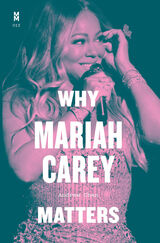 Why Mariah Carey Matters
Andrew Chan
University of Texas Press, 2023 The first book to critically examine the legacy of pop superstar Mariah Carey.
When it comes to Mariah Carey, star power is never in doubt. She has sold hundreds of millions of albums and cut more chart-topping hits than any other solo artist—ever. And she has that extraordinary five-octave vocal range. But there is more to her legacy than eye-popping numbers. Why Mariah Carey Matters examines the creative evolution and complicated biography of a true diva, making the case that, despite her celebrity, Carey’s musicianship and influence are insufficiently appreciated. A pioneering songwriter and producer, Carey pairs her vocal gifts with intimate lyrics and richly layered sonic details. In the mid-1990s, she perfected a blend of pop, hip-hop, and R&B with songs such as “Fantasy” and “Honey” and drew from her turbulent life to create the introspective masterpiece Butterfly. Andrew Chan looks beyond Carey’s glamorous persona to explore her experience as a mixed-race woman in show business, her adventurous forays into house music and gospel, and her appeal to multiple generations of queer audiences. He also reckons with the transcendent ideal of the voice that Carey represents, showing how this international icon taught artists around the world to sing with soul-shaking intensity and a spirit of innovation.
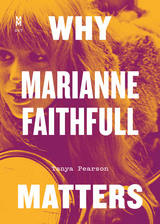 Why Marianne Faithfull Matters
By Tanya Pearson
University of Texas Press, 2021 First as a doe-eyed ingénue with “As Tears Go By,” then as a gravel-voiced phoenix rising from the ashes of the 1960s with a landmark punk album, Broken English, and finally as a genre-less icon, Marianne Faithfull carved her name into the history of rock ’n’ roll to chart a career spanning five decades and multiple detours. In Why Marianne Faithfull Matters, Tanya Pearson crafts a feminist account that explains the musician’s absence from the male-dominated history of the British Invasion and champions the eclectic late career that confirmed her redemption. Putting memoir on equal footing with biographical history, Pearson writes about Faithfull as an avid fan, recovered addict, and queer musician at a crossroads. She’s also a professional historian unafraid to break from the expectations of the discipline if a “titty-centered analysis” or astrology can illuminate the work of her subject. Whether exploring Faithfull’s rise to celebrity, her drug addiction and fall from grace as spurned “muse,” or her reinvention as a sober, soulful chanteuse subverting all expectations for an aging woman in music, Pearson affirms the deep connections between listeners and creators and reveals, in her own particular way, why Marianne Faithfull matters.
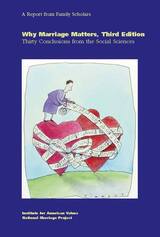 Why Marriage Matters, Third Edition: Twenty-Six Conclusions from the Social Sciences
W. Bradford Wilcox
American Philanthropic, 2011
Like previous editions, the third edition of Why Marriage Matters reviews the relevant research on family topics and comes to three fundamental conclusions: marriage is an important social good, marriage is an important public good, and the benefits of marriage extend to poor and minority communities. The third edition pays particular attention to new research on the impact of cohabitation on children and families. It concludes with a “U.S. Marriage Index,” which compiles and presents the leading indicators of marital health in the United States. These indicators include: 1) The percentage of adults marriage (ages 20-54); 2) the percentage of married persons “very happy” with their marriage (ages 18 and up); 3) the percentage of first marriages intact (ages 20-59); 4) percentage of births to married parents; and 5) the percentage of children living with own married parents.
 Why Misread A Cloud
Emily Carlson
Tupelo Press, 2022 “In brief paragraphs that are neither prose nor prose poems, we meet a witness. A speaker who is not in her country of origin. A woman living in the air of violence. Militarization. And very occasionally, a mundane gesture–adding sugar to tea. The spareness creates a poetics that is, at once, elegantly stark and akin to journalism. We read between the lines because what is unsaid, makes this a poetry of image and association. What was once a broom for sweeping a kitchen, is used by a woman to sweep propaganda leaflets off the street. I find myself engaged in a place–to a place, really–where there are ballistic helmets. Yes, strange and strangely familiar. This is how art and dreams work: with the familiarity of knowing and the disassociation that can allow insight.”
— from the Judge’s Citation by Kimiko Hahn
Why Misread a Cloud takes its name from clouds of ash and smoke in wartime which appear to the author as a “storm, blown over the sea.” Both an exploration of the mind’s ability to turn what is into something else, in order to survive, and the mind’s ability to resist the effects of psychosocial warfare—imposed by the military and the police. “Who wants you to be afraid” the poet’s friend asks as he “added sugar to his tea.” The realization this question brings enables the poet to explore forces that separate us from one another and ways we rise up within ourselves to move through fear toward love.
Why Monkeys Live in Trees and Other Stories from Benin
Raouf Mama
Northwestern University Press, 2006 This is a book for both young and old lovers of folklore. Why Monkeys Live in Trees and Other Stories from Benin is a rich tapestry of oral tales that come from a wide range of Beninese ethnic groups. They include trickster tales and sacred tales involving the greatest and meanest of mankind, as well as nature and the world of spirits. These ageless tales remind us of the power of love, the perils of greed and pride, and the redemptive virtues of courage, humility, and kindness. The Western African Republic of Benin (formerly Dahomey) is gifted with a great folktale tradition, one of the richest in the world. As pieces of oral literature and cultural history, these tales shed light on some of the values and beliefs as well as the customs and traditions of the people of Benin.
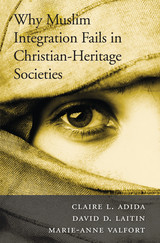 Why Muslim Integration Fails in Christian-Heritage Societies
Claire L. Adida, David D. Laitin, and Marie-Anne Valfort
Harvard University Press, 2016 Amid mounting fears of violent Islamic extremism, many Europeans ask whether Muslim immigrants can integrate into historically Christian countries. In a groundbreaking ethnographic investigation of France’s Muslim migrant population, Why Muslim Integration Fails in Christian-Heritage Societies explores this complex question. The authors conclude that both Muslim and non-Muslim French must share responsibility for the slow progress of Muslim integration.
“Using a variety of resources, research methods, and an innovative experimental design, the authors contend that while there is no doubt that prejudice and discrimination against Muslims exist, it is also true that some Muslim actions and cultural traits may, at times, complicate their full integration into their chosen domiciles. This book is timely (more so in the context of the current Syrian refugee crisis), its insights keen and astute, the empirical evidence meticulous and persuasive, and the policy recommendations reasonable and relevant.”
—A. Ahmad, Choice
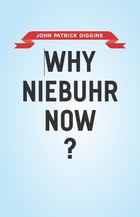 Why Niebuhr Now?
John Patrick Diggins
University of Chicago Press, 2011 Barack Obama has called him “one of my favorite philosophers.” John McCain wrote that he is “a paragon of clarity about the costs of a good war.” Andrew Sullivan has said, “We need Niebuhr now more than ever.” For a theologian who died in 1971, Reinhold Niebuhr is maintaining a remarkably high profile in the twenty-first century.
In Why Niebuhr Now? acclaimed historian John Patrick Diggins tackles the complicated question of why, at a time of great uncertainty about America’s proper role in the world, leading politicians and thinkers are turning to Niebuhr for answers. Diggins begins by clearly and carefully working through Niebuhr’s theology, which focuses less on God’s presence than his absence—and the ways that absence abets the all-too-human sin of pride. He then shows how that theology informed Niebuhr’s worldview, leading him to be at the same time a strong opponent of fascism and communism and a leading advocate for humility and caution in foreign policy.
Turning to the present, Diggins highlights what he argues is a misuse of Niebuhr’s legacy on both the right and the left: while neoconservatives distort Niebuhr’s arguments to support their call for an endless war on terror in the name of stopping evil, many liberal interventionists conveniently ignore Niebuhr’s fundamental doubts about power. Ultimately, Niebuhr’s greatest lesson is that, while it is our duty to struggle for good, we must at the same time be wary of hubris, remembering the limits of our understanding.
The final work from a distinguished writer who spent his entire career reflecting on America’s history and promise, Why Niebuhr Now? is a compact and perceptive book that will be the starting point for all future discussions of Niebuhr.
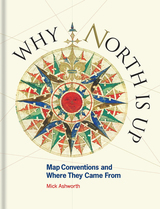 Why North Is Up: Map Conventions and Where They Came From
Mick Ashworth
Bodleian Library Publishing, 2019 Many people have a love of maps. But what lies behind the process of map-making? How have cartographers through the centuries developed their craft and established a language of maps which helps them to better represent our world and help users to understand it?
This book tells the story of how widely accepted mapping conventions originated and evolved—from map orientation, projections, typography, and scale, to the use of color, symbols, ways of representing relief, and the treatment of boundaries and place names. It charts the fascinating story of how conventions have changed in response to new technologies and ever-changing mapping requirements, how symbols can be a matter of life or death, why universal acceptance of conventions can be difficult to achieve, and how new mapping conventions are developing to meet the needs of modern cartography. Why North is Up offers an accessible and enlightening guide to the sometimes hidden techniques of map-making through the centuries.
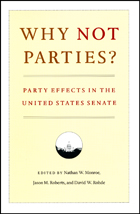 Why Not Parties?: Party Effects in the United States Senate
Edited by Nathan W. Monroe, Jason M. Roberts, and David W. Rohde
University of Chicago Press, 2008 Recent research on the U.S. House of Representatives largely focuses on the effects of partisanship, but the strikingly less frequent studies of the Senate still tend to treat parties as secondary considerations in a chamber that gives its members far more individual leverage than congressmen have. In response to the recent increase in senatorial partisanship, Why Not Parties? corrects this imbalance with a series of original essays that focus exclusively on the effects of parties in the workings of the upper chamber. Illuminating the growing significance of these effects, the contributors explore three major areas, including the electoral foundations of parties, partisan procedural advantage, and partisan implications for policy. In the process, they investigate such issues as whether party discipline can overcome Senate mechanisms that invest the most power in individuals and small groups; how parties influence the making of legislation and the distribution of pork; and whether voters punish senators for not toeing party lines. The result is a timely corrective to the notion that parties don’t matter in the Senate—which the contributors reveal is far more similar to the lower chamber than conventional wisdom suggests.
Why Not the Best?: The First Fifty Years
Jimmy Carter
University of Arkansas Press, 1996 Why Not the Best?, originally published in 1975, is President Carter’s presidential campaign autobiography, the book that introduced the world to Georgia governor Jimmy Carter and asked the American people to demand the best and highest standards of excellence from our government.
 The Why of Music: Dialogues in an Unexplored Region of Appreciation
Donald N. Ferguson
University of Minnesota Press, 1969 The Why of Music was first published in 1969. Minnesota Archive Editions uses digital technology to make long-unavailable books once again accessible, and are published unaltered from the original University of Minnesota Press editions. In his many tears of teaching and writing about music Professor Ferguson has given much thought to the question of the why of music — why does music affect us as it does, why are we deeply moved by some music by not by other music, what is it about music that "sends" us, and where does it send us? In this book he explores such questions in depth and provides intriguing answers. The discussions are presented in the form of dialogues between the author and several friends. As Professor Ferguson explains, the book is intended to take the reader on a guided tour, a tour which follows, in part, the familiar roads of formal music appreciation but which leads more often into byways where, almost hidden by the brilliant Hows that line the more familiar roads, lurks the essential Why of music. He describes this Why as the fertilizing commerce between music and human experience—a portrayal, not of the tangible facts of experience, but of the concern aroused by our encounter with those facts. He explains that while avant-garde abstractionism is concerned only with music as art—a concern too specialized for the general music lover to grasp and too narrow to sustain interest—the Why of enduring music lies in its endeavor to portray experience as it lives in Everyman's mind.
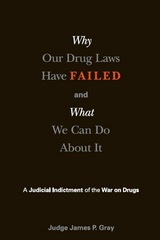 Why Our Drug Laws Have Failed
James Gray
Temple University Press, 2001 Our drug prohibition policy is hopeless, just as Prohibition, our alcohol prohibition policy, was before it. Today there are more drugs in our communities and at lower prices and higher strengths than ever before.
We have built large numbers of prisons, but they are overflowing with non-violent drug offenders. The huge profits made from drug sales are corrupting people and institutions here and abroad. And far from being protected by our drug prohibition policy, our children are being recruited by it to a lifestyle of drug use and drug selling.
Judge Gray's book drives a stake through the heart of the War on Drugs. After documenting the wide-ranging harms caused by this failed policy, Judge Gray also gives us hope. We have viable options. The author evaluates these options, ranging from education and drug treatment to different strategies for taking the profit out of drug-dealing.
Many officials will not say publicly what they acknowledge privately about the failure of the War on Drugs. Politicians especially are afraid of not appearing "tough on drugs." But Judge Gray's conclusions as a veteran trial judge and former federal prosecutor are reinforced by the testimonies of more than forty other judges nationwide.
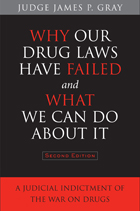 Why Our Drug Laws Have Failed and What We Can Do About It: A Judicial Indictment of the War on Drugs
James Gray
Temple University Press, 2011 Our drug prohibition policy is hopeless, just as Prohibition, our alcohol prohibition policy, was before it. Today there are more drugs in our communities and at lower prices and higher strengths than ever before. We have built large numbers of prisons, but they are overflowing with non-violent drug offenders. The huge profits made from drug sales are corrupting people and institutions here and abroad. And far from being protected by our drug prohibition policy, our children are being recruited by it to a lifestyle of drug use and drug selling. Judge Gray’s book drives a stake through the heart of the War on Drugs. After documenting the wide-ranging harms caused by this failed policy, Judge Gray also gives us hope. We have viable options. The author evaluates these options, ranging from education and drug treatment to different strategies for taking the profit out of drug-dealing. Many officials will not say publicly what they acknowledge privately about the failure of the War on Drugs. Politicians especially are afraid of not appearing "tough on drugs." But Judge Gray’s conclusions as a veteran trial judge and former federal prosecutor are reinforced by the testimonies of more than forty other judges nationwide.
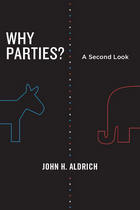 Why Parties?: A Second Look
John H. Aldrich
University of Chicago Press, 2011 Since its first appearance fifteen years ago, Why Parties? has become essential reading for anyone wishing to understand the nature of American political parties. In the interim, the party system has undergone some radical changes. In this landmark book, now rewritten for the new millennium, John H. Aldrich goes beyond the clamor of arguments over whether American political parties are in resurgence or decline and undertakes a wholesale reexamination of the foundations of the American party system. Surveying critical episodes in the development of American political parties—from their formation in the 1790s to the Civil War—Aldrich shows how they serve to combat three fundamental problems of democracy: how to regulate the number of people seeking public office, how to mobilize voters, and how to achieve and maintain the majorities needed to accomplish goals once in office. Aldrich brings this innovative account up to the present by looking at the profound changes in the character of political parties since World War II, especially in light of ongoing contemporary transformations, including the rise of the Republican Party in the South, and what those changes accomplish, such as the Obama Health Care plan. Finally, Why Parties? A Second Look offers a fuller consideration of party systems in general, especially the two-party system in the United States, and explains why this system is necessary for effective democracy.
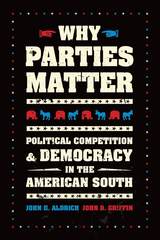 Why Parties Matter: Political Competition and Democracy in the American South
John H. Aldrich and John D. Griffin
University of Chicago Press, 2017 Since the founding of the American Republic, the North and South have followed remarkably different paths of political development. Among the factors that have led to their divergence throughout much of history are differences in the levels of competition among the political parties. While the North has generally enjoyed a well-defined two-party system, the South has tended to have only weakly developed political parties—and at times no system of parties to speak of.
With Why Parties Matter, John H. Aldrich and John D. Griffin make a compelling case that competition between political parties is an essential component of a democracy that is responsive to its citizens and thus able to address their concerns. Tracing the history of the parties through four eras—the Democratic-Whig party era that preceded the Civil War; the post-Reconstruction period; the Jim Crow era, when competition between the parties virtually disappeared; and the modern era—Aldrich and Griffin show how and when competition emerged between the parties and the conditions under which it succeeded and failed. In the modern era, as party competition in the South has come to be widely regarded as matching that of the North, the authors conclude by exploring the question of whether the South is poised to become a one-party system once again with the Republican party now dominant.
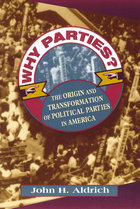 Why Parties?: The Origin and Transformation of Political Parties in America
John H. Aldrich
University of Chicago Press, 1995 Why did the United States develop political parties? How and why do party alignments change? Are the party-centered elections of the past better for democratic politics than the candidate-centered elections of the present? In this landmark book, John Aldrich goes beyond the clamor of arguments over whether American political parties are in resurgence or decline and undertakes a wholesale reexamination of the foundations of the American party system.
Surveying three critical episodes in the development of American political parties—from their formation in the 1790s to the Civil War—Aldrich shows how parties serve to combat three fundamental problems of democracy: how to regulate the number of people seeking public office; how to mobilize voters; and how to achieve and maintain the majorities needed to accomplish goals once in office. Overcoming these obstacles, argues Aldrich, is possible only with political parties.
Aldrich brings this innovative account up to date by looking at the profound changes in the character of political parties since World War II. In the 1960s, he shows, parties started to become candidate-centered organizations that are servants to their office seekers and officeholders. Aldrich argues that this development has revitalized parties, making them stronger, and more vital, with well-defined cleavages and highly effective governing ability.
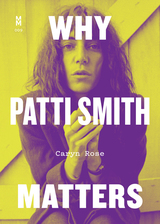 Why Patti Smith Matters
Caryn Rose
University of Texas Press, 2022 Patti Smith arrived in New York City at the end of the Age of Aquarius in search of work and purpose. What she found—what she fostered—was a cultural revolution. Through her poetry, her songs, her unapologetic vocal power, and her very presence as a woman fronting a rock band, she kicked open a door that countless others walked through. No other musician has better embodied the “nothing-to-hide” rawness of punk, nor has any other done more to nurture a place in society for misfits of every stripe. Why Patti Smith Matters is the first book about the iconic artist written by a woman. The veteran music journalist Caryn Rose contextualizes Smith’s creative work, her influence, and her wide-ranging and still-evolving impact on rock and roll, visual art, and the written word. Rose goes deep into Smith’s oeuvre, from her first album, Horses, to acclaimed memoirs operating at a surprising remove from her music. The portrait of a ceaseless inventor, Why Patti Smith Matters rescues punk’s poet laureate from “strong woman” clichés. Of course Smith is strong. She is also a nuanced thinker. A maker of beautiful and challenging things. A transformative artist who has not simply entertained but also empowered millions.
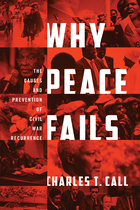 Why Peace Fails: The Causes and Prevention of Civil War Recurrence
Charles T. Call
Georgetown University Press, 2012 Why does peace fail? More precisely, why do some countries that show every sign of having successfully emerged from civil war fall once again into armed conflict? What explains why peace "sticks" after some wars but not others? In this illuminating study, Charles T. Call examines the factors behind fifteen cases of civil war recurrence in Africa, Asia, the Caucasus, and Latin America. He argues that widely touted explanations of civil war—such as poverty, conflict over natural resources, and weak states—are far less important than political exclusion. Call’s study shows that inclusion of former opponents in postwar governance plays a decisive role in sustained peace. Why Peace Fails ultimately suggests that the international community should resist the temptation to prematurely withdraw resources and peacekeepers after a transition from war. Instead, international actors must remain fully engaged with postwar elected governments, ensuring that they make room for former enemies.
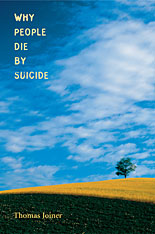 Why People Die by Suicide
Thomas Joiner
Harvard University Press, 2005 In the wake of a suicide, the most troubling questions are invariably the most difficult to answer: How could we have known? What could we have done? And always, unremittingly: Why? Written by a clinical psychologist whose own life has been touched by suicide, this book offers the clearest account ever given of why some people choose to die.
Drawing on extensive clinical and epidemiological evidence, as well as personal experience, Thomas Joiner brings a comprehensive understanding to seemingly incomprehensible behavior. Among the many people who have considered, attempted, or died by suicide, he finds three factors that mark those most at risk of death: the feeling of being a burden on loved ones; the sense of isolation; and, chillingly, the learned ability to hurt oneself. Joiner tests his theory against diverse facts taken from clinical anecdotes, history, literature, popular culture, anthropology, epidemiology, genetics, and neurobiology--facts about suicide rates among men and women; white and African-American men; anorexics, athletes, prostitutes, and physicians; members of cults, sports fans, and citizens of nations in crisis.
The result is the most coherent and persuasive explanation ever given of why and how people overcome life's strongest instinct, self-preservation. Joiner's is a work that makes sense of the bewildering array of statistics and stories surrounding suicidal behavior; at the same time, it offers insight, guidance, and essential information to clinicians, scientists, and health practitioners, and to anyone whose life has been affected by suicide.
 Why People Don’t Trust Government
Joseph S. Nye, Jr.
Harvard University Press, 1997 Confidence in American government has been declining for three decades. Three-quarters of Americans said they trusted the Federal government to do the right thing in 1964. Today, only a quarter do. Why the decline? Is this mistrust a healthy reflection of America's long-lasting skepticism of a strong state? Is mistrust a problem for the future of governance?
Bringing together essays by leading Harvard scholars, this book explores the roots of mistrust. It first examines government's current scope, its actual performance, and citizens' perceptions of its performance. It then assesses many possible explanations that have been offered for the decline of trust, including the end of the Cold War, elevated expectations following World War II, a weakened economy, the effects of globalization, resentment over political scandals, and incompetence of bureaucrats. The book clarifies thinking about the sources of public disaffection.
Mistrust, the contributors find, is largely unrelated to national economic conditions, to challenges of a global economy, to the Cold War, or to bumbling bureaucrats and venal politicians. Rather, they show that the most likely culprits are all around us—an interacting blend of cultural and political conflicts stirred by an increasingly corrosive news media.
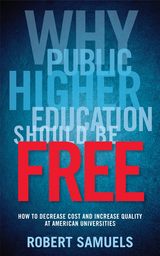 Why Public Higher Education Should Be Free: How to Decrease Cost and Increase Quality at American Universities
Samuels, Robert
Rutgers University Press, 2013 Universities tend to be judged by the test scores of their incoming students and not on what students actually learn once they attend these institutions. While shared tests and surveys have been developed, most schools refuse to publish the results. Instead, they allow such publications as U.S. News & World Report to define educational quality. In order to raise their status in these rankings, institutions pour money into new facilities and extracurricular activities while underfunding their educational programs.
In Why Public Higher Education Should Be Free, Robert Samuels argues that many institutions of higher education squander funds and mislead the public about such things as average class size, faculty-to-student ratios, number of faculty with PhDs, and other indicators of educational quality. Parents and students seem to have little knowledge of how colleges and universities have been restructured over the past thirty years.
Samuels shows how research universities have begun to function as giant investment banks or hedge funds that spend money on athletics and administration while increasing tuition costs and actually lowering the quality of undergraduate education. In order to fight higher costs and lower quality, Samuels suggests, universities must reallocate these misused funds and concentrate on their core mission of instruction and related research.
Throughout the book, Samuels argues that the future of our economy and democracy rests on our ability to train students to be thoughtful participants in the production and analysis of knowledge. If leading universities serve only to grant credentials and prestige, our society will suffer irrevocable harm. Presenting the problem of how universities make and spend money, Samuels provides solutions to make these important institutions less expensive and more vital. By using current resources in a more effective manner, we could even, he contends, make all public higher education free.
 Why Race Matters in South Africa
Michael MacDonald
Harvard University Press, 2006 This book tells the story of how the transition to democracy in South Africa enfranchised blacks politically but without raising most of them from poverty. It shows in detail how the continuing strength of the white establishment forces the leaders of the African National Congress (ANC) to compromise plans for full political and economic transformation. Deferring the economic transformation, the new dispensation nurtures a small black elite. The new elite absorbs the economic interests of the established white elites while continuing to share racial identities with the majority of their countrymen, muffling the divisions between rich whites and poor blacks, thus ensuring political stability in the new South Africa.
Although democratic South Africa is officially "non-racial," the book shows that racial solidarities continue to play a role in the country's political economy. Ironically, racial identities, which ultimately proved the undoing of apartheid, have come to the rescue of contemporary democratic capitalism. The author explains how and why racial solidarities are being revamped, focusing particularly on the role of black economic empowerment, the black bourgeoisie, and how calls to represent the identities of black South Africans are having the effect of substituting the racial interests of black elites for the economic interests of the black poor.
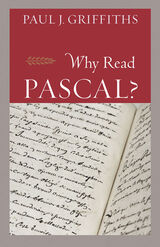 Why Read Pascal?
Paul J. Griffiths
Catholic University of America Press, 2021 Blaise Pascal (1623-1662) is known in the English-speaking world principally for the wager (an argument that it is rational to do what will affect belief in God and irrational not to), and, more generally, for the Pensées, a collection of philosophical and theological fragments of unusual emotional and intellectual intensity collected and published after his death. He thought and wrote, however, about much more than this: mathematics; physics; grace, freedom, and predestination; the nature of the church; the Christian life; what it is to write and read; the order of things; the nature and purpose of human life; and more. He was among the polymaths of the seventeenth century, and among the principal apologists of his time for the Catholic faith, against both its Protestant opponents and its secular critics.
Why Read Pascal? engages all the major topics of Pascal's theological and philosophical writing. It provides discussion of Pascal's literary style, his linked understandings of knowledge and of the various orders of things, his anthropology (with special attention to his presentation of affliction, death, and boredom), his politics, and his understanding of the relation between Christianity and Judaism. Pascal emerges as a literary stylist of a high order, a witty and polemical writer (never have the Jesuits been more thoroughly eviscerated), and, perhaps above all else, as someone concerned to show to Christianity's cultured despisers that the fabric of their own lives implies the truth of Christianity if only they can be brought to look at what their lives are like.
Why Read Pascal? is the first book in English in a generation to engage all the principal themes in Pascal's theology and philosophy. The book takes Pascal seriously as an interlocutor and as a contributor of continuing relevance to Catholic thought; but it also offers criticisms of some among the positions he takes, showing, in doing so, how lively his writing remains for us now.
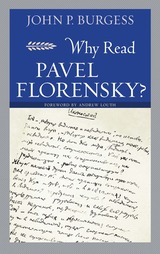 Why Read Pavel Florensky?
John Burgess
Catholic University of America Press, 2024 This book offers an excellent, accessible introduction to the life and thought of Father Pavel Florensky, one of the most prominent religious philosophers of Russia’s highly creative Silver Age at the beginning of the twentieth century. Florensky, an Orthodox priest, died in Stalin’s gulag in 1937. His writings were long suppressed in the Soviet Union, and Western Protestant and Catholic theologians have known little about him.
John Burgess argues that it is time to give Florensky his due. His worldview is as important today as it was during his lifetime: a deep sensitivity to the beauty of the natural world; a conviction that the religious cult—acts of worship and ritual—make human culture possible; and an understanding of the Christian faith as, above all, a way of seeing God’s glorious presence in all of creation.
The book takes a unique approach by examining Florensky not primarily as an academic philosopher but rather as an Orthodox priest and theologian, who speaks out of his personal religious experience to communicate the Christian faith to people who are seeking truth but do not yet know church life. The book makes an original contribution to Florensky scholarship and literature, especially in the United States, where his colleagues Sergei Bulgakov and Nicholas Berdiaev have been better known.
John Burgess is a Protestant theologian who has lived and travelled in Russia, and has visited key places associated with Florensky. The author’s experience, even as an outsider, of Orthodox worship and practice—its liturgical cycles, iconography, seasons of fasting and feasting, and monasteries and holy sites—has enabled him to understand Florensky’s admonition that one must enter into Orthodoxy in order to understand it (and Florensky’s) thinking.
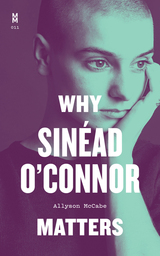 Why Sinéad O'Connor Matters
Allyson McCabe
University of Texas Press, 2023 A stirring defense of Sinéad O’Connor’s music and activism, and an indictment of the culture that cancelled her.
In 1990, Sinéad O’Connor’s video for “Nothing Compares 2 U” turned her into a superstar. Two years later, an appearance on Saturday Night Live turned her into a scandal. For many people—including, for years, the author—what they knew of O’Connor stopped there. Allyson McCabe believes it’s time to reassess our old judgments about Sinéad O’Connor and to expose the machinery that built her up and knocked her down. Addressing triumph and struggle, sound and story, Why Sinéad O’Connor Matters argues that its subject has been repeatedly manipulated and misunderstood by a culture that is often hostile to women who speak their minds (in O’Connor’s case, by shaving her head, championing rappers, and tearing up a picture of the pope on live television). McCabe details O’Connor’s childhood abuse, her initial success, and the backlash against her radical politics without shying away from the difficult issues her career raises. She compares O’Connor to Madonna, another superstar who challenged the Catholic Church, and Prince, who wrote her biggest hit and allegedly assaulted her. A journalist herself, McCabe exposes how the media distorts not only how we see O’Connor but how we see ourselves, and she weighs the risks of telling a story that hits close to home. In an era when popular understanding of mental health has improved and the public eagerly celebrates feminist struggles of the past, it can be easy to forget how O’Connor suffered for being herself. This is the book her admirers and defenders have been waiting for.
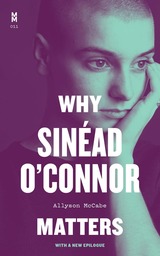 Why Sinéad O'Connor Matters
Allyson McCabe
University of Texas Press, 2023 A stirring defense of Sinéad O’Connor’s music and activism, and an indictment of the culture that cancelled her.
In 1990, Sinéad O’Connor’s video for “Nothing Compares 2 U” turned her into a superstar. Two years later, an appearance on Saturday Night Live turned her into a scandal. For many people—including, for years, the author—what they knew of O’Connor stopped there. Allyson McCabe believes it’s time to reassess our old judgments about Sinéad O’Connor and to expose the machinery that built her up and knocked her down. Addressing triumph and struggle, sound and story, Why Sinéad O’Connor Matters argues that its subject has been repeatedly manipulated and misunderstood by a culture that is often hostile to women who speak their minds (in O’Connor’s case, by shaving her head, championing rappers, and tearing up a picture of the pope on live television). McCabe details O’Connor’s childhood abuse, her initial success, and the backlash against her radical politics without shying away from the difficult issues her career raises. She compares O’Connor to Madonna, another superstar who challenged the Catholic Church, and Prince, who wrote her biggest hit and allegedly assaulted her. A journalist herself, McCabe exposes how the media distorts not only how we see O’Connor but how we see ourselves, and she weighs the risks of telling a story that hits close to home. In an era when popular understanding of mental health has improved and the public eagerly celebrates feminist struggles of the past, it can be easy to forget how O’Connor suffered for being herself. This is the book her admirers and defenders have been waiting for.
Why So Easily . . . Some Family Reasons for the Velvet Revolution: A Sociological Essay
Ivo Možný
Karolinum Press, 2023 A famed essay examines the Velvet Revolution from a sociological perspective.
Thirty-two years after its initial publication, this respected sociological essay, written in the history-making years of 1989 and 1990, is available for the first time in English. The essay tells the story of a despotic Socialist state expropriating the family (and with it the private sphere of life) only to be colonized by the very thing it expropriated forty years later. The essay plunges the reader into the pivotal time of the Velvet Revolution and provides valid explanations for the grassroots causes of the old regime’s downfall, examining the private aspirations and strategies of highly disparate groups of nameless social actors of the old regime that eventually sapped almost everyone of any interest in keeping the regime afloat.
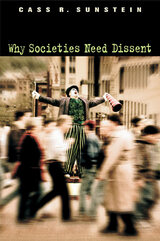 Why Societies Need Dissent
Cass R. Sunstein
Harvard University Press, 2005 In this timely book, Cass R. Sunstein shows that organizations and nations are far more likely to prosper if they welcome dissent and promote openness. Attacking "political correctness" in all forms, Sunstein demonstrates that corporations, legislatures, even presidents are likely to blunder if they do not cultivate a culture of candor and disclosure. He shows that unjustified extremism, including violence and terrorism, often results from failure to tolerate dissenting views. The tragedy is that blunders and cruelties could be avoided if people spoke out.
Sunstein casts new light on freedom of speech, showing that a free society not only forbids censorship but also provides public spaces for dissenters to expose widely held myths and pervasive injustices. He provides evidence about the effects of conformity and dissent on the federal courts. The evidence shows not only that Republican appointees vote differently from Democratic appointees but also that both Republican and Democratic judges are likely to go to extremes if unchecked by opposing views. Understanding the need for dissent illuminates countless social debates, including those over affirmative action in higher education, because diversity is indispensable to learning.
Dissenters are often portrayed as selfish and disloyal, but Sunstein shows that those who reject pressures imposed by others perform valuable social functions, often at their own expense. This is true for dissenters in boardrooms, churches, unions, and academia. It is true for dissenters in the White House, Congress, and the Supreme Court. And it is true during times of war and peace.
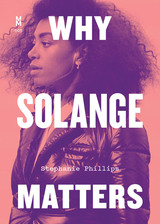 Why Solange Matters
By Stephanie Phillips
University of Texas Press, 2021 Growing up in the shadow of her superstar sister, Solange Knowles became a pivotal musician in her own right. Defying an industry that attempted to bend her to its rigid image of a Black woman, Solange continually experimented with her sound and embarked on a metamorphosis in her art that continues to this day. In Why Solange Matters, Stephanie Phillips chronicles the creative journey of an artist who became a beloved voice for the Black Lives Matter generation. A Black feminist punk musician herself, Phillips addresses not only the unpredictable trajectory of Solange Knowles's career but also how she and other Black women see themselves through the musician's repertoire. First, she traces Solange’s progress through an inflexible industry, charting the artist’s development up to 2016, when the release of her third album, A Seat at the Table, redefined her career. Then, with A Seat at the Table and 2019’s When I Get Home, Phillips describes how Solange embraced activism, anger, Black womanhood, and intergenerational trauma to inform her remarkable art. Why Solange Matters not only cements the place of its subject in the pantheon of world-changing twenty-first century musicians, it introduces its writer as an important new voice.
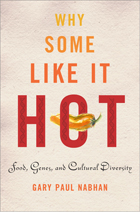 Why Some Like It Hot: Food, Genes, and Cultural Diversity
Gary Paul Nabhan
Island Press, 2004 Do your ears burn whenever you eat hot chile peppers? Does your face immediately flush when you drink alcohol? Does your stomach groan if you are exposed to raw milk or green fava beans? If so, you are probably among the one-third of the world's human population that is sensitive to certain foods due to your genes' interactions with them. Formerly misunderstood as "genetic disorders," many of these sensitivities are now considered to be adaptations that our ancestors evolved in response to the dietary choices and diseases they faced over millennia in particular landscapes. They are liabilities only when we are "out of place," on globalized diets depleted of certain chemicals that triggered adaptive responses in our ancestors. In Why Some Like It Hot, an award-winning natural historian takes us on a culinary odyssey to solve the puzzles posed by "the ghosts of evolution" hidden within every culture and its traditional cuisine. As we travel with Nabhan from Java and Bali to Crete and Sardinia, to Hawaii and Mexico, we learn how various ethnic cuisines formerly protected their traditional consumers from both infectious and nutrition-related diseases. We also bear witness to the tragic consequences of the loss of traditional foods, from adult-onset diabetes running rampant among 100 million indigenous peoples to the historic rise in heart disease among individuals of northern European descent. In this, the most insightful and far-reaching book of his career, Nabhan offers us a view of genes, diets, ethnicity, and place that will forever change the way we understand human health and cultural diversity. This book marks the dawning of evolutionary gastronomy in a way that may save and enrich millions of lives.
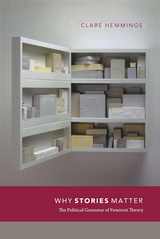 Why Stories Matter: The Political Grammar of Feminist Theory
Clare Hemmings
Duke University Press, 2011 Why Stories Matter is a powerful critique of the stories that feminists tell about the past four decades of Western feminist theory. Clare Hemmings examines the narratives that make up feminist accounts of recent feminist history, highlights the ethical and political dilemmas raised by these narratives, and offers innovative strategies for transforming them. Drawing on her in-depth analysis of feminist journals, such as Signs, Feminist Review, and Feminist Theory, Hemmings argues that feminists portray the development of Western feminism through narratives of progress, loss, and return. Whether celebrating the move beyond unity or identity, lamenting the demise of a feminist political agenda, or proposing a return to a feminist vision from the past, by advancing these narratives feminists construct a mobile “political grammar” too easily adapted for postfeminist agendas. Hemmings insists that it is not enough for feminist theorists to lament what is most often perceived as the co-optation of feminism in global arenas. They must pay attention to the amenability of their own stories, narrative constructs, and grammatical forms to broader discursive uses of gender and feminism if history is not simply to repeat itself. Since citation practices and the mobilization of affect are central to how the narratives of progress, loss, and return persuade readers to suspend disbelief, they are also potential keys to telling the story of feminism’s past, present, and future differently.
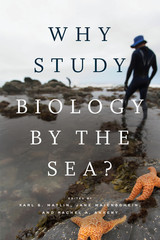 Why Study Biology by the Sea?
Edited by Karl S. Matlin, Jane Maienschein, and Rachel A. Ankeny
University of Chicago Press, 2020 For almost a century and a half, biologists have gone to the seashore to study life. The oceans contain rich biodiversity, and organisms at the intersection of sea and shore provide a plentiful sampling for research into a variety of questions at the laboratory bench: How does life develop and how does it function? How are organisms that look different related, and what role does the environment play?
From the Stazione Zoologica in Naples to the Marine Biological Laboratory in Woods Hole, the Amoy Station in China, or the Misaki Station in Japan, students and researchers at seaside research stations have long visited the ocean to investigate life at all stages of development and to convene discussions of biological discoveries. Exploring the history and current reasons for study by the sea, this book examines key people, institutions, research projects, organisms selected for study, and competing theories and interpretations of discoveries, and it considers different ways of understanding research, such as through research repertoires. A celebration of coastal marine research, Why Study Biology by the Sea? reveals why scientists have moved from the beach to the lab bench and back.
Why Study the Middle Ages?
Kisha G. Tracy
Arc Humanities Press, 2022 The study of the Middle Ages in every aspect of the modern liberal arts—the humanities, STEM, and the social sciences—has significant importance for society and the individual. There is a common belief that the peoples of the past were somehow exempt from (positive, especially) human nature, had less of a sense of morality (by any definition) than we do now, or were unaware of basic human dilemmas or triumphs. Relegating the Middle Ages to "primitive" distances us from close examination of what has not changed in society—or what has, which might not be for the better. Exploring and exploding these (mis)conceptions is essential to experience the benefits of a liberal education.
 Why Surgeons Struggle with Work-Hour Reforms
James E. Coverdill
Vanderbilt University Press, 2021 On July 1, 2003, work-hour reforms were enacted nationally for the roughly 129,000 resident physicians in the United States. The reforms limit weekly work hours (a maximum of eighty per week) and in-hospital call (no more than once every three nights), mandate days free of clinical and educational obligations (one day in seven), and regulate other aspects of resident work life.
Why Surgeons Struggle with Work-Hour Reforms focuses on general surgeons, a historically long-hour specialty, who fiercely opposed the reforms and are among the least compliant. Why do surgeons struggle with the reforms? Why do they continue to work long hours and view the act of doing so as reasonable if not quintessentially professional? Although the analysis is situated in the growing scientific literature on the consequences of fatigue, the authors do not adjudicate between the claims of surgeons and reform advocates about the effects of long work hours on patient or provider safety. Rather, the aim is to explore and explain how aspects of the occupational culture of surgeons and the social organization of surgical training and practice interlock to impede the reforms.
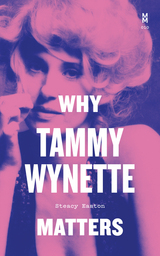 Why Tammy Wynette Matters
Steacy Easton
University of Texas Press, 2023 How Tammy Wynette channeled the conflicts of her life into her music and performance.
With hits such as “Stand By Your Man” and “Golden Ring,” Tammy Wynette was an icon of American domesticity and femininity. But there were other sides to the first lady of country. Steacy Easton places the complications of Wynette’s music and her biography in sharp-edged relief, exploring how she made her sometimes-tumultuous life into her work, a transformation that was itself art. Wynette created a persona of high femininity to match the themes she sang about—fawning devotion, redemption in heterosexual romance, the heartbreak of loneliness. Behind the scenes, her life was marked by persistent class anxieties; despite wealth and fame, she kept her beautician’s license. Easton argues that the struggle to meet expectations of southernness, womanhood, and southern womanhood, finds subtle expression in Wynette’s performance of “Apartment #9”—and it’s because of these vocal subtleties that it came to be called the saddest song ever written. Wynette similarly took on elements of camp and political critique in her artistry, demonstrating an underappreciated genius. Why Tammy Wynette Matters reveals a musician who doubled back on herself, her façade of earnestness cracked by a melodrama that weaponized femininity and upended feminist expectations, while scoring twenty number-one hits.
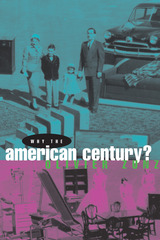 Why the American Century?
Olivier Zunz
University of Chicago Press, 1998 Reinterpreting our country's rise to world power, Olivier Zunz shows how American elites appropriated the twentieth century. Policymakers, corporate managers, engineers, scientists, and social scientists promoted a social contract of abundance and a controversial theory of pluralism. Their efforts created a model of middle class behavior for America and for the rest of the world.
"It should certainly be the task of historians to explain the nation's triumphs as effectively as they have explained its failures, and Zunz in this intelligent, learned and ambitious book suggests a valuable new model for doing so."—Alan Brinkley, Times Literary Supplement
"Zunz is evenhanded in his judgments. . . . His thesis is both imaginative and well grounded in the appropriate sources."—David M. Oshinsky, New York Times Book Review
"Zunz is an innovative and perceptive social critic. He crosses disciplinary boundaries with ease and felicity, and is particularly adept at illustrating large themes with unusual but telling details."—Kent Blaser, American Studies
"An eye-opening introduction to the shaping of modern America."—Foreign Affairs
Why the Beach Boys Matter
By Tom Smucker
University of Texas Press, 2018 Of all the white American pop music groups that hit the charts before the Beatles, only the Beach Boys continued to thrive throughout the British Invasion to survive into the 1970s and beyond. The Beach Boys helped define both sides of the era we broadly call the sixties, split between their early surf, car, and summer pop and their later hippie, counterculture, and ambitious rock. No other group can claim the Ronettes and the Four Seasons as early 1960s rivals; the Mamas and the Papas and Crosby, Stills and Nash as later 1960s rivals; and the Beatles and the Temptations as decade-spanning counterparts. This is the first book to take an honest look at the themes running through the Beach Boys’ art and career as a whole and to examine where they sit inside our culture and politics—and why they still grab our attention.
Why the Chisholm Trail Forks and Other Tales of the Cattle Country
By Andy Adams
University of Texas Press, 1956 This sparkling collection of tales told around Western campfires, written by the master chronicler of the range, is a literary find of great interest and genuine importance. Andy Adams is remembered chiefly as the author of The Log of a Cowboy. Among the most charming features of the Log are the stories the cowhands told around the fires at night when the day's work was done. Similar and equally delightful stories are scattered throughout several other less successful novels, long out of print, while others that never saw publication were found by the editor among Adams' papers. In the present book, Wilson M. Hudson has gathered together these tales of the trail and camp into one volume that surely will delight the hearts of all readers who are interested in the old West.
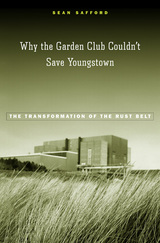 Why the Garden Club Couldn't Save Youngstown: The Transformation of the Rust Belt
Sean Safford
Harvard University Press, 2009 In this book, Sean Safford compares the recent history of Allentown, Pennsylvania, with that of Youngstown, Ohio. Allentown has seen a noticeable rebound over the course of the past twenty years. Facing a collapse of its steel-making firms, its economy has reinvented itself by transforming existing companies, building an entrepreneurial sector, and attracting inward investment. Youngstown was similar to Allentown in its industrial history, the composition of its labor force, and other important variables, and yet instead of adapting in the face of acute economic crisis, it fell into a mean race to the bottom.Challenging various theoretical perspectives on regional socioeconomic change, Why the Garden Club Couldn’t Save Youngstown argues that the structure of social networks among the cities’ economic, political, and civic leaders account for the divergent trajectories of post-industrial regions. It offers a probing historical explanation for the decline, fall, and unlikely rejuvenation of the Rust Belt. Emphasizing the power of social networks to shape action, determine access to and control over information and resources, define the contexts in which problems are viewed, and enable collective action in the face of externally generated crises, this book points toward present-day policy prescriptions for the ongoing plight of mature industrial regions in the U.S. and abroad.
Why the Grateful Dead Matter
Michael Benson
University Press of New England, 2016 In Why the Grateful Dead Matter, veteran writer and lifelong Deadhead Michael Benson argues that the Grateful Dead are not simply a successful rock-and-roll band but a phenomenon central to American culture. He defends the proposition that the Grateful Dead are, in fact, a musical movement as transformative as any -ism in the artistic history of this century and the last. And a lot more fun than most. From the street festivals of Haight-Ashbury to the cross-country acid tests with the Merry Pranksters, and from the sound-and-light show at the Great Pyramid at Giza to the ecstatic outpouring of joy at Soldier Field in the summer of ’15, the Grateful Dead have been at the center of American life, music, and karmic flow for fifty years. In Why the Grateful Dead Matter, Michael Benson brings it all back to life and makes a compelling case for the band’s lasting cultural importance.
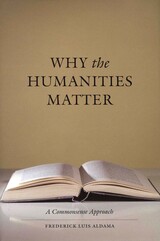 Why the Humanities Matter: A Commonsense Approach
By Frederick Luis Aldama
University of Texas Press, 2008 Is there life after postmodernism? Many claim that it sounded the death knell for history, art, ideology, science, possibly all of Western philosophy, and certainly for the concept of reality itself. Responding to essential questions regarding whether the humanities can remain politically and academically relevant amid this twenty-first-century uncertainty, Why the Humanities Matter offers a guided tour of the modern condition, calling upon thinkers in a variety of disciplines to affirm essential concepts such as truth, goodness, and beauty. Offering a lens of "new humanism," Frederick Aldama also provides a liberating examination of the current cultural repercussions of assertions by such revolutionary theorists as Said, Foucault, Lacan, and Derrida, as well as Latin Americanists such as Sommer and Mignolo. Emphasizing pedagogy and popular culture with equal verve, and writing in colloquial yet multifaceted prose, Aldama presents an enlightening way to explore what "culture" actually does—who generates it and how it shapes our identities—and the role of academia in sustaining it.
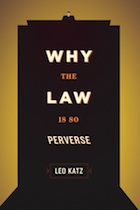 Why the Law Is So Perverse
Leo Katz
University of Chicago Press, 2011 Conundrums, puzzles, and perversities: these are Leo Katz’s stock-in-trade, and in Why the Law Is So Perverse, he focuses on four fundamental features of our legal system, all of which seem to not make sense on some level and to demand explanation. First, legal decisions are essentially made in an either/or fashion—guilty or not guilty, liable or not liable, either it’s a contract or it’s not—but reality is rarely as clear-cut. Why aren’t there any in-between verdicts? Second, the law is full of loopholes. No one seems to like them, but somehow they cannot be made to disappear. Why? Third, legal systems are loath to punish certain kinds of highly immoral conduct while prosecuting other far less pernicious behaviors. What makes a villainy a felony? Finally, why does the law often prohibit what are sometimes called win-win transactions, such as organ sales or surrogacy contracts? Katz asserts that these perversions arise out of a cluster of logical difficulties related to multicriterial decision making. The discovery of these difficulties dates back to Condorcet’s eighteenth-century exploration of voting rules, which marked the beginning of what we know today as social choice theory. Condorcet’s voting cycles, Arrow’s Theorem, Sen’s Libertarian Paradox—every seeming perversity of the law turns out to be the counterpart of one of the many voting paradoxes that lie at the heart of social choice. Katz’s lucid explanations and apt examples show why they resist any easy resolutions. The New York Times Book Review called Katz’s first book “a fascinating romp through the philosophical side of the law.” Why the Law Is So Perverse is sure to provide its readers a similar experience.
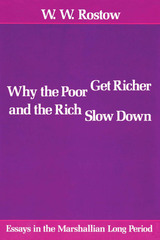 Why the Poor Get Richer and the Rich Slow Down: Essays in the Marshallian Long Period
By W. W. Rostow
University of Texas Press, 1980 Bearing on fundamental issues of economic theory, history, and public policy, this volume elaborates and goes beyond themes enunciated in W. W. Rostow's previous works. The eight essays presented here are unified by the author's insistence that neo-Keynesian and neoclassical theory are an inadequate basis for economic analysis and policy prescription. Changes in technology and in the supply of energy, food, and raw materials, he contends, must be taken into account. The scale and character of the investments required to respond to these changes link his analysis back to conventional income analysis. Rostow outlines in several contexts the framework for a general, disaggregated theory of production and prices that meets this criterion.
The theoretical and historical essays include a review and unification of various long-cycle theories; a formal mathematical model of the Kondratieff cycle; a review of theories relating technology and the price system, including Rostow's own formulation of the appropriate linkage; a lengthy analysis of the pre-1914 relation between money and prices, including a detailed critique of modern monetarist interpretations; and an analysis of the proposition that economic growth assumes an S-shaped path of acceleration and deceleration.
The policy essays include an examination of the links between energy-related investment, full employment, and patterns of regional development in the United States; the discussion of an appropriate framework and procedure for North-South international economic negotiations; and the text of a 1965 talk on inflation that touches on the relations among economics, economists, and the performance of societies as a whole.
Why the Ramones Matter
By Donna Gaines
University of Texas Press, 2018 The central experience of the Ramones and their music is of being an outsider, an outcast, a person who’s somehow defective, and the revolt against shame and self-loathing. The fans, argues Donna Gaines, got it right away, from their own experience of alienation at home, at school, on the streets, and from themselves. This sense of estrangement and marginality permeates everything the Ramones still offer us as artists, and as people. Why the Ramones Matter compellingly makes the case that the Ramones gave us everything; they saved rock and roll, modeled DIY ethics, and addressed our deepest collective traumas, from the personal to the historical.
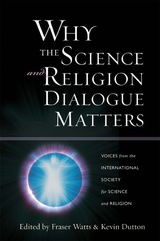 Why the Science and Religion Dialogue Matters: Voices from the International Society for Science and Religion
Fraser Watts
Templeton Press, 2006 Each world faith tradition has its own distinctive relationship with science, and the science-religion dialogue benefits from a greater awareness of what this relationship is. In this book, members of the International Society for Science and Religion (ISSR) offer international and multi-faith perspectives on how new discoveries in science are met with insights regarding spiritual realities.The essays reflect the conviction that “religion and science each proceed best when they’re pursued in dialogue with each other, and also that our fragmented and divided world would benefit more from a stronger dialogue between science and religion.” In Part One, George F. R. Ellis, John C. Polkinghorne, and Holmes Rolston III, each a Templeton Prize winner, discuss their views on why the science and religion dialogue matters. They are joined in Part Two by distinguished theologians Fraser Watts and Philip Clayton, who place the dialogue in an international context; John Polkinghorne’s inaugural address to the ISSR in 2002 is also included. In Part Three, five members of the ISSR look at the distinctive relationships of their faiths to science: •Carl Feit on Judaism •Munawar Anees on Islam •B.V. Subbarayappa on Hinduism •Trinh Xuan Thuan on Buddhism •Heup Young Kim on Asian Christianity George Ellis, the recently elected second president of ISSR, summarizes the contributions of his colleagues. Ronald Cole-Turner then concludes the book with a discussion of the future of the science and religion dialogue.
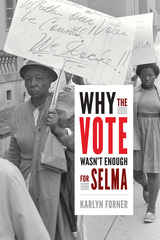 Why the Vote Wasn't Enough for Selma
Karyn Forner
Duke University Press, 2017 In Why the Vote Wasn't Enough for Selma Karlyn Forner rewrites the heralded story of Selma to explain why gaining the right to vote did not bring about economic justice for African Americans in the Alabama Black Belt. Drawing on a rich array of sources, Forner illustrates how voting rights failed to offset decades of systematic disfranchisement and unequal investment in African American communities. Forner contextualizes Selma as a place, not a moment within the civil rights movement —a place where black citizens' fight for full citizenship unfolded alongside an agricultural shift from cotton farming to cattle raising, the implementation of federal divestment policies, and economic globalization. At the end of the twentieth century, Selma's celebrated political legacy looked worlds apart from the dismal economic realities of the region. Forner demonstrates that voting rights are only part of the story in the black freedom struggle and that economic justice is central to achieving full citizenship.
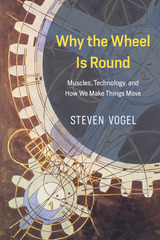 Why the Wheel Is Round: Muscles, Technology, and How We Make Things Move
Steven Vogel
University of Chicago Press, 2016 There is no part of our bodies that fully rotates—be it a wrist or ankle or arm in a shoulder socket, we are made to twist only so far. And yet there is no more fundamental human invention than the wheel—a rotational mechanism that accomplishes what our physical form cannot. Throughout history, humans have developed technologies powered by human strength, complementing the physical abilities we have while overcoming our weaknesses. Providing a unique history of the wheel and other rotational devices—like cranks, cranes, carts, and capstans—Why the Wheel Is Round examines the contraptions and tricks we have devised in order to more efficiently move—and move through—the physical world.
Steven Vogel combines his engineering expertise with his remarkable curiosity about how things work to explore how wheels and other mechanisms were, until very recently, powered by the push and pull of the muscles and skeletal systems of humans and other animals. Why the Wheel Is Round explores all manner of treadwheels, hand-spikes, gears, and more, as well as how these technologies diversified into such things as hand-held drills and hurdy-gurdies. Surprisingly, a number of these devices can be built out of everyday components and materials, and Vogel’s accessible and expansive book includes instructions and models so that inspired readers can even attempt to make their own muscle-powered technologies, like trebuchets and ballista.
Appealing to anyone fascinated by the history of mechanics and technology as well as to hobbyists with home workshops, Why the Wheel Is Round offers a captivating exploration of our common technological heritage based on the simple concept of rotation. From our leg muscles powering the gears of a bicycle to our hands manipulating a mouse on a roller ball, it will be impossible to overlook the amazing feats of innovation behind our daily devices.
 Why the Wild Things Are: Animals in the Lives of Children
Gail F. Melson
Harvard University Press, 2005 Whether they see themselves as King of the Wild Things or protector of Toto, children live in a world filled with animals--both real and imaginary. From Black Beauty to Barney, animal characters romp through children's books, cartoons, videos, and computer games. As Gail Melson tells us, more than three-quarters of all children in America live with pets and are now more likely to grow up with a pet than with both parents. She explores not only the therapeutic power of pet-owning for children with emotional or physical handicaps but also the ways in which zoo and farm animals, and even certain purple television characters, become confidants or teachers for children--and sometimes, tragically, their victims.
Yet perhaps because animals are ubiquitous, what they really mean to children, for better and for worse, has been unexplored territory. Why the Wild Things Are is the first book to examine children's many connections to animals and to explore their developmental significance. What does it mean that children's earliest dreams are of animals? What is the unique gift that a puppy can give to a boy? Drawing on psychological research, history, and children's media, Why the Wild Things Are explores the growth of the human-animal connection. In chapters on children's emotional ties to their pets, the cognitive challenges of animal contacts, animal symbols as building blocks of the self, and pointless cruelty to animals, Melson shows how children's innate interest in animals is shaped by their families and their social worlds, and may in turn shape the kind of people they will become.
 Why They Die: Civilian Devastation in Violent Conflict
Daniel Rothbart and Karina V. Korostelina
University of Michigan Press, 2013 Why do civilians suffer most during times of violent conflict? Why are civilian fatalities as much as eight times higher, calculated globally for current conflicts, than military fatalities? In Why They Die, Daniel Rothbart and Karina V. Korostelina address these questions through a systematic study of civilian devastation in violent conflicts. Pushing aside the simplistic definition of war as a guns-and-blood battle between two militant groups, the authors investigate the identity politics underlying conflicts of many types. During a conflict, all those on the opposite side are perceived as the enemy, with little distinction between soldiers and civilians. As a result, random atrocities and systematic violence against civilian populations become acceptable. Rothbart and Korostelina devote the first half of the book to case studies: deportation of the Crimean Tatars from the Ukraine, genocide in Rwanda, the Lebanon War, and the war in Iraq. With the second half, they present new methodological tools for understanding different types of violent conflict and discuss the implications of these tools for conflict resolution.
 Why They Marched: Untold Stories of the Women Who Fought for the Right to Vote
Susan Ware
Harvard University Press, 2019 “Lively and delightful…zooms in on the faces in the crowd to help us understand both the depth and the diversity of the women’s suffrage movement. Some women went to jail. Others climbed mountains. Visual artists, dancers, and journalists all played a part…Far from perfect, they used their own abilities, defects, and opportunities to build a movement that still resonates today.”
—Laurel Thatcher Ulrich, author of Well-Behaved Women Seldom Make History
“An intimate account of the unheralded activism that won women the right to vote, and an opportunity to celebrate a truly diverse cohort of first-wave feminist changemakers.”
—Ms.
“Demonstrates the steady advance of women’s suffrage while also complicating the standard portrait of it.”
—New Yorker
The story of how American women won the right to vote is usually told through the lives of a few iconic leaders. But movements for social change are rarely so tidy or top-heavy. Why They Marched profiles nineteen women—some famous, many unknown—who worked tirelessly out of the spotlight protesting, petitioning, and insisting on their right to full citizenship.
Ware shows how women who never thought they would participate in politics took actions that were risky, sometimes quirky, and often joyous to fight for a cause that mobilized three generations of activists.
The dramatic experiences of these pioneering feminists—including an African American journalist, a mountain-climbing physician, a southern novelist, a polygamous Mormon wife, and two sisters on opposite sides of the suffrage divide—resonate powerfully today, as a new generation of women demands to be heard.
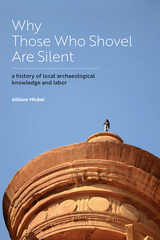 Why Those Who Shovel Are Silent: A History of Local Archaeological Knowledge and Labor
Allison Mickel
University Press of Colorado, 2020 For more than 200 years, archaeological sites in the Middle East have been dug, sifted, sorted, and saved by local community members who, in turn, developed immense expertise in excavation and interpretation and had unparalleled insight into the research process and findings—but who have almost never participated in strategies for recording the excavation procedures or results. Their particular perspectives have therefore been missing from the archaeological record, creating an immense gap in knowledge about the ancient past and about how archaeological knowledge is created.
Why Those Who Shovel Are Silent is based on six years of in-depth ethnographic work with current and former site workers at two major Middle Eastern archaeological sites—Petra, Jordan, and Çatalhöyük, Turkey—combined with thorough archival research. Author Allison Mickel describes the nature of the knowledge that locally hired archaeological laborers exclusively possess about artifacts, excavation methods, and archaeological interpretation, showing that archaeological workers are experts about a wide range of topics in archaeology. At the same time, Mickel reveals a financial incentive for site workers to pretend to be less knowledgeable than they actually are, as they risk losing their jobs or demotion if they reveal their expertise.
Despite a recent proliferation of critical research examining the history and politics of archaeology, the topic of archaeological labor has not yet been substantially examined. Why Those Who Shovel Are Silent employs a range of advanced qualitative, quantitative, and visual approaches and offers recommendations for archaeologists to include more diverse expert perspectives and produce more nuanced knowledge about the past. It will appeal to archaeologists, science studies scholars, and anyone interested in challenging the concept of “unskilled” labor.
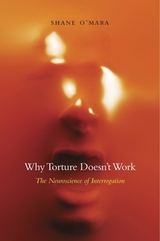 Why Torture Doesn’t Work: The Neuroscience of Interrogation
Shane O'Mara
Harvard University Press, 2015 Torture is banned because it is cruel and inhumane. But as Shane O’Mara writes in this account of the human brain under stress, another reason torture should never be condoned is because it does not work the way torturers assume it does.
In countless films and TV shows such as Homeland and 24, torture is portrayed as a harsh necessity. If cruelty can extract secrets that will save lives, so be it. CIA officers and others conducted torture using precisely this justification. But does torture accomplish what its defenders say it does? For ethical reasons, there are no scientific studies of torture. But neuroscientists know a lot about how the brain reacts to fear, extreme temperatures, starvation, thirst, sleep deprivation, and immersion in freezing water, all tools of the torturer’s trade. These stressors create problems for memory, mood, and thinking, and sufferers predictably produce information that is deeply unreliable—and, for intelligence purposes, even counterproductive. As O’Mara guides us through the neuroscience of suffering, he reveals the brain to be much more complex than the brute calculations of torturers have allowed, and he points the way to a humane approach to interrogation, founded in the science of brain and behavior.
Torture may be effective in forcing confessions, as in Stalin’s Russia. But if we want information that we can depend on to save lives, O’Mara writes, our model should be Napoleon: “It has always been recognized that this way of interrogating men, by putting them to torture, produces nothing worthwhile.”
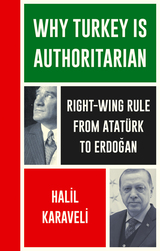 Why Turkey is Authoritarian: Right-Wing Rule from Atatürk to Erdogan
Halil Karaveli
Pluto Press, 2018 For the last century, the Western world has regarded Turkey as a pivotal case of the 'clash of civilisations' between Islam and the West. Why Turkey is Authoritarian offers a radical challenge to this conventional narrative. Halil Karaveli highlights the danger in viewing events in Turkey as a war between a 'westernising' state and the popular masses defending their culture and religion, arguing instead for a class analysis that is largely ignored in the Turkish context.
This book goes beyond cultural categories that overshadow more complex realities when thinking about the 'Muslim world', while highlighting the ways in which these cultural prejudices have informed ideological positions. Karaveli argues that Turkey's culture and identity have disabled the Left, which has largely been unable to transcend these divisions.
This book asks the crucial question: why does democracy continue to elude Turkey? Ultimately, Karaveli argues that Turkish history is instructive for a left that faces the global challenge of a rising populist right, which succeeds in mobilising culture and identity to its own purposes.
Published in partnership with the Left Book Club.
 Why Veterans Run: Military Service in American Presidential Elections, 1789-2016
Jeremy M. Teigen
Temple University Press, 2017 The assumptions that military service helps candidates attract votes—while lacking it harms a candidate’s chances—has been an article of faith since the electoral coronation of George Washington in 1789. Perhaps the most compelling fact driving the perception that military service helps win votes is the large number of veterans who have held public office. Some candidates even exaggerate their military service to persuade voters. However, sufficient counter-examples undermine the idea that military veterans enjoy an advantage when seeking political office. In Why Veterans Run, Jeremy Teigenexplains the tendency of parties to elevate those with armed forces experience to run for high office. He describes the veteran candidate phenomenon by examining the related factors and patterns, showing why different eras have more former generals running and why the number of veterans in election cycles varies. With both quantitative and qualitative analysis, Why Veterans Run investigates each postwar era in U.S. electoral history and elaborates why so many veterans run for office. Teigen also reveals how election outcomes with veteran candidates illuminate the relationship between the military and civilian spheres as well as the preferences of the American electorate.
 Why Wages Don't Fall during a Recession
Truman F. Bewley
Harvard University Press, 1999 A deep question in economics is why wages and salaries don't fall during recessions. This is not true of other prices, which adjust relatively quickly to reflect changes in demand and supply. Although economists have posited many theories to account for wage rigidity, none is satisfactory. Eschewing "top-down" theorizing, Truman Bewley explored the puzzle by interviewing—during the recession of the early 1990s—over three hundred business executives and labor leaders as well as professional recruiters and advisors to the unemployed.
By taking this approach, gaining the confidence of his interlocutors and asking them detailed questions in a nonstructured way, he was able to uncover empirically the circumstances that give rise to wage rigidity. He found that the executives were averse to cutting wages of either current employees or new hires, even during the economic downturn when demand for their products fell sharply. They believed that cutting wages would hurt morale, which they felt was critical in gaining the cooperation of their employees and in convincing them to internalize the managers' objectives for the company. Bewley's findings contradict most theories of wage rigidity and provide fascinating insights into the problems businesses face that prevent labor markets from clearing.
 Why War?: The Cultural Logic of Iraq, the Gulf War, and Suez
Philip Smith
University of Chicago Press, 2005 Why did America invade Iraq? Why do nations choose to fight certain wars and not others? How do we bring ourselves to believe that the sacrifice of our troops is acceptable? For most, the answers to these questions are tied to struggles for power or resources and the machinations of particular interest groups. Philip Smith argues that this realist answer to the age-old "why war?" question is insufficient. Instead, Smith suggests that every war has its roots in the ways we tell and interpret stories.
Comprised of case studies of the War in Iraq, the Gulf War, and the Suez Crisis, Why War? decodes the cultural logic of the narratives that justify military action. Each nation, Smith argues, makes use of binary codes—good and evil, sacred and profane, rational and irrational, to name a few. These codes, in the hands of political leaders, activists, and the media, are deployed within four different types of narratives—mundane, tragic, romantic, or apocalyptic. With this cultural system, Smith is able to radically recast our "war stories" and show how nations can have vastly different understandings of crises as each identifies the relevant protagonists and antagonists, objects of struggle, and threats and dangers.
The large-scale sacrifice of human lives necessary in modern war, according to Smith, requires an apocalyptic vision of world events. In the case of the War in Iraq, for example, he argues that the United States and Britain replicated a narrative of impending global doom from the Gulf War. But in their apocalyptic account they mistakenly made the now seemingly toothless Saddam Hussein once again a symbol of evil by writing him into the story alongside al Qaeda, resulting in the war's contestation in the United States, Britain, and abroad.
Offering an innovative approach to understanding how major wars are packaged, sold, and understood, Why War? will be applauded by anyone with an interest in military history, political science, cultural studies, and communication.
 Why Washington Won't Work: Polarization, Political Trust, and the Governing Crisis
Marc J. Hetherington and Thomas J. Rudolph
University of Chicago Press, 2015 Polarization is at an all-time high in the United States. But contrary to popular belief, Americans are polarized not so much in their policy preferences as in their feelings toward their political opponents: To an unprecedented degree, Republicans and Democrats simply do not like one another. No surprise that these deeply held negative feelings are central to the recent (also unprecedented) plunge in congressional productivity. The past three Congresses have gotten less done than any since scholars began measuring congressional productivity.
In Why Washington Won’t Work, Marc J. Hetherington and Thomas J. Rudolph argue that a contemporary crisis of trust—people whose party is out of power have almost no trust in a government run by the other side—has deadlocked Congress. On most issues, party leaders can convince their own party to support their positions. In order to pass legislation, however, they must also create consensus by persuading some portion of the opposing party to trust in their vision for the future. Without trust, consensus fails to develop and compromise does not occur. Up until recently, such trust could still usually be found among the opposition, but not anymore. Political trust, the authors show, is far from a stable characteristic. It’s actually highly variable and contingent on a variety of factors, including whether one’s party is in control, which part of the government one is dealing with, and which policies or events are most salient at the moment.
Political trust increases, for example, when the public is concerned with foreign policy—as in times of war—and it decreases in periods of weak economic performance. Hetherington and Rudolph do offer some suggestions about steps politicians and the public might take to increase political trust. Ultimately, however, they conclude that it is unlikely levels of political trust will significantly increase unless foreign concerns come to dominate and the economy is consistently strong.
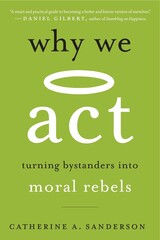 Why We Act: Turning Bystanders into Moral Rebels
Catherine A. Sanderson
Harvard University Press, 2020 A Washington Post Book of the Year
“Makes a powerful argument for building, as early as possible, the ability to stand up for what's right in the face of peer pressure, corrupt authority, and even family apathy.”
—Psychology Today
Why do so few of us intervene when we’re needed—and what would it take to make us step up? We are bombarded every day by reports of bad behavior, from the school yard to the boardroom to the halls of Congress. It’s tempting to blame bad acts on bad people, but sometimes good people do bad things. A social psychologist who has done pioneering research on student behavior on college campuses, Catherine Sanderson points to many ways in which our faulty assumptions about what other people think can paralyze us. Moral courage, it turns out, is not innate. But you can train yourself to stand up for what you believe in, and even small acts can make a big difference. Inspiring and potentially life transforming, Why We Act reveals that while the urge to do nothing is deeply ingrained, even the most hesitant would-be bystander can learn to be a moral rebel.
“From bullying on the playground to sexual harassment in the workplace, perfectly nice people often do perfectly awful things. But why? In this thoughtful and beautifully written book, Sanderson shows how basic principles of social psychology explain such behavior—and how they can be used to change it. A smart and practical guide to becoming a better and braver version of ourselves.”
—Daniel Gilbert, author of Stumbling on Happiness
“Encouraged me to persevere through many moments when it felt far easier to stop trying.”
—Washington Post
“Points to steps all of us can take to become ‘moral rebels’ whose voices can change society for the better.”
—Walter V. Robinson, former editor of the Boston Globe’s Spotlight Team
“Sanderson offers sound advice on how we can become better at doing what we know is right.”
—George Conway, cofounder of The Lincoln Project
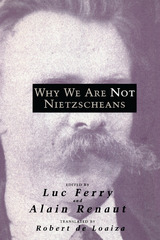 Why We Are Not Nietzscheans
Edited by Luc Ferry and Alain Renaut
University of Chicago Press, 1997 "To think with Nietzsche against Nietzsche." Thus the editors describe the strategy adopted in this volume to soften the destructive effects of Nietzsche's "philosophy with a hammer" on French philosophy since the 1960s. Frustrated by the infinite inclusiveness of deconstructionism, the contributors to this volume seek to renew the Enlightenment quest for rationality.
Though linked by no common dogma, these essays all argue that the "French Nietzsche" transmitted through the deconstructionists must be reexamined in light of the original context in which Nietzsche worked. Each essay questions the viability of Nietzsche's thought in the modern world, variously critiquing his philosophy of history as obsessed with hierarchy, his views on religion and art as myopic and irrational, and his stance on science as hopelessly reactionary.
Contending that we must abandon the Nietzsche propped up as patron saint by French deconstructionists in order to return to reason, these essays will stimulate debate not just among Nietzscheans but among all with a stake in modern French philosophy.
Contributors are Alain Boyer, André Compte-Sponville, Vincent Descombes, Luc Ferry, Robert Legros, Philippe Raynaud, Alain Renault, and Pierre-André Taguieff.
 Why We Can't Have Nice Things: Social Media’s Influence on Fashion, Ethics, and Property
Minh-Ha T. Pham
Duke University Press, 2022 In 2016, social media users in Thailand called out the Paris-based luxury fashion house Balenciaga for copying the popular Thai “rainbow bag,” using Balenciaga’s hashtags to circulate memes revealing the source of the bags’ design. In Why We Can’t Have Nice Things Minh-Ha T. Pham examines the way social media users monitor the fashion market for the appearance of knockoff fashion, design theft, and plagiarism. Tracing the history of fashion antipiracy efforts back to the 1930s, she foregrounds the work of policing that has been tacitly outsourced to social media. Despite the social media concern for ethical fashion and consumption and the good intentions behind design policing, Pham shows that it has ironically deepened forms of social and market inequality, as it relies on and reinforces racist and colonial norms and ideas about what constitutes copying and what counts as creativity. These struggles over ethical fashion and intellectual property, Pham demonstrates, constitute deeper struggles over the colonial legacies of cultural property in digital and global economies.
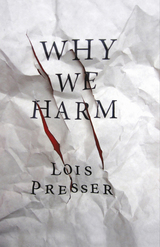 Why We Harm
Presser, Lois
Rutgers University Press, 2013 2014 Choice Outstanding Academic Title
Criminologists are primarily concerned with the analysis of actions that violate existing laws. But a growing number have begun analyzing crimes as actions that inflict harm, regardless of the applicability of legal sanctions. Even as they question standard definitions of crime as law-breaking, scholars of crime have few theoretical frameworks with which to understand the etiology of harmful action.
In Why We Harm, Lois Presser scrutinizes accounts of acts as diverse as genocide, environmental degradation, war, torture, terrorism, homicide, rape, and meat-eating in order to develop an original theoretical framework with which to consider harmful actions and their causes. In doing so, this timely book presents a general theory of harm, revealing the commonalities between actions that impose suffering and cause destruction.
Harm is built on stories in which the targets of harm are reduced to one-dimensional characters—sometimes a dangerous foe, sometimes much more benign, but still a projection of our own concerns and interests. In our stories of harm, we are licensed to do the harmful deed and, at the same time, are powerless to act differently. Chapter by chapter, Presser examines statements made by perpetrators of a wide variety of harmful actions. Appearing vastly different from one another at first glance, Presser identifies the logics they share that motivate, legitimize, and sustain them. From that point, she maps out strategies for reducing harm.
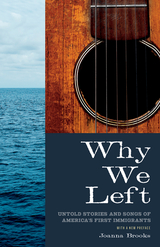 Why We Left: Untold Stories and Songs of America's First Immigrants
Joanna Brooks
University of Minnesota Press, 2024 A grounded, tender, and mournful reckoning with the catastrophes that launched poor, white Anglos into their role as itinerant foot soldiers for modern imperialism—now in paperback with a new preface
Joanna Brooks’s ancestors were among the early waves of emigrants to leave England for North America. For generations, they lived hardscrabble lives, eking out subsistence in one place after another as they continually moved west in search of a better life. Why, Brooks wondered, did her people and countless other poor English subjects abandon their homeland for such unremitting hardship? The question leads her on a journey through an obscure dimension of American history. Why We Left reveals the violence and dislocation that propelled seventeenth- and eighteenth-century working-class English emigration, presenting a powerful restorying of how we arrived at our present moment of precarity and rootlessness. Following American folk ballads back across the Atlantic to find histories of economic displacement, environmental destruction, and social betrayal at the heart of the early Anglo-American migrant experience, Brooks offers a scholarly and personal account of the intergenerational traumas that shape the history of white Anglos on Turtle Island. She shares folk ballads such as “Edward,” which reveals the influence of deforestation on the dislocation of early Anglo-American peasant immigrants, and “The House Carpenter’s Wife,” which emphasizes the impact of economic instability and the colonial enterprise on women. From these ballads, tragic and heartrending, Brooks uncovers an archaeology of the worldviews of America’s earliest immigrants. This tenth-anniversary edition includes a new preface and develops a haunting historical perspective on the ancestors we thought we knew.
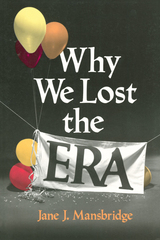 Why We Lost the ERA
Jane J. Mansbridge
University of Chicago Press, 1986 The classic account of how the Equal Rights Amendment failed, and what that means for democratic politics and equality.
In March 1972 the Equal Rights Amendment to the United States Constitution-the ERA-passed the Senate of the United States with a vote of 84 to 8, seventeen votes more than the two-thirds required for constitutional amendments. In the ensuing ten years, a majority of Americans consistently told interviewers that they favored this amendment to the Constitution. Yet on June 30, 1982, the deadline for ratifying the amendment passed with only thirty-five of the required thirty-eight states having ratified.
How did this happen? In How We Lost the ERA, political scientist Jane J. Mansbridge tells the story of the ERA's rise and fall, revealing self-defeating, contradictory forces within the movement supporting the amendment and how those contributed to its demise. The surprising challenges Mansbridge uncovers here remain salient to political struggles and democratic theory today.
 Why We Lost the Sex Wars: Sexual Freedom in the #MeToo Era
Lorna N. Bracewell
University of Minnesota Press, 2021 Reexamining feminist sexual politics since the 1970s—the rivalries and the remarkable alliances
Since the historic #MeToo movement materialized in 2017, innumerable survivors of sexual assault and misconduct have broken their silence and called out their abusers publicly—from well-known celebrities to politicians and high-profile business leaders. Not surprisingly, conservatives quickly opposed this new movement, but the fact that “sex positive” progressives joined in the opposition was unexpected and seldom discussed. Why We Lost the Sex Wars explores how a narrow set of political prospects for resisting the use of sex as a tool of domination came to be embraced across this broad swath of the political spectrum in the contemporary United States. To better understand today’s multilayered sexual politics, Lorna N. Bracewell offers a revisionist history of the “sex wars” of the 1970s, ’80s, and ’90s. Rather than focusing on what divided antipornography and sex-radical feminists, Bracewell highlights significant points of contact and overlap between these rivals, particularly the trenchant challenges they offered to the narrow and ambivalent sexual politics of postwar liberalism. Bracewell leverages this recovered history to illuminate in fresh and provocative ways a range of current phenomena, including recent controversies over trigger warnings, the unimaginative politics of “sex-positive” feminism, and the rise of carceral feminism. By foregrounding the role played by liberal concepts such as expressive freedom and the public/private divide as well as the long-neglected contributions of Black and “Third World” feminists, Bracewell upends much of what we think we know about the sex wars and makes a strong case for the continued relevance of these debates today. Why We Lost the Sex Wars provides a history of feminist thinking on topics such as pornography, commercial sex work, LGBTQ+ identities, and BDSM, as well as discussions of such notable figures as Patrick Califia, Alan Dershowitz, Andrea Dworkin, Elena Kagan, Audre Lorde, Catharine MacKinnon, Cherríe Moraga, Robin Morgan, Gayle Rubin, Nadine Strossen, Cass Sunstein, and Alice Walker.
Why We Make Art: And Why it is Taught
Richard Hickman
Intellect Books, 2010 Governments around the world spend millions on art and cultural institutions, evidence of a basic human need for what the author refers to as “creating aesthetic significance.” Yet what function or purpose does art satisfy in today’s society? In this thorough and accessible text, Richard Hickman rejects the current vogue for social and cultural accounts of the nature of art-making in favor of a largely psychological approach aimed at addressing contemporary developmental issues in art education. Bringing to bear current ideas about evolutionary psychology, this second edition will be an important resource for anyone interested in arts education.
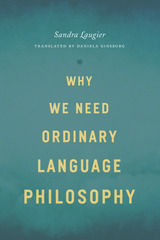 Why We Need Ordinary Language Philosophy
Sandra Laugier
University of Chicago Press, 2013 Now in paperback, Sandra Laugier's reconsideration of analytic philosophy and ordinary language.
Sandra Laugier has long been a key liaison between American and European philosophical thought, responsible for bringing American philosophers such as Ralph Waldo Emerson, Henry David Thoreau, and Stanley Cavell to French readers—but until now her books have never been published in English. Why We Need Ordinary Language Philosophy rights that wrong with a topic perfect for English-language readers: the idea of analytic philosophy. Focused on clarity and logical argument, analytic philosophy has dominated the discipline in the United States, Australia, and Britain over the past one hundred years, and it is often seen as a unified, coherent, and inevitable advancement. Laugier questions this assumption, rethinking the very grounds that drove analytic philosophy to develop and uncovering its inherent tensions and confusions. Drawing on J. L. Austin and the later works of Ludwig Wittgenstein, she argues for the solution provided by ordinary language philosophy—a philosophy that trusts and utilizes the everyday use of language and the clarity of meaning it provides—and in doing so offers a major contribution to the philosophy of language and twentieth- and twenty-first-century philosophy as a whole.
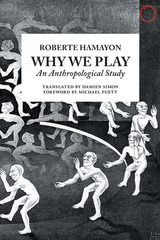 Why We Play: An Anthropological Study
Roberte Hamayon
HAU, 2015 Whether it’s childhood make-believe, the theater, sports, or even market speculation, play is one of humanity’s seemingly purest activities: a form of entertainment and leisure and a chance to explore the world and its possibilities in an imagined environment or construct. But as Roberte Hamayon shows in this book, play has implications that go even further than that. Exploring play’s many dimensions, she offers an insightful look at why play has become so ubiquitous across human cultures.
Hamayon begins by zeroing in on Mongolia and Siberia, where communities host national holiday games similar to the Olympics. Within these events Hamayon explores the performance of ethical values and local identity, and then she draws her analysis into larger ideas examinations of the spectrum of play activities as they can exist in any culture. She explores facets of play such as learning, interaction, emotion, strategy, luck, and belief, and she emphasizes the crucial ambiguity between fiction and reality that is at the heart of play as a phenomenon. Revealing how consistent and coherent play is, she ultimately shows it as a unique modality of action that serves an invaluable role in the human experience.
WHY WE READ FICTION: Theory of Mind and the Novel
Lisa Zunshine
Ohio State University Press, 2006 Why We Read Fiction offers a lucid overview of the most exciting area of research in contemporary cognitive psychology known as “Theory of Mind” and discusses its implications for literary studies. It covers a broad range of fictional narratives, from Richardson’s Clarissa, Dostoyevski’s Crime and Punishment, and Austen’s Pride and Prejudice to Woolf’s Mrs. Dalloway, Nabokov’s Lolita, and Hammett’s The Maltese Falcon. Zunshine’s surprising new interpretations of well-known literary texts and popular cultural representations constantly prod her readers to rethink their own interest in fictional narrative. Written for a general audience, this study provides a jargon-free introduction to the rapidly growing interdisciplinary field known as cognitive approaches to literature and culture.
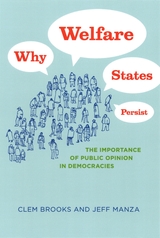 Why Welfare States Persist: The Importance of Public Opinion in Democracies
Clem Brooks and Jeff Manza
University of Chicago Press, 2007 The world’s richer democracies all provide such public benefits as pensions and health care, but why are some far more generous than others? And why, in the face of globalization and fiscal pressures, has the welfare state not been replaced by another model? Reconsidering the myriad issues raised by such pressing questions, Clem Brooks and Jeff Manza contend here that public opinion has been an important, yet neglected, factor in shaping welfare states in recent decades.
Analyzing data on sixteen countries, Brooks and Manza find that the preferences of citizens profoundly influence the welfare policies of their governments and the behavior of politicians in office. Shaped by slow-moving forces such as social institutions and collective memories, these preferences have counteracted global pressures that many commentators assumed would lead to the welfare state’s demise. Moreover, Brooks and Manza show that cross-national differences in popular support help explain why Scandinavian social democracies offer so much more than liberal democracies such as the United States and the United Kingdom.
Significantly expanding our understanding of both public opinion and social policy in the world’s most developed countries, this landmark study will be essential reading for scholars of political economy, public opinion, and democratic theory.
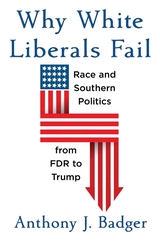 Why White Liberals Fail: Race and Southern Politics from FDR to Trump
Anthony J. Badger
Harvard University Press, 2022 It’s not the economy, stupid: How liberal politicians’ faith in the healing powers of economic growth—and refusal to address racial divisions—fueled reactionary politics across the South.
From FDR to Clinton, charismatic Democratic leaders have promised a New South—a model of social equality and economic opportunity that is always just around the corner. So how did the region become the stronghold of conservative Republicans in thrall to Donald Trump? After a lifetime studying Southern politics, Anthony Badger has come to a provocative conclusion: white liberals failed because they put their faith in policy solutions as an engine for social change and were reluctant to confront directly the explosive racial politics dividing their constituents.
After World War II, many Americans believed that if the edifice of racial segregation, white supremacy, and voter disfranchisement could be dismantled across the South, the forces of liberalism would prevail. Hopeful that economic modernization and education would bring about gradual racial change, Southern moderates were rattled when civil rights protest and federal intervention forced their hand. Most were fatalistic in the face of massive resistance. When the end of segregation became inevitable, it was largely driven by activists and mediated by Republican businessmen.
Badger follows the senators who refused to sign the Southern Manifesto and rejected Nixon’s Southern Strategy. He considers the dilemmas liberals faced across the South, arguing that their failure cannot be blamed simply on entrenched racism. Conservative triumph was not inevitable, he argues, before pointing to specific false steps and missed opportunities.
Could the biracial coalition of low-income voters that liberal politicians keep counting on finally materialize? Badger sees hope but urges Democrats not to be too complacent.
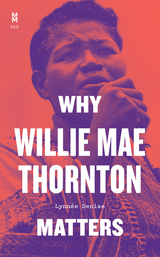 Why Willie Mae Thornton Matters
Lynnée Denise
University of Texas Press, 2023 Finalist, 2024 Lesbian Memoir/Biography, Lambda Literary Award for Arts and Culture
Winner — Walter & Lillian Lowenfels Criticism Award, 45th Annual American Book Awards, Before Columbus Foundation
A queer, Black “biography in essays” about the performer who gave us “Hound Dog,” “Ball and Chain,” and other songs that changed the course of American music.
Born in Alabama in 1926, raised in the church, appropriated by white performers, buried in an indigent’s grave—Willie Mae “Big Mama” Thornton's life events epitomize the blues—but Lynnée Denise pushes past the stereotypes to read Thornton’s life through a Black, queer, feminist lens and reveal an artist who was an innovator across her four-decade-long career. Why Willie Mae Thornton Matters “samples” elements of Thornton’s art—and, occasionally, the author’s own story—to create “a biography in essays” that explores the life of its subject as a DJ might dig through a crate of records. Denise connects Thornton’s vaudevillesque performances in Sammy Green’s Hot Harlem Revue to the vocal improvisations that made “Hound Dog” a hit for Peacock Records (and later for Elvis Presley), injecting music criticism into what’s often framed as a cautionary tale of record-industry racism. She interprets Thornton’s performing in men’s suits as both a sly, Little Richard–like queering of the Chitlin Circuit and a simple preference for pants over dresses that didn’t have a pocket for her harmonica. Most radical of all, she refers to her subject by her given name rather than "Big Mama," a nickname bestowed upon her by a white man. It's a deliberate and crucial act of reclamation, because in the name of Willie Mae Thornton is the sound of Black musical resilience.
 Why Would Anyone Do That?: Lifestyle Sport in the Twenty-First Century
Stephen C. Poulson
Rutgers University Press, 2016 Triathlons, such as the famously arduous Ironman Triathlon, and “extreme” mountain biking—hair-raising events held over exceedingly dangerous terrain—are prime examples of the new “lifestyle sports” that have grown in recent years from oddball pursuits, practiced by a handful of characters, into multi-million-dollar industries. In Why Would Anyone Do That? sociologist Stephen C. Poulson offers a fascinating exploration of these new and physically demanding sports, shedding light on why some people find them so compelling. Drawing on interviews with lifestyle sport competitors, on his own experience as a participant, on advertising for lifestyle sport equipment, and on editorial content of adventure sport magazines, Poulson addresses a wide range of issues. He notes that these sports are often described as “authentic” challenges which help keep athletes sane given the demands they confront in their day-to-day lives. But is it really beneficial to “work” so hard at “play?” Is the discipline required to do these sports really an expression of freedom, or do these sports actually impose extraordinary degrees of conformity upon these athletes? Why Would Anyone Do That? grapples with these questions, and more generally with whether lifestyle sport should always be considered “good” for people. Poulson also looks at what happens when a sport becomes a commodity—even a sport that may have begun as a reaction against corporate and professional sport—arguing that commodification inevitably plays a role in determining who plays, and also how and why the sport is played. It can even help provide the meaning that athletes assign to their participation in the sport. Finally, the book explores the intersections of race, class, and gender with respect to participation in lifestyle and endurance sports, noting in particular that there is a near complete absence of people of color in most of these contests. In addition, Poulson examines how concepts of masculinity in triathlons have changed as women’s roles in this sport increase.
 Why Would Anyone Wear That?: Fascinating Fashion Facts
Celia E. Stall-Meadows
Intellect Books, 2013 Bustles. Tight-laced Corsets. Caged crinolines that encased the hapless wearer in hoops of steel. Why would anyone want to wear such things? Yet, you can be certain that no lady of the Victorian upper class would choose to leave home without them—and she’d complete her look with a feather- and flower-festooned bonnet as befit the latest fashion.
With a blend of wisdom and wit, Why Would Anyone Wear That? explores extreme fashions from around the world. The Victorian era was by no means alone in strange sartorial choices. Throughout history, men and women have turned to clothing and accessories to adorn and accentuate parts of the body. Some of the fashions, like bloomers, were surprisingly functional. Others, like powdered wigs and hobble skirts, were inconvenient and uncomfortable. And a few particularly painful practices could even permanently disfigure the wearer, like brass coils worn in Burma to lengthen the neck and the custom of binding of women’s feet to fit tiny lotus slippers in Song dynasty China. Presenting dozens of the most peculiar fashions, including shoes, hats, jewelry, undergarments, and outerwear, the book provides insightful commentary, placing the garments and accessories in the proper historical, social, and cultural context.
If you’ve ever wondered why the codpiece was created or the leisure suit went out of style, this book will answer that question and many more. Fully illustrated and packed with fun facts, Why Would Anyone Wear That? introduces readers to the fascinating stories behind some of the world’s weirdest fashions.
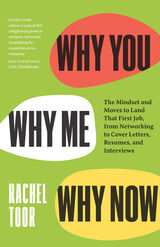 Why You, Why Me, Why Now: The Mindset and Moves to Land That First Job, from Networking to Cover Letters, Resumes, and Interviews
Rachel Toor
University of Chicago Press, 2024 A clear, accessible, and fun guide on everything it takes to land a job.
Searching for a job can be hard and demoralizing work. In Why You, Why Me, Why Now, Rachel Toor delivers some good news. The most important thing is within your control—a mindset that shows you know the goals of the organization you want to work for and that you’re ready and eager to contribute. Toor provides, with compassion and enthusiasm, strategies to make it easy for hiring managers to say “yes.” Through useful and funny anecdotes, she offers advice from professionals across industries and focuses on the attitude applicants can adopt to find success. Revealing traits employers seek, Toor shows how to craft winning cover letters, ways to tailor resumes for each job, and practical tips to get past AI screening. She also explains how to use LinkedIn and gives tips on preparing for interviews. Throughout, the book features Toor’s notes on writing well to help in landing a first job and beyond. Encouraging, entertaining, and blunt, this is a job-search guide like no other.
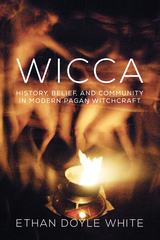 Wicca: History, Belief, and Community in Modern Pagan Witchcraft
Ethan Doyle White
Sussex Academic Press, 2022 The past century has born witness to a growing interest in the belief systems of ancient Europe, with an array of contemporary Pagan groups claiming to revive these old ways for the needs of the modern world. By far the largest and best known of these Paganisms has been Wicca, a new religious movement that can now count hundreds of thousands of adherents worldwide. Emerging from the occult milieu of mid twentieth-century Britain, Wicca was first presented as the survival of an ancient pre-Christian Witch-Cult, whose participants assembled in covens to venerate their Horned God and Mother Goddess, to celebrate seasonal festivities, and to cast spells by the light of the full moon. Spreading to North America, where it diversified under the impact of environmentalism, feminism, and the 1960s counter-culture, Wicca came to be presented as a Goddess-centred nature religion, in which form it was popularised by a number of best-selling authors and fictional television shows. Today, Wicca is a maturing religious movement replete with its own distinct world-view, unique culture, and internal divisions. This book represents the first published academic introduction to be exclusively devoted to this fascinating faith, exploring how this Witches' Craft developed, what its participants believe and practice, and what the Wiccan community actually looks like. In doing so it sweeps away widely-held misconceptions and offers a comprehensive overview of this religion in all of its varied forms. Drawing upon the work of historians, anthropologists, sociologists, and scholars of religious studies, as well as the writings of Wiccans themselves, it provides an original synthesis that will be invaluable for anyone seeking to learn about the blossoming religion of modern Pagan Witchcraft.
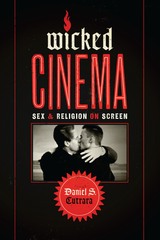 Wicked Cinema: Sex and Religion on Screen
By Daniel Cutrara
University of Texas Press, 2014 From struggles over identity politics in the 1990s to current concerns about a clash of civilizations between Islam and Christianity, culture wars play a prominent role in the twenty-first century. Movies help to define and drive these conflicts by both reflecting and shaping cultural norms, as well as showing what violates those norms. In this pathfinding book, Daniel S. Cutrara employs queer theory, cultural studies, theological studies, and film studies to investigate how cinema represents and often denigrates religion and religious believers—an issue that has received little attention in film studies, despite the fact that faith in its varied manifestations is at the heart of so many cultural conflicts today. Wicked Cinema examines films from the United States, Europe, and the Middle East, including Crimes and Misdemeanors, The Circle, Breaking the Waves, Closed Doors, Agnes of God, Priest, The Last Temptation of Christ, and Dogma. Central to all of the films is their protagonists’ struggles with sexual transgression and traditional belief systems within Christianity, Judaism, or Islam—a struggle, Cutrara argues, that positions believers as the Other and magnifies the abuses of religion while ignoring its positive aspects. Uncovering a hazardous web of ideological assumptions informed by patriarchy, the spirit/flesh dichotomy, and heteronormativity, Cutrara demonstrates that ultimately these films emphasize the “Otherness” of the faithful through a variety of strategies commonly used to denigrate the queer, from erasing their existence, to using feminization to make them appear weak, to presenting them as dangerous fanatics.
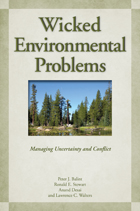 Wicked Environmental Problems: Managing Uncertainty and Conflict
Peter J. Balint, Ronald E. Stewart, Anand Desai, and Lawrence C. Walters
Island Press, 2011 "Wicked" problems are large-scale, long-term policy dilemmas in which multiple and compounding risks and uncertainties combine with sharply divergent public values to generate contentious political stalemates; wicked problems in the environmental arena typically emerge from entrenched conflicts over natural resource management and over the prioritization of economic and conservation goals more generally. This new book examines past experience and future directions in the management of wicked environmental problems and describes new strategies for mitigating the conflicts inherent in these seemingly intractable situations. The book: - reviews the history of the concept of wicked problems
- examines the principles and processes that managers have applied
- explores the practical limitations of various approaches
Most important, the book reviews current thinking on the way forward, focusing on the implementation of "learning networks," in which public managers, technical experts, and public stakeholders collaborate in decision-making processes that are analytic, iterative, and deliberative. Case studies of forest management in the Sierra Nevada, restoration of the Florida Everglades, carbon trading in the European Union, and management of the Ngorongoro Conservation Area in Tanzania are used to explain concepts and demonstrate practical applications. Wicked Environmental Problems offers new approaches for managing environmental conflicts and shows how managers could apply these approaches within common, real-world statutory decision-making frameworks. It is essential reading for anyone concerned with managing environmental problems.
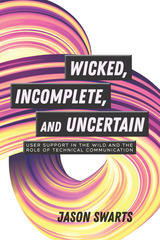 Wicked, Incomplete, and Uncertain: User Support in the Wild and the Role of Technical Communication
Jason Swarts
Utah State University Press, 2018 Technology users are compulsive integrators, hybridizers, and bricoleurs, whose unpredictable applications and innovations create a challenging task for support-documentation writers. In Wicked, Incomplete, and Uncertain, Jason Swarts shows how to document technologies that may hybridize into forms that not even their designers would have anticipated and offers insight into the evolving role of a technical writer in an age of increasing user reliance on YouTube tutorials, message boards, and other resources for guidance.
Technical writers traditionally create large volumes of idealized tasks and procedures in help documentation, but this is no longer the only approach, or even the best approach. Shifting responsibility for user support to users via crowdsourcing is a risky alternative. Just as with other mass-collaborative enterprises, contributors to a forum may not be aware of the kind of knowledge they are creating or how their contributions connect with those made by others. Wicked, Incomplete, and Uncertain describes the kinds of writing and help practices in which user forums engage, why users seem to find these forums credible and appealing, and what companies can learn about building user communities to support this form of assistance.
Through investigation of user-forum activities, Swarts identifies a new set of contributions that technical communicators can make—not only by creating content but also by curating content, shaping conversations, feeding information back into the user community, and opening channels of discovery and knowledge creation that can speak to users and software developers alike
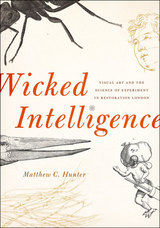 Wicked Intelligence: Visual Art and the Science of Experiment in Restoration London
Matthew C. Hunter
University of Chicago Press, 2013 In late seventeenth-century London, the most provocative images were produced not by artists, but by scientists. Magnified fly-eyes drawn with the aid of microscopes, apparitions cast on laboratory walls by projection machines, cut-paper figures revealing the “exact proportions” of sea monsters—all were created by members of the Royal Society of London, the leading institutional platform of the early Scientific Revolution. Wicked Intelligence reveals that these natural philosophers shaped Restoration London’s emergent artistic cultures by forging collaborations with court painters, penning art theory, and designing triumphs of baroque architecture such as St Paul’s Cathedral. Matthew C. Hunter brings to life this archive of experimental-philosophical visualization and the deft cunning that was required to manage such difficult research. Offering an innovative approach to the scientific image-making of the time, he demonstrates how the Restoration project of synthesizing experimental images into scientific knowledge, as practiced by Royal Society leaders Robert Hooke and Christopher Wren, might be called “wicked intelligence.” Hunter uses episodes involving specific visual practices—for instance, concocting a lethal amalgam of wax, steel, and sulfuric acid to produce an active model of a comet—to explore how Hooke, Wren, and their colleagues devised representational modes that aided their experiments. Ultimately, Hunter argues, the craft and craftiness of experimental visual practice both promoted and menaced the artistic traditions on which they drew, turning the Royal Society projects into objects of suspicion in Enlightenment England. The first book to use the physical evidence of Royal Society experiments to produce forensic evaluations of how scientific knowledge was generated, Wicked Intelligence rethinks the parameters of visual art, experimental philosophy, and architecture at the cusp of Britain’s imperial power and artistic efflorescence.
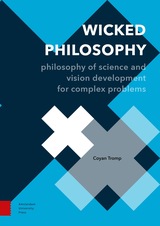 Wicked Philosophy: Philosophy of Science and Vision Development for Complex Problems
Coyan Tromp
Amsterdam University Press, 2018 Wicked Philosophy. Philosophy of Science and Vision Development for Complex Problems provides an overview of the philosophy of the natural sciences, the social sciences and the humanities, and explores how insights from these three domains can be integrated to help find solutions for the complex, ‘wicked’ problems we are currently facing. The core of a new science-based vision is complexity thinking, offering a meta-position for navigating alternative paradigms and making informed choices of resources for projects involving complex problems. The book also brings design thinking into problem-solving and teaching, fostering construction of an integrative approach that bridges structure and action amplified by transdisciplinary engagement of stakeholders in society. It is not always easy to set up a succesfull philosophy course for students in other programs. The author of Wicked Philosophy, Coyan Tromp, has experience in designing courses on philosophy of science for various Bachelor programs. You can find two examples here.The first example is for an introductory course to an Interdisciplinary Philosophy of Science, which is specifically suited for programs focusing at complex problems such as sustainability or health issues. The second example is a program for a course on (Philosophy of) Science in a Post-Truth Society. More examples are also available (e.g. a program in which Philosophy of Science is combined with Vision Development and Future Scenarios). In addition to the program, the author can also provide a workbook with lesson plans, both for online and on campus settings as well as additional literature suggestions for Dutch and French programmes. Please contact us at marketing@aup.nl for questions or extra material.
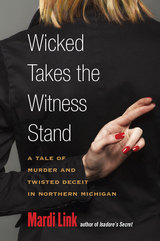 Wicked Takes the Witness Stand: A Tale of Murder and Twisted Deceit in Northern Michigan
Mardi Link
University of Michigan Press, 2015 On a bitterly cold afternoon in December 1986, a Michigan State trooper found the frozen body of Jerry Tobias in the bed of his pickup truck. The 31-year-old oil field worker and small-time drug dealer was curled up on his side on the truck’s bare metal, pressed against the tailgate, clad only in jeans, a checkered shirt, and cowboy boots. Inside the cab of the truck was a fresh package of expensive steaks from a local butcher shop—the first lead in a case that would be quickly lost in a thicket of bungled forensics, shady prosecution, and a psychopathic star witness out for revenge. Award-winning author Mardi Link’s third book of Michigan true crime, Wicked Takes the Witness Stand, unravels this mysterious and still unsolved case that sucked state police and local officials into a morass of perjury and cover-up and ultimately led to the separate conviction and imprisonment of five innocent men. This unbelievable story will leave the reader shocked and aching for justice.
Wicked Times: SELECTED POEMS
Aaron Kramer
University of Illinois Press, 2004 This is the collected work of a major, versatile American poet passionately engaged with everything from the Holocaust and the Spanish Civil War to his love for New York City and his wife. The editors argue that his long poem sequence, Denmark Vesey, stands as the most ambitious poem about African American history ever written by a white American. Wicked Times includes previously unpublished poems and the first detailed account of Kramer's life, along with photos and extensive explanatory notes.
Wide Area Monitoring of Interconnected Power Systems
Arturo Román Messina
The Institution of Engineering and Technology, 2015 This book provides a compact yet comprehensive treatment of advanced data-driven signal processing techniques for the analysis and characterization of both ambient power system data and transient oscillations resulting from major disturbances. Inspired by recent developments in multi-sensor data fusion, multi-temporal data assimilation techniques for power system monitoring are proposed and tested in the context of modern wide-area monitoring system architectures. Recent advances in understanding and modeling nonlinear, time-varying power system processes are reviewed and factors affecting the performance these techniques are discussed.
Wide Area Monitoring of Interconnected Power Systems
Arturo Román Messina
The Institution of Engineering and Technology, 2022 Power systems are becoming increasingly complex, handling rising shares of distributed intermittent renewable generation, EV charging stations, and storage. To ensure power availability and quality, the grid needs to be monitored as a whole, by wide area monitoring (WAM), not just in small sections separately. Parameter oscillations need to be detected and acted upon. This requires sensors, data assimilation and visualization, comparison with models, modelling, and system architectures for different grid types.
Wide Area Monitoring, Protection and Control Systems: The enabler for smarter grids
Alfredo Vaccaro
The Institution of Engineering and Technology, 2016 Wide area monitoring, protection and control systems (WAMPACs) have been recognized as the most promising enabling technologies to meet challenges of modern electric power transmission systems, where reliability, economics, environmental and other social objectives must be balanced to optimize the grid assets and satisfy growing electrical demand. To this aim WAMPAC requires precise phasor and frequency information, which are acquired by deploying multiple time synchronized sensors, known as Phasor Measurement Units (PMUs), providing precise synchronized information about voltage and current phasors, frequency and rate-of-change-of-frequency.
Wide Awake in the Windy City: Celebrating a Century of Excellence at Northwestern University's Kellogg School of Management
Matt Golosinski
Northwestern University Press, 2008 In Wide Awake in the Windy City, Matt Golosinski traces the century-long ascent of the Kellogg School of Management, detailing its influence on marketing and its evolution as a globally renowned general management force. The story contextualizes the school's strategic decisions and brings to life some of its most important catalysts — deans, professors, students, and business practitioners. The school historically turned disadvantage to opportunity, finding innovative ways to remain in the vanguard of management education. At every turn, this journey involved the vision of extraordinary people who, against the odds, created an enduring example of educational excellence.
Wide Bandgap Semiconductors and their Applications in Power Electronics
Philip A. Mawby
The Institution of Engineering and Technology, 2026 This book covers the progress made in the area of wide bandgap semiconductor (WBG) technologies, in particular SiC, with a strong emphasis on their applications torapidly progressing areas such as automotive, aerospace and the whole electrical energy sector. The book is unique in its blend of device functionality and capabilities, technology road maps, as well as addressing the important aspects of real-life applications of these emerging devices. The benefits offered by wide bandgap material devices is enormous, and in the era of more electrification of transport and reformation of the whole energy supply chain this is set to be one of the key defining technologies over the next few decades that will support the whole eco-structure of society in the 21st century, much as silicon has done over the last half of the 20th century.
 A Wide Net of Solidarity: Antiracism and Anti-Imperialism from the Americas to the Globe
Anne Garland Mahler
Duke University Press, 2025 In A Wide Net of Solidarity, Anne Garland Mahler traces the impact of the Anti-Imperialist League of the Americas (LADLA, Liga Antimperialista de las Américas) on racial justice and anti-extractive struggles from the early twentieth century to the present. Founded in 1925 in Mexico City by a group of multinational activists, LADLA brought together trade unions, agrarian organizations, and artist groups across fourteen chapters in the Americas, with highest activity in the Greater Caribbean and United States. Within two years, LADLA activists joined the League Against Imperialism, formed at the 1927 Brussels Congress, where they met with US Black activists and anticolonial leaders from Africa and Asia. Drawing on extensive archival research, Mahler uncovers LADLA’s role in fostering Black, Indigenous, and immigrant-led resistance movements while positioning these struggles within a broader hemispheric and global struggle against the racialized accumulation of capital. By unearthing LADLA’s multiracial analysis of capitalist exploitation as well as its emphasis on mutual solidarity across difference, Mahler shows us how the organization provides vital insight for social movements fighting racial and economic injustice today.
 Wide Rivers Crossed: The South Platte and the Illinois of the American Prairie
Ellen E. Wohl
University Press of Colorado, 2013 In Wide Rivers Crossed, Ellen Wohl tells the stories of two rivers—the South Platte on the western plains and the Illinois on the eastern—to represent the environmental history and historical transformation of major rivers across the American prairie. Wohl begins with the rivers’ natural histories, including their geologic history, physical characteristics, ecological communities, and earliest human impacts, and follows a downstream and historical progression from the use of the rivers’ resources by European immigrants through increasing population density of the twentieth century to the present day.
During the past two centuries, these rivers changed dramatically, mostly due to human interaction. Crops replaced native vegetation; excess snowmelt and rainfall carried fertilizers and pesticides into streams; and levees, dams, and drainage altered distribution. These changes cascaded through networks, starting in small headwater tributaries, and reduced the ability of rivers to supply the clean water, fertile soil, and natural habitats they had provided for centuries. Understanding how these rivers, and rivers in general, function and how these functions have been altered over time will allow us to find innovative approaches to restoring river ecosystems.
The environmental changes in the South Platte and the Illinois reflect the relentless efforts by humans to control the distribution of water: to enhance surface water in the arid western prairie and to limit the spread of floods and drain the wetlands along the rivers in the water-abundant east. Wide Rivers Crossed looks at these historical changes and discusses opportunities for much-needed protection and restoration for the future.
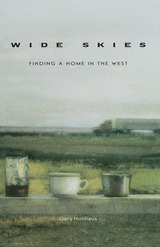 Wide Skies: Finding a Home in the West
Gary Holthaus
University of Arizona Press, 1997 "Like many other Americans, judging from the amount of predawn traffic, I am on the move, scurrying through the dark like a coyote, nose down in pursuit of something-my work, an ephemeral desire that has no name, a life, an end of restlessness, a true place in the world."
A true place in the world: how many people have looked for it and how many have finally found it in the American West? Here, with writer Gary Holthaus, readers will reflect upon their own sense of place as they travel the lands and enter the lives of people in small towns and on ranches all over the West from Utah to Oregon to Alaska. Farmers and merchants, writers and teachers, truckers and trappers: their stories ring with hope and fear as their wide-open spaces increasingly come under siege.
Here are reflections on a long journey, together with notes of a personal odyssey and a plea for preserving the West's natural beauty-its meadows and mountains, its bears and Golden Eagles, its antelope and wolverines. This is important, says Holthaus, because if the region is home for him and for others, too, then it is crucial for newcomers and old-timers alike not to "further foul a nest that is becoming increasingly crowded." As he finds his way and adjusts his eyes to modern realities of greed and indifference, he also comes to grips with loss and learns to balance "the harm one inevitably does" with acts of compassion and positive change.
Deep in the national consciousness, the mythical West of film and fiction continues to shape our vision of ourselves as Americans. This book is a view not from the media, not from think tanks or legislators or policy makers, but from Westerners themselves, who tell us about the circumstances of their lives. Their West is indisputably the real West, and only as we come to understand better its realities will we come to know ourselves both as individuals and as a nation.
Wideband Amplifier Design
Allen L. Hollister
The Institution of Engineering and Technology, 2007 In this book, the theory needed to understand wideband amplifier design using the simplest models possible will be developed. This theory will be used to develop algebraic equations that describe particular circuits used in high frequency design so that the reader develops a 'gut level' understanding of the process and circuit. SPICE and Genesys simulations will be performed to show the accuracy of the algebraic models. By looking at differences between the algebraic equations and the simulations, new algebraic models will be developed that include parameters originally left out of the model. By including these new elements, the algebraic equations provide surprising accuracy while maintaining simplicity and understanding of the circuit.
 Widener: Biography of a Library
Matthew Battles
Harvard University Press, 2004 Wallace Stegner called its stacks “enchanted.” Barbara Tuchman called it “my Archimedes bathtub, my burning bush.” But to Thomas Wolfe, it was a place of “wilderment and despair.” Since its opening in 1915, the Harry Elkins Widener Memorial Library has led a spirited life as Harvard’s physical and, in a sense, its spiritual heart. Originally intended as the memorial to one man, it quickly grew into a symbol of the life of the mind with few equals anywhere—and like all symbols, it has enjoyed its share of contest and contradiction. At the unlikely intersection of such disparate episodes as the sinking of the Titanic, the social upheavals of the 1960s, and the shifting meaning of books and libraries in the information age, Widener is at once the storehouse and the focus of rich and ever-growing hoards of memory.
With copious illustrations and wide-ranging narrative, Widener: Biography of a Library is not only a record of benefactors and collections; it is the tale of the students, scholars, and staff who give a great library its life.
The Widening Spell of the Leaves
Larry Levis
University of Pittsburgh Press, 1991 "Establishes Levis indisputably and once and for all as one of the younger masters." --North American Review
"In this book, Levis descends through memory and history with bravery and authority. He seems to be writing the poems we all need to read right now." --Antioch Review
Larry Levis was born in Fresno, California, in 1946. His first book of poems, Wrecking Crew, won the United States Award from the International Poetry Forum, and was published in the Pitt Poetry Series in 1972. His second book, The Afterlife, won the Lamont Award from the American Academy of Poets in 1976. In 1981, The Dollmaker's Ghost was a winner of the Open Competition of the National Poetry Series. Among his other awards were three fellowships in poetry from the National Endowment for the Arts, a Fulbright Fellowship, and a Guggenheim Fellowship. Larry Levis died in 1996.
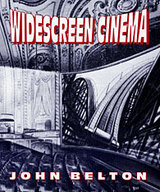 Widescreen Cinema
John Belton
Harvard University Press, 1992 "Ladies and gentlemen: THIS IS CINERAMA." With these words, on September 30, 1952, the heavy red curtains in New York's Broadway Theatre opened on a panoramic Technicolor image of the Rockaways Playland Atom-Smasher Roller Coaster--and moviegoers were abruptly plunged into a new and revolutionary experience. The cinematic transformation heralded by this giddy ride was, however, neither as sudden nor as straightforward as it seemed. Widescreen Cinema leads us through the twists and turns and decades it took for film to change its shape and, along the way, shows how this fitful process reflects the vagaries of cultural history.
Widescreen and wide-film processes had existed since the 1890s. Why, then, John Belton asks, did 35mm film become a standard? Why did a widescreen revolution fail in the 1920s but succeed in the 1950s? And why did movies shrink again in the 1960s, leaving us with the small screen multiplexes and mall cinemas that we know today? The answers, he discovers, have as much to do with popular notions of leisure time and entertainment as with technology. Beginning with film's progress from peepshow to projection in 1896 and focusing on crucial stages in film history, such as the advent of sound, Belton puts widescreen cinema into its proper cultural context. He shows how Cinerama, CinemaScope, Vista Vision, Todd-AO, and other widescreen processes marked significant changes in the conditions of spectatorship after World War 11 -and how the film industry itself sought to redefine those conditions. The technical, the economic, the social, the aesthetic -every aspect of the changes shaping and reshaping film comes under Belton's scrutiny as he reconstructs the complex history of widescreen cinema and relates this history to developments in mass-produced leisure-time entertainment in the twentieth century. Highly readable even at its most technical, this book illuminates a central episode in the evolution of cinema and, in doing so, reveals a great deal about the shifting fit between film and society.
Widescreen Dreams: Growing Up Gay at the Movies
Patrick E. Horrigan
University of Wisconsin Press, 2001 In 1973, a sweet-tempered, ferociously imaginative ten-year-old boy named Patrick Horrigan saw the TV premiere of the film version of Hello, Dolly! starring Barbra Streisand. His life would never be the same. Widescreen Dreams: Growing Up Gay at the Movies traces Horrigan’s development from childhood to gay male adulthood through a series of visceral encounters with an unexpected handful of Hollywood movies from the 1960s and 1970s: Hello Dolly!, The Sound of Music, The Poseidon Adventure, Dog Day Afternoon, and The Wiz.
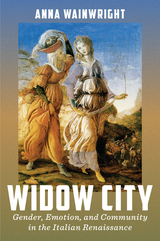 Widow City: Gender, Emotion, and Community in the Italian Renaissance
Anna Wainwright
University of Delaware Press, 2025 Widow City: Gender, Emotion, and Community in the Italian Renaissance investigates the ever-evolving role of the widow in medieval and early modern Italian literature, from canonical authors such as Dante, Petrarch, and Boccaccio, to the numerous widowed writers who rose to prominence in the sixteenth century—including Vittoria Colonna, Veronica Gambara, and Francesca Turina—and radically changed the conversation on public mourning. Engaging with broader intellectual discussions around gender, the history of emotions, the politics of mourning, and the construction of community, Widow City argues that widows served as key models demonstrating to readers not just how to mourn, but how to live well after devastating loss. At the same time, widows were figures of great anxiety: their status as unattached women, and the public performance of their grief, were viewed as very real threats to the stability of the social order. They are thus key to broader intellectual understandings of community and civic life in the Italian Middle Ages and Renaissance.
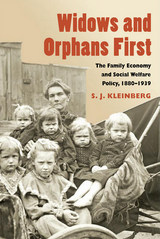 Widows and Orphans First: The Family Economy and Social Welfare Policy, 1880-1939
S. J. Kleinberg
University of Illinois Press, 2005 The experiences of widows and their children during the Progressive Era and the New Deal depended on differences in local economies and values. How did these widely varied experiences impact the origins of the welfare state? S. J. Kleinberg delves into the question by comparing widows' lives in three industrial cities with differing economic, ethnic, and racial bases. Government in Fall River, Massachusetts, saw employment as a solution to widows' poverty and as a result drastically limited public charity. In Pittsburgh, widows received sympathetic treatment. Few jobs existed for them or their children; indeed, the jobs for men were concentrated in "widowmaking" industries like steel and railroading. With a large African American population and a diverse economy that relied on inexpensive child and female labor, Baltimore limited funds for public services. African Americans adapted by establishing their own charitable institutions. A fascinating comparative study, Widows and Orphans First offers a one-of-a-kind look at social welfare policy for widows and the role of children in society during a pivotal time in American history.
 Widows by the Thousand: The Civil War Correspondence of Theophilus and Harriet Perry, 1862–1864
M. Jane Johansson
University of Arkansas Press, 2000 This collection of letters written between Theophilus and Harriet Perry during the Civil War provides an intimate, firsthand account of the effect of the war on one young couple. Perry was an officer with the 28th Texas Cavalry, a unit that campaigned in Arkansas and Louisiana as part of the division known as “Walker’s Greyhounds.” His letters describe his service in a highly literate style that is unusual for Confederate accounts. He documents a number of important events, including his experiences as a detached officer in Arkansas in the winter of 1862–63, the attempt to relieve the siege of Vicksburg, mutiny in his regiment, and the Red River campaign, just before he was killed in the battle of Pleasant Hill. Harriet’s writings allow the reader to witness the everyday life of an upper-class woman enduring home front deprivations, facing the hardships and fears of childbearing and childrearing alone, and coping with other challenges resulting from her husband’s absence.
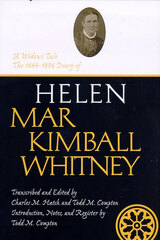 Widow's Tale, A: 1884-1896 Diary of Helen Mar Kimball Whitney
Charles M. Hatch and Todd Compton
Utah State University Press, 2003 Volume 6, Life Writings of Frontier Women series, ed. Maureen Ursenbach Beecher
Mormon culture has produced during its history an unusual number of historically valuable personal writings. Few such diaries, journals, and memoirs published have provided as rich and well rounded a window into their authors' lives and worlds as the diary of Helen Mar Kimball Whitney. Because it provides a rare account of the widely experienced situations and problems faced by widows, her record has relevance far beyond Mormon history though.
As a teenager Helen Kimball had been a polygamous wife of Mormon founder Joseph Smith. She subsequently married Horace Whitney. Her children included the noted Mormon author, religious authority, and politician Orson F. Whitney. She herself was a leading woman in her church and society and a writer known especially for her defense of plural marriage. Upon Horace's death, she began keeping a diary. In it, she recorded her economic, physical, and psychological struggles to meet the challenges of widowhood. Her writing was introspective and revelatory. She also commented on the changing society around her, as Salt Lake City in the last decades of the nineteenth century underwent rapid transformation, modernizing and opening up from its pioneer beginnings. She remained a well-connected member of an elite group of leading Latter-day Saint women, and prominent Utah and Mormon historical figures appear frequently in her daily entries. Above all, though, her diary is an unusual record of difficulties faced in many times and places by women, of all classes, whose husbands died and left them without sufficient means to carry on the types of lives to which they had been accustomed.
Widows: Vol. I: The Middle East, Asia, and the Pacific
Helena Znaniecka Lopata, ed.
Duke University Press, 1987 This volume analyzes the support systems and lifestyles of widows in Australia, the Philippines, Korea, Iran, China, India, Turkey, and Israel.
Widows: Vol. II: North America
Helena Znaniecka Lopata, ed.
Duke University Press, 1987 The volume examines two communities in Canada, a Florida retirement community, and communities in Ohio, Nebraska, and California, as well as the relative situations of homeowners, blacks, and poor ethnic populations.
Widows: Vol. II: North America
Helena Znaniecka Lopata, ed.
Duke University Press The volume examines two communities in Canada, a Florida retirement community, and communities in Ohio, Nebraska, and California, as well as the relative situations of homeowners, blacks, and poor ethnic populations.
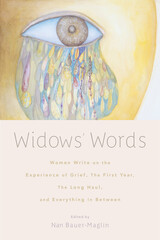 Widows' Words: Women Write on the Experience of Grief, the First Year, the Long Haul, and Everything in Between
Nan Bauer-Maglin
Rutgers University Press, 2019 Becoming a widow is one of the most traumatic life events that a woman can experience. Yet, as this remarkable new collection reveals, each woman responds to that trauma differently. Here, forty-three widows tell their stories, in their own words.
Some were widowed young, while others were married for decades. Some cared for their late partners through long terminal illnesses, while others lost their partners suddenly. Some had male partners, while others had female partners. Yet each of these women faced the same basic dilemma: how to go on living when a part of you is gone.
Widows’ Words is arranged chronologically, starting with stories of women preparing for their partners’ deaths, followed by the experiences of recent widows still reeling from their fresh loss, and culminating in the accounts of women who lost their partners many years ago but still experience waves of grief. Their accounts deal honestly with feelings of pain, sorrow, and despair, and yet there are also powerful expressions of strength, hope, and even joy. Whether you are a widow yourself or have simply experienced loss, you will be sure to find something moving and profound in these diverse tales of mourning, remembrance, and resilience.
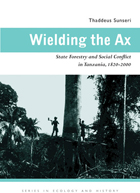 Wielding the Ax: State Forestry and Social Conflict in Tanzania, 1820–2000
Thaddeus Sunseri
Ohio University Press, 2009 Forests have been at the fault lines of contact between African peasant communities in the Tanzanian coastal hinterland and outsiders for almost two centuries. In recent decades, a global call for biodiversity preservation has been the main challenge to Tanzanians and their forests. Thaddeus Sunseri uses the lens of forest history to explore some of the most profound transformations in Tanzania from the nineteenth century to the present. He explores anticolonial rebellions, the world wars, the depression, the Cold War, oil shocks, and nationalism through their intersections with and impacts on Tanzania’s coastal forests and woodlands. In Wielding the Ax, forest history becomes a microcosm of the origins, nature, and demise of colonial rule in East Africa and of the first fitful decades of independence. Wielding the Ax is a story of changing constellations of power over forests, beginning with African chiefs and forest spirits, both known as “ax–wielders,” and ending with international conservation experts who wield scientific knowledge as a means to controlling forest access. The modern international concern over tropical deforestation cannot be understood without an awareness of the long–term history of these forest struggles.
 Wiener Chic: A Locational History of Vienna Fashion
Susan Ingram and Markus Reisenleitner
Intellect Books, 2013 Vienna may not be synonymous with fashion like its metropolitan counterparts Paris and Milan, but it is a fashionable city, one that historically has been structured by changing fashions and fashionable appearances. Like the Litfaßsäule in Orson Welles’s 1949 urban noir masterpiece The Third Man, into which Harry Lime escapes in order to avoid capture and which hapless visitors today presume are merely surfaces for advertising, there are many overlooked aspects of Vienna’s distinct style and attitude. By focusing on fashion, Wiener Chic narrates Vienna’s history through an interpretation of the material dimensions of Viennese cultural life—from architecture to arts festivals to the urban fabric of street chic.
The first book that connects Vienna and fashion with urban theory, Wiener Chic draws on material that is virtually unknown in an English-language context to give readers an insider’s vantage point on an underappreciated European fashion capital.
The Wiener-Hopf Method in Electromagnetics
Vito G. Daniele
The Institution of Engineering and Technology, 2014 This advanced research monograph is devoted to the Wiener-Hopf technique, a function-theoretic method that has found applications in a variety of fields, most notably in analytical studies of diffraction and scattering of waves. It provides a comprehensive treatment of the subject and covers the latest developments, illustrates the wide range of possible applications for this method, and includes an extensive outline of the most powerful analytical tool for the solution of diffraction problems.
The Wife of His Youth and Other Stories
Charles W. Chesnutt
University of Michigan Press, 1968 Chesnutt writes of the black search for identity in the period between the Civil War and the turn of the century
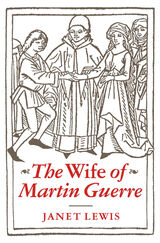 The Wife of Martin Guerre
Janet Lewis
Ohio University Press, 1967 This compelling story of Bertrande de Rols is a rich novella with the timeless power of a fable. It was based on a famous story of a court case in mid-16th century France.Janet Lewis depicts a distant time and a traditional, rural culture based on a highly ordered patriarchal structure. When "Martin Guerre" returns from a quest after eight years, the family embraces him, and Bertrande is swept up in the relief at the apparent return to the security of the old order.But Martin has changed, and Bertrande threatens the established order with her defiant quest for the truth. Once the accusation of false identity is laid formally and the trial process begins. Many witnesses are called. Bertrande is pressured to withdraw, and she herself is reluctant to see "Martin" executed.Finally, the real, battle-weary Martin stumbles into the courtroom and is instantly recognized. He shows no mercy to Bertrande for allowing herself to be deceived. The real facts emerge, but the fate of Bertrande and Martin remains open-ended.
In this new edition of Janet Lewis’s classic short novel, The Wife of Martin Guerre, Swallow Press executive editor Kevin Haworth writes that Lewis’s story is “a short novel of astonishing depth and resonance, a sharply drawn historical tale that asks contemporary questions about identity and belonging, about men and women, and about an individual’s capacity to act within an inflexible system.” Originally published in 1941, The Wife of Martin Guerre has earned the respect and admiration of critics and readers for over sixty years.
Based on a notorious trial in sixteenth-century France, this story of Bertrande de Rols is the first of three novels making up Lewis’s Cases of Circumstantial Evidence suite (the other two are The Trial of Sören Qvist and The Ghost of Monsieur Scarron).
Swallow Press is delighted and honored to offer readers beautiful new editions of all three Cases of Circumstantial Evidence novels, each featuring a new introduction by Kevin Haworth.
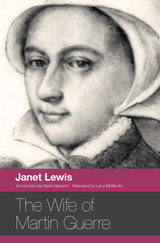 The Wife of Martin Guerre
Janet Lewis
Ohio University Press, 2013 In this new edition of Janet Lewis’s classic short novel, The Wife of Martin Guerre, Swallow Press executive editor Kevin Haworth writes that Lewis’s story is “a short novel of astonishing depth and resonance, a sharply drawn historical tale that asks contemporary questions about identity and belonging, about men and women, and about an individual’s capacity to act within an inflexible system.” Originally published in 1941, The Wife of Martin Guerre has earned the respect and admiration of critics and readers for over sixty years. Based on a notorious trial in sixteenth-century France, this story of Bertrande de Rols is the first of three novels making up Lewis’s Cases of Circumstantial Evidence suite (the other two are The Trial of Sören Qvist and The Ghost of Monsieur Scarron). Swallow Press is delighted and honored to offer readers beautiful new editions of all three Cases of Circumstantial Evidence novels, each featuring a new introduction by Kevin Haworth.
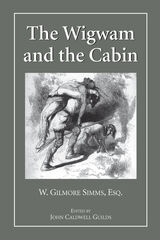 The Wigwam and the Cabin: The Arkansas Edition
William G. Simms
University of Arkansas Press, 2001 One of the most important volumes of short fiction published before the Civil War. The Wigwam and the Cabin represents William Gilmore Simms at his very best. It is the work that led Poe to say of Simms, ". . . in invention, in vigor, in movement, in the power of exciting interest, and in the artistical management of his themes, he has surpassed, we think, any of his countrymen." Praised by critics on both sides of the Atlantic, The Wigwam and the Cabin focuses n the Southern frontier that Simms knew so well, a frontier whose vernacular, courage, humor, folklore, violence, injustice, and beauty are vividly brought to life through the strokes of his pen. "I have seen the life," Simms wrote, "—have lived it—and much of my material . . . is the planter, the squatter, the Indian, the negro—the bold and hardy pioneer, the vigorous yeomen—these are the subjects." Simms's portrayal of frontier life is the most realistic and graphic in all nineteenth-century American literature; and the Arkansas edition of The Wigwam and the Cabin, with Dr. Guilds's fine editing and informative introductin, brings back into print an invaluable contribution to the development of the short story in America.
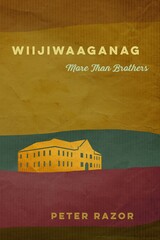 Wiijiwaaganag: More Than Brothers
Peter Razor
Michigan State University Press, 2022 Niizh Eshkanag is a member of the first generation of Anishinaabe children required to attend a U.S. government boarding school—schools infamously intended to “kill the Indian and save the man,” or forcibly assimilate Native students into white culture. At the Yardley Indian Boarding School in northern Minnesota, far from his family, Niizh Eshkanag endures abuse from the school staff and is punished for speaking his native language. After his family moves him to a school that is marginally better, he meets Roger Poznanski, the principal’s white nephew, who arrives to live with his uncle’s family and attend the school. Though Roger is frightened of his Indian classmates at first, Niizh Eshkanag befriends him, and they come to appreciate and respect one another’s differences. When a younger Anishinaabe student runs away into a winter storm after being beaten by a school employee, Niizh Eshkanag and Roger join forces to rescue him, beginning an adventure that change their lives and the way settlers, immigrants and the Anishinaabe people of the Great Lakes think about each other and their shared future.
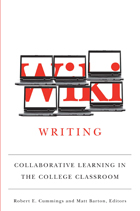 Wiki Writing: Collaborative Learning in the College Classroom
Robert E. Cummings and Matt Barton, Editors
University of Michigan Press, 2008 When most people think of wikis, the first---and usually the only---thing that comes to mind is Wikipedia. The editors of Wiki Writing: Collaborative Learning in the College Classroom, Robert E. Cummings and Matt Barton, have assembled a collection of essays that challenges this common misconception, providing an engaging and helpful array of perspectives on the many pressing theoretical and practical issues that wikis raise. Written in an engaging and accessible manner that will appeal to specialists and novices alike, Wiki Writing draws on a wealth of practical classroom experiences with wikis to offer a series of richly detailed and concrete suggestions to help educators realize the potential of these new writing environments. Robert E. Cummings began work at Columbus State University in August 2006 as Assistant Professor of English and Director of First-Year Composition. Currently he also serves as the Writing Specialist for CSU's Quality Enhancement Plan, assisting teachers across campus in their efforts to maximize student writing in their curriculum. He recently concluded a three-year research study with the Inter/National Coalition for Electronic Portfolio Research and continues to research in the fields of computers and writing, writing across the curriculum, writing in the disciplines, and curricular reform in higher education. Matt Barton is Assistant Professor, St. Cloud State University, Department of English-Rhetoric and Applied Writing Program. His research interests are rhetoric, new media, and computers and writing. He is the author of Dungeons and Desktops: A History of Computer Role-Playing Games and has published in the journals Text and Technology, Computers and Composition, Game Studies, and Kairos. He is currently serving as Associate Editor of Kairosnews and Managing Editor of Armchair Arcade. "Wiki Writing will quickly become the standard resource for using wikis in the classroom."
---Jim Kalmbach, Illinois State University digitalculturebooks is an imprint of the University of Michigan Press and the Scholarly Publishing Office of the University of Michigan Library dedicated to publishing innovative and accessible work exploring new media and their impact on society, culture, and scholarly communication. Visit the website at www.digitalculture.org.
Wikipedia and Academic Libraries: A Global Project
Edited by Laurie M. Bridges, Raymond Pun, and Roberto A. Arteaga
Michigan Publishing, 2021 Wikipedia and Academic Libraries: A Global Project contains 19 chapters by 52 authors from Brazil, Canada, Hong Kong, Ireland, Kyrgyzstan, Mexico, Netherlands, Nigeria, Scotland, Spain, and the United States. The chapters in this book are authored by both new and longtime members of the Wikimedia community, representing a range of experiences.
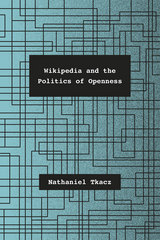 Wikipedia and the Politics of Openness
Nathaniel Tkacz
University of Chicago Press, 2014 Few virtues are as celebrated in contemporary culture as openness. Rooted in software culture and carrying more than a whiff of Silicon Valley technical utopianism, openness—of decision-making, data, and organizational structure—is seen as the cure for many problems in politics and business.
But what does openness mean, and what would a political theory of openness look like? With Wikipedia and the Politics of Openness, Nathaniel Tkacz uses Wikipedia, the most prominent product of open organization, to analyze the theory and politics of openness in practice—and to break its spell. Through discussions of edit wars, article deletion policies, user access levels, and more, Tkacz enables us to see how the key concepts of openness—including collaboration, ad-hocracy, and the splitting of contested projects through “forking”—play out in reality.
The resulting book is the richest critical analysis of openness to date, one that roots media theory in messy reality and thereby helps us move beyond the vaporware promises of digital utopians and take the first steps toward truly understanding what openness does, and does not, have to offer.
Wikiworld
Juha Suoranta and Tere Vaden
Pluto Press, 2009 Wikiworld explores a revolution in the world of education. The way we learn is changing: institutionalised learning is transforming into new forms of critical learning and open collaboration. This book offers a historical and political framework to think about the future of learning and educational media.
The authors provide an overview of the use of new technologies and learning practices, and assess how the changing nature of education can lead to a more socially just future. At the same time, they place their analysis of education within a wider social and economic framework of contemporary capitalism.
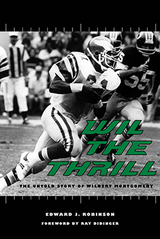 Wil the Thrill: The Untold Story of Wilbert Montgomery
Edward J. Robinson
Texas Tech University Press, 2013 When Wilbert Montgomery earned his Super Bowl XLVII ring as running-backs coach for the Baltimore Ravens in 2013, he was no stranger to glory. In Philadelphia and elsewhere his legacy still looms large. Montgomery was the halfback whose touchdown on the second play from scrimmage and total 194 yards against a stout Cowboy defense helped spur the Eagles to the 1981 NFC title and Super Bowl XV. But perhaps even more enduring should be the story of how this shy but courageous athlete broke down barriers throughout his life, even before the his time in the NFL. Escaping an oppressive and impoverished environment in his home state of Mississippi in the early 1970s, he became one of the first African Americans to play for what was then Abilene Christian College, after its all-white coaching staff lured him away from the gridiron at historically black Jackson State College. Although leading ACC to a 1973 national title would help catapult Montgomery to a remarkable pro career, no one before has illuminated the complex interplay of race relations, sports, and religion in Montgomery’s heroic accomplishments in West Texas and beyond.
Wilbur's Poetry: Music in a Scattering Time
Bruce Michelson
University of Massachusetts Press, 2009 Poet laureate of the United States, two-time winner of the Pulitzer Prize, chancellor of the American Academy of Arts and Letters, recipient of the Bollingen Prize, the Prix de Rome, and many other major honors, Richard Wilbur has been a central figure in American literature since World War II. Yet commentary about his poetry has been sparse. In this book, Bruce Michelson brings to Wilbur's achievement the close critical attention it deserves.
The first extended study of Wilbur's work in twenty-five years, Wilbur's Poetry explores the light poems, the darker mediations, the brilliant translations of Moliere and Racine, as well as the risks Wilbur has taken as an artist. There are chapters on Wilbur's unique use of language and his response to a vast poetic heritage, on form and closure and their thematic implications, and of Wilbur's place as a poet in a complex and "scattering" time.
Wild about Harry: Everything You Have Ever Wanted to Know about the Truman Scholarship
Suzanne McCray
University of Arkansas Press, 2021 The scholars selected from the notoriously competitive Truman Scholarship applicant pool are widely known as energetic leaders from a variety of disciplines who have in common the desire to make a difference, to bring about sustainable positive change, and to serve the greater public good. Wild about Harry makes the Truman Scholarship application process transparent to applicants and their advisors. This collection of essays teaches readers how to gain the most from the application process, how to connect past involvement and successes to future academic and career goals, how to approach interviews, and how to embrace the opportunity if selected for an award.
Wild and Scenic Rivers of America
Tim Palmer
Island Press, 1993 The National Wild and Scenic Rivers Act is one of the most important natural areas protection programs ever established at the federal level. It has resulted in the creation of the National Wild and Scenic Rivers System -- a rich American legacy that includes many of our finest waterways. This book is the definitive resource on the National Wild and Scenic Rivers System. Topics covered include: - the importance of protecting river ecosystems
- state and local protection systems
- the history of the National Wild and Scenic Rivers System
- descriptions of each of the major rivers in the system
- how and why rivers are chosen for inclusion
- river management
- continuing threats to rivers
- what can be done to make the system more effective and more inclusive
 Wild and Wonderful: An Ethnography of English Naturalists
Vanessa Manceron
HAU, 2025 Examining social constructions and perceptions of nature.
In Wild and Wonderful, social anthropologist Vanessa Manceron investigates an understudied but indispensable scientific practice: getting to know and recognize the living worlds around us. Her research takes her to England, where a longstanding naturalist tradition brings together professionals, academics, and amateurs to study the world around them. Observing the natural world here is regarded not as a simple hobby, but as a necessary activity. This is participatory science, an itinerant brand of scholarship that immerses itself in a specific and delimited territory, meticulously documenting the species living there and how they develop and expand their domain or regress and disappear. Manceron leads us through woods and fields, showing us another way of looking, of paying attention to minute differences, sounds, and variations of color. Her book is both a contribution to the anthropology of science and an opportunity to take a fresh look at our relationship with nature, affording us a glimpse of another way of living and living with.
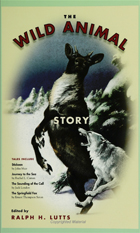 Wild Animal Story
edited by Ralph H. Lutts
Temple University Press, 2001 At the beginning of the twentieth century, the wild animal story emerged in Canadian literature as a distinct genre, in which animals pursue their own interests—survival for themselves, their offspring, and perhaps a mate, or the pure pleasure of their wildness. Bringing together some of the most celebrated wild animal stories, Ralph H. Lutts places them firmly in the context of heated controversies about animal intelligence and purposeful behavior. Widely regarded as entertaining and educational, the early stories—by Charles G. D. Roberts, Ernest Thompson Seton, John Muir, Jack London and others—had an avid readership among adults and children. But some naturalists and at least one hunter—Theodore Roosevelt—discredited these writers as "nature fakers," accusing them of falsely portraying animal behavior. The stories and commentaries collected here span the twentieth century. As present day animal behaviorists, psychologists, and the public attempt to sort out the meaning of what animals do and our obligations to them, Ralph Lutts maps some of the prominent features of our cultural landscape. Tales include: • The Springfield Fox by Ernest Thompson Seton • The Sounding of the Call by Jack London • Stickeen by John Muir • Journey to the Sea by Rachel Carson Other selections include essays by Theodore Roosevelt, John Burroughs, Margaret Atwood, and Ralph H. Lutts. postamble();
 Wild Beasts and Idle Humours: The Insanity Defense from Antiquity to the Present
Daniel Robinson
Harvard University Press, 1996 How does the law regard and define mental incompetence, when faced with the problem of meting out justice? To what extent has the law relied on extra-legal authorities—be they religious or scientific—to frame its own categories of mental incompetence and madness? Wild Beasts and Idle Humours takes us on an illuminating journey through the changing historical landscape of human nature and offers an unprecedented look at the legal conceptions of insanity from the pre-classical Greek world to the present. Although actual trial records are either totally lacking or incomplete until the eighteenth century, there are other sources from which the insanity defenses can be constructed.
In this book Daniel N. Robinson, a distinguished historian of psychology, pores over centuries of written law, statements by legal commentators, summaries of crimes, and punishments, to glean from these sources an understanding of epochal views of responsibility and competence. From the Greek phrenesis to the Roman notions of furiosus and non compos mentis, from the seventeenth-century witch trials to today’s interpretation of mens rea, Robinson takes us through history and provides the intricate story of how the insanity defense has been construed as a meeting point of the law and those professions that chart human behavior and conduct: namely religion, medicine, and psychology. The result is a rare historical account of “insanity” within Western civilization.
Wild Beasts and Idle Humours will be essential reading for anyone interested in the evolution of thinking not merely about legal insanity but about such core concepts as responsibility, fitness for the rule of law, competence to enter into contracts and covenants, the role of punishments, and the place of experts within the overall juridical context.
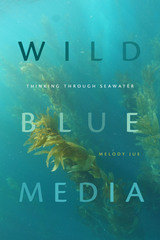 Wild Blue Media: Thinking through Seawater
Melody Jue
Duke University Press, 2020 In Wild Blue Media, Melody Jue destabilizes terrestrial-based ways of knowing and reorients our perception of the world by considering the ocean itself as a media environment—a place where the weight and opacity of seawater transforms how information is created, stored, transmitted, and perceived. By recentering media theory on and under the sea, Jue calls attention to the differences between perceptual environments and how we think within and through them as embodied observers. In doing so, she provides media studies with alternatives to familiar theoretical frameworks, thereby challenging scholars to navigate unfamiliar oceanic conditions of orientation, materiality, and saturation. Jue not only examines media about the ocean—science fiction narratives, documentary films, ocean data visualizations, animal communication methods, and underwater art—but reexamines media through the ocean, submerging media theory underwater to estrange it from terrestrial habits of perception while reframing our understanding of mediation, objectivity, and metaphor.
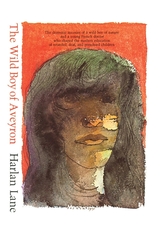 The Wild Boy of Aveyron
Harlan Lane
Harvard University Press, 1976 The discovery of Victor, the wild boy of Aveyron, and the accomplishments of his teacher, Jean Marc Itard, launched a debate among philosophers anthropologists, psychologists, and educators that has lasted almost two centuries, has given birth to educational treatment of the mentally retarded with methods that are still widely employed, and has led in this country to a revolution in childhood education.
This beautifully written book by Harlan Lane tells the complete story of Dr. Itard's successes and failures with “l'enfant sauvage,” a story immortalized by director François Truffaut in The Wild Child (L'Enfant sauvage). Lane takes the reader into the central philosophical and scientific debates of the nineteenth century and sheds new light on questions that persist for our own time. Which human activities require social instruction and which do not? Is there a critical period for language acquisition? To what extent can education compensate for delayed development and limited endowment? What are the critical features of effective training methods?
 Wild By Design: Strategies for Creating Life-Enhancing Landscapes
Margie Ruddick
Island Press, 2016 Can nature—in all its unruly wildness—be an integral part of creative landscape design? In her beautifully illustrated book, Wild by Design, award-winning designer Margie Ruddick urges designers to look beyond the rules often imposed by both landscaping convention and sustainability checklists. Instead, she offers a set of principles for a more creative and intuitive approach that challenges the entrenched belief that natural processes cannot complement high-level landscape design.
Wild by Design defines and explains the five fundamental strategies Ruddick employs, often in combination, to give life, beauty, and meaning to landscapes: Reinvention, Restoration, Conservation, Regeneration, and Expression. Drawing on her own projects—from New York City’s Queens Plaza, formerly a concrete jungle of traffic, to a desertscape backyard in Baja, California, to the Living Water Park in Chengdu, China—she offers guidance on creating beautiful, healthy landscapes that successfully reconnect people with larger natural systems.
A revealing look into the approach of one of sustainable landscape design’s most innovative practitioners, Wild by Design stretches the boundaries of landscape design, offering readers a set of broader, more flexible strategies and practical examples that allow for the unexpected exuberance of nature to be a welcome part of our gardens, parks, backyards, and cities.
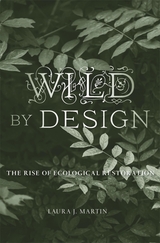 Wild by Design: The Rise of Ecological Restoration
Laura J. Martin
Harvard University Press, 2022 An environmental historian delves into the history, science, and philosophy of a paradoxical pursuit: the century-old quest to design natural places and create wild species.
Environmental restoration is a global pursuit and a major political concern. Governments, nonprofits, private corporations, and other institutions spend billions of dollars each year to remove invasive species, build wetlands, and reintroduce species driven from their habitats. But restoration has not always been so intensively practiced. It began as the pastime of a few wildflower enthusiasts and the first practitioners of the new scientific discipline of ecology.
Restoration has been a touchstone of US environmentalism since the beginning of the twentieth century. Diverging from popular ideas about preservation, which romanticized nature as an Eden to be left untouched by human hands, and conservation, the managed use of natural resources, restoration emerged as a “third way.” Restorationists grappled with the deepest puzzles of human care for life on earth: How to intervene in nature for nature’s own sake? What are the natural baselines that humans should aim to restore? Is it possible to design nature without destroying wildness? Laura J. Martin shows how, over time, amateur and professional ecologists, interest groups, and government agencies coalesced around a mode of environmental management that sought to respect the world-making, and even the decision-making, of other species. At the same time, restoration science reshaped material environments in ways that powerfully influenced what we understand the wild to be.
In Wild by Design, restoration’s past provides vital knowledge for climate change policy. But Martin also offers something more—a meditation on what it means to be wild and a call for ecological restoration that is socially just.
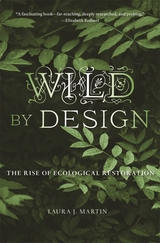 Wild by Design: The Rise of Ecological Restoration
Laura J. Martin
Harvard University Press “A fascinating book—far-reaching, deeply researched, and probing.” —Elizabeth Kolbert, author of Under a White Sky
“Outstandingly well-researched and deeply thoughtful . . . An essential read.” —John Dupré, Los Angeles Review of Books
“Makes a strong case for restoration’s enduring value.” —Michelle Nijhuis, New York Review of Books
Today environmental restoration is a global pursuit. Governments, nonprofits, and corporations spend billions of dollars each year to remove invasive species, build wetlands, and reintroduce species driven from their habitats.
In Wild by Design, historian Laura J. Martin uncovers the origins of restoration science and policy. She explores how restorationists struggled with the problem of caring for biodiversity without romanticizing nature as an untouched Eden. Could humans intervene in nature for nature’s own sake? What natural baselines should be restored? Was it possible to design nature without destroying wildness? In illuminating restoration’s past, Wild by Design not only provides vital lessons for our future in a changing climate—it makes an urgent call for environmental restoration that is socially just.
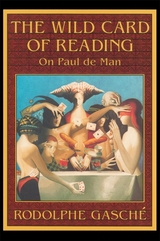 The Wild Card of Reading: On Paul de Man
Rodolphe Gasché
Harvard University Press, 1998 One of the most knowledgeable and provocative explicators of Paul de Man's writings, Rodolphe Gasché, a philosopher by training, demonstrates for the first time the systematic coherence of the critic's work, insisting that de Man continues to merit close attention despite his notoriously difficult and obscure style. Gasché shows that de Man's "reading" centers on a dimension of the texts that is irreducible to any possible meaning, a dimension characterized by the "absolutely singular."
Given that de Man and Derrida are both termed deconstructionists, Gasché differentiates between the two by emphasizing Derrida's primary interest in "writing," and postulates that the best way to come to terms with de Man's works is to "read" them athwart the writings of Kant, Fichte, Hegel, Heidegger, and Derrida. He shows his respect for the "immanent logic" of de Man's thought--which he lays out in great detail--while revealing his uneasiness at the oddness of that thought and its consequences.
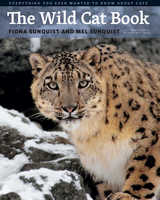 The Wild Cat Book: Everything You Ever Wanted to Know about Cats
Fiona Sunquist and Mel Sunquist
University of Chicago Press, 2014 From the ancient Egyptian cat goddess, Bastet, to the prophet Muhammad’s favorite cat, Muezza, and our contemporary obsession with online cat videos, felines have long held a place of honor in their human counterparts’ homes and cultures. But the domestic cat is just one of many feline species, and in The Wild Cat Book cat experts Fiona and Mel Sunquist introduce us to the full panoply of the purring, roaring feline tribe.
Illustrated throughout with Terry Whittaker’s spectacular color photographs as well as unique photos from biologists in the field—some the highest quality images ever captured of exceptionally rare species—The Wild Cat Book not only tantalizes with the beauty of cats, but also serves as a valuable and accessible reference on cat behavior and conservation. Comprehensive entries for each of the thirty-seven cat species include color distribution maps and up-to-date information related to the species’ IUCN conservation and management statuses, while informative sidebars reveal why male lions have manes (and why dark manes are sexiest), how cats see with their whiskers, the truth behind our obsession with white lions and tigers, and why cats can’t be vegetarians. The Wild Cat Book also highlights the grave threats faced by the world’s wild cats—from habitat destruction to human persecution.
From the extraordinary acrobatics of the arboreal margay—able to cling to a tree branch by a single paw thanks to its unusually flexible ankles—to modern declines in African lion populations, The Wild Cat Book is an instructive and revealing ode to felines of every size and color. Combining science, behavioral observations, and stunning photography, this book will captivate cat fanciers the world over.
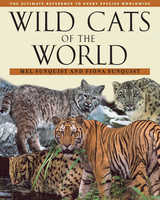 Wild Cats of the World
Mel Sunquist and Fiona Sunquist
University of Chicago Press, 2002 Did you know that European royalty once used cheetahs to hunt deer, or that caracals can capture birds by leaping six and a half feet straight up into the air from a standing start? Have you ever wondered whether domestic cats really do land on their feet when they fall, or how Canada lynx can stalk their prey in the winter without falling through the deep snow?
Wild Cats of the World is a treasure trove of answers to questions like these, and many others, for anyone who's interested in learning more about the world's felids, including the ones with whom we share our homes. Mel and Fiona Sunquist have spent more than a decade gathering information about cats from every available source, many of them quite difficult to find, including scientific papers, descriptions of hunts, archeological findings, observations by naturalists and travelers, reports from government agencies, and newsletters from a wide variety of organizations. Weaving information from these sources together with their own experiences observing wild cats around the world, the Sunquists have created the most comprehensive reference on felids available. Each of their accounts of the 36 species of cat contains a description of the cat, including human interactions with it, as well as detailed data on its distribution, ecology and behavior, status in the wild, and efforts to conserve it. Numerous photographs, including more than 40 in full color, illustrate these accounts.
Ranging from the two-pound black-footed cat to the five-hundred-pound tiger, and from the African serval with its satellite-dish ears to the web-footed fishing cat of Asia, Wild Cats of the World will fascinate and educate felid fans of any stripe (or spot).
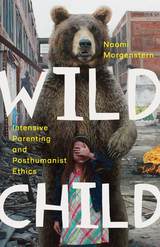 Wild Child: Intensive Parenting and Posthumanist Ethics
Naomi Morgenstern
University of Minnesota Press, 2018 Exploring how the figure of the “wild child” in contemporary fiction grapples with contemporary cultural anxieties about reproductive ethics and the future of humanity
In the eighteenth century, Western philosophy positioned the figure of “the child” at the border between untamed nature and rational adulthood. Contemporary cultural anxieties about the ethics and politics of reproductive choice and the crisis of parental responsibility have freighted this liminal figure with new meaning in twenty-first-century narratives. In Wild Child, Naomi Morgenstern explores depictions of children and their adult caregivers in extreme situations—ranging from the violence of slavery and sexual captivity to accidental death, mass murder, torture, and global apocalypse—in such works as Toni Morrison’s A Mercy, Cormac McCarthy’s The Road, Lionel Shriver’s We Need to Talk about Kevin, Emma Donoghue’s Room, and Denis Villeneuve’s film Prisoners. Morgenstern shows how, in such narratives, “wild” children function as symptoms of new ethical crises and existential fears raised by transformations in the technology and politics of reproduction and by increased ethical questions about the very decision to reproduce. In the face of an uncertain future that no longer confirms the confidence of patriarchal humanism, such narratives displace or project present-day apprehensions about maternal sacrifice and paternal protection onto the wildness of children in a series of hyperbolically violent scenes. Urgent and engaging, Wild Child offers the only extended consideration of how twenty-first-century fiction has begun to imagine the decision to reproduce and the ethical challenges of posthumanist parenting.
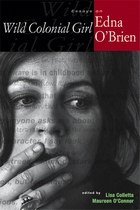 Wild Colonial Girl: Essays on Edna O'Brien
Edited by Lisa Colletta and Maureen O'Connor
University of Wisconsin Press, 2006 Since the 1960 publication of her first novel, The Country Girls, award-winning Irish writer Edna O'Brien has been both celebrated and maligned. Praised for her lyrical prose and vivid female characters and attacked for her frank treatment of sexuality and alleged sensationalism, O'Brien and her work seem always to spawn controversy, including the past banning in Ireland of several of her works. O'Brien's attention to "women's" concerns such as sex, romance, marriage, and childbirth has often relegated her to critical neglect at best and, at worst, outright contempt. This essay collection promises to be a long overdue critical reevaluation and exciting rediscovery of her oeuvre.
Wild Colonial Girl situates O'Brien in Irish contexts that allow for an appraisal of her significant contribution to a specifically Irish women's literary tradition while attesting to the potency of writing against patriarchal conventions. Each chapter's clear and detailed readings of O'Brien's fiction build a convincing case for her literary, political, and cultural importance, providing an invaluable critical guide for an enriched appreciation of O'Brien and her work.
 Wild Cowboys: Urban Marauders & the Forces of Order
Robert Jackall
Harvard University Press, 2005 Four bullet-torn bodies in a drug-ridden South Bronx alley. A college boy shot in the head on the West Side Highway. A wild shootout on the streets of Washington Heights, home of New York City's immigrant Dominican community and hub of the eastern seaboard's drug trade. All seemingly separate acts of violence. But investigators discover a pattern to the mayhem, with links to scores of assaults and murders throughout the city.
In this bloody urban saga, Robert Jackall recounts how street cops, detectives, and prosecutors pieced together a puzzle-like story of narcotics trafficking, money laundering, and murders for hire, all centered on a vicious gang of Dominican youths known as the Wild Cowboys. These boyhood friends, operators of a lucrative crack business in the Bronx, routinely pistol-whipped their workers, murdered rivals, shot or slashed witnesses to their crimes, and eventually turned on one another in a deadly civil war. Jackall chronicles the crime-scene investigations, frantic car chases, street arrests at gunpoint, interviews with informants, and knuckle-breaking plea bargaining that culminated in prison terms for more than forty gang members.
But he also tells a cautionary tale--one of a society with irreconcilable differences, fraught with self-doubt and moral ambivalence, where the institutional logics of law and bureaucracy often have perverse outcomes. A society where the forces of order battle not just violent criminals but elites seemingly aligned with forces of disorder: community activists who grab any pretext to further narrow causes; intellectuals who romanticize criminals; judges who refuse to lock up dangerous men; federal prosecutors who relish nailing cops more than crooks; and politicians who pander to the worst of our society behind rhetorics of social justice and moral probity. In such an up-for-grabs world, whose order will prevail?
Wild Delicate Seconds: 29 Wildlife Encounters
Charles Finn
Oregon State University Press, 2012 In Wild Delicate Seconds, Charles Finn captures twenty-nine chance encounters with the everyday—and not so everyday—animals, birds, and insects of North America. There are no maulings or fantastic escapes in Finn's narratives—only stillness and attentiveness to beauty. With profundity, humor, and compassion, Finn pays homage to the creatures we share our world with —from black bears to bumble bees, mountain lions to muskrats—and, in doing so, touches on what it means to be human.
 The Wild Earth’s Nobility: A Novel
Frank Waters
Ohio University Press, 2002 The Wild Earth’s Nobility is the first of Frank Waters’s semiautobiographical novels in the Pikes Peak saga. Here, in a frontier town in the shadow of the commanding mountain, the Rogier family settles near an age-old route of migrating Native Americans. In an era of prospecting, silver strikes, and frenzied mining, Joseph Rogier becomes a successful building contractor, rears a large family, and is gradually overwhelmed by the power of the great peak. In Waters’s visionary prose, the story becomes a mythic journey to reconcile instinct and reason, consciousness and intuition, and the powerful emotions of a family struggling with its own dreams and human limitations. Frank Waters (1902-1995), one of the finest chroniclers of the American Southwest, wrote twenty-eight works of fiction and nonfiction. Of Pike’s Peak (1971), the Chicago Daily News wrote, “It is a product of maturity, written with a sustained strength and beauty of style rarely found in fiction today.” Pike’s Peak is composed of three condensed novels: The Wild Earth’s Nobility, Below Grass Roots, and The Dust within the Rock.
The Wild East: Criminal Political Economies in South Asia
Edited by Barbara Harriss-White and Lucia Michelutti
University College London, 2019 Through eleven case studies conducted across India, Pakistan, and Bangladesh, The Wild East examines a variety of economic sectors and business enterprises that regularly flout the law, such as coal, oil, real estate, and industrial labor. Bridging anthropology and political economy, the case studies explore how state regulative law is ignored or selectively manipulated and reveal the workings of regulated criminal economic systems in which politicians, police, judges, and bureaucrats are closely intertwined. Disrupting the existing literature on South Asia’s informal economy, The Wild East also suggests avenues for future research that will be of critical value to students and scholars of economics, anthropology, sociology, criminology, comparative politics, political science, and international relations.
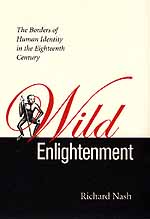 Wild Enlightenment: The Borders of Human Identity in the Eighteenth Century
Richard Nash
University of Virginia Press, 2003 Wild Enlightenment charts the travels of the figure of the wild man, in each of his guises, through the invented domain of the bourgeois public sphere. We follow him through the discursive networks of novels, broadsheets, pamphlets, and advertisements and through their material locations at fair booths, the Royal Society, Court, and Parliament. He leads us on in various disguises: as Tyson's Orang-Outang, Swift's Yahoos, and Defoe's Robinson Crusoe. Yet Richard Nash is not primarily telling a story of the English gentleman abroad in the realm of the wild man; instead Nash explores the wild man abroad in the realm of the English gentleman. His is the tale of the wild man as complex alter ego to the idealized abstraction of "the citizen of the Enlightenment."
Nash eloquently argues that following the movements of the wild man through the public sphere helps illuminate the process by which an abstract figure comes to constitute human nature. He contends that expressions such as wild man and noble savage operated as much more than metaphors: if anything, the trajectory was not one of a metaphor being taken literally but rather of the extant terminology's actually shaping preconceptions by which real beings were observed and recognized by Europeans. Throughout his account, Nash insists on attending to the traffic between literary accounts
and real material beings.
Shifting perspective from the thematic approach of intellectual history to a more eclectic cultural criticism, Nash introduces a refreshing means to understanding both the figures of the wild man and the citizen of the Enlightenment in the eighteenth century.
--------------------------------------------------------------------------------
Richard Nash, Associate Professor of English at Indiana University, is the author of John Craige's Mathematical Principles of Christian Theology.
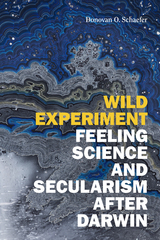 Wild Experiment: Feeling Science and Secularism after Darwin
Donovan O. Schaefer
Duke University Press, 2022 In Wild Experiment, Donovan O. Schaefer challenges the conventional wisdom that feeling and thinking are separate. Drawing on science studies, philosophy, affect theory, secularism studies, psychology, and contemporary literary criticism, Schaefer reconceptualizes rationality as defined by affective processes at every level. He introduces the model of “cogency theory” to reconsider the relationship between evolutionary biology and secularism, examining mid-nineteenth-century Darwinian controversies, the 1925 Scopes Trial, and the New Atheist movement of the 2000s. Along the way, Schaefer reappraises a range of related issues, from secular architecture at Oxford to American eugenics to contemporary climate denialism. These case studies locate the intersection of thinking and feeling in the way scientific rationality balances excited discovery with anxious scrutiny, in the fascination of conspiracy theories, and in how racist feelings assume the mantle of rational objectivity. The fact that cognition is felt, Schaefer demonstrates, is both why science succeeds and why it fails. He concludes that science, secularism, atheism, and reason itself are not separate from feeling but comprehensively defined by it.
 Wild Fictions: Essays on Literature, Empire, and the Environment
Amitav Ghosh
University of Chicago Press, 2025 From the 2025 recipient of the Pak Kyongni Prize, often referred to as Korea’s Nobel Prize in Literature.
A collection of essays on themes central to Ghosh’s work: imperialism and decolonization, climate change, and the stories of ordinary people making lives amid these historical forces.
Wild Fictions brings together Amitav Ghosh’s extraordinary writings on subjects that have obsessed him over the last twenty-five years: literature and language; climate change and the environment; and human lives, travel, and discoveries. Threaded throughout the collection are his reflections on the spaces that we inhabit and how we occupy them. From the significance of the commodification of the clove to the diversity of the mangrove forests in Bengal and the radical fluidity of multilingualism, Wild Fictions is a powerful refutation of imperial violence, a fascinating exploration of the fictions we weave to absorb history, and a reminder of the importance of sensitivity and empathy.
With the combination of moral passion, intellectual curiosity, and literary elegance that defines his writing, Ghosh makes readers understand the world in new and urgent ways. Together, the pieces in Wild Fictions chart a course that allows us to heal our relationships and restore the delicate balance with the volatile landscapes to which we all belong.
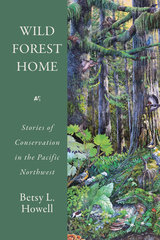 Wild Forest Home: Stories of Conservation in the Pacific Northwest
Betsy L. Howell
University of Utah Press, 2024 Growing up in the Pacific Northwest, Betsy L. Howell spent her childhood exploring and thriving in old-growth coniferous forests. In the summer of 1986, she volunteered in Mt. Hood National Forest, surveying northern spotted owls. That summer position turned into three decades as a wildlife biologist with the U.S. Forest Service during a time of tremendous change within the agency.
The twenty-five essays in Wild Forest Home chronicle Howell’s career and personal experiences studying the wildlife of the Pacific Northwest during the litigious listing of the northern spotted owl and marbled murrelet under the Endangered Species Act and the Clinton administration’s adoption of the seminal 1994 Northwest Forest Plan. Meanwhile, Howell toiled on fire crews, searched for rare species, helped to monitor fishers reintroduced to the Olympic Peninsula, tested amphibians for deadly diseases, became a writer, and mourned the deaths of her parents. This captivating memoir seamlessly blends story and science to reveal a unique portrait of the struggles and joys of one wildlife biologist.
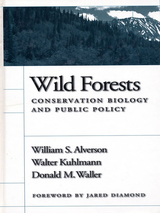 Wild Forests: Conservation Biology And Public Policy
William S. Alverson, Donald M. Waller, and Walter Kuhlmann
Island Press, 1994 Wild Forests presents a coherent review of the scientific and policy issues surrounding biological diversity in the context of contemporary public forest management. The authors examine past and current practices of forest management and provide a comprehensive overview of known and suspected threats to diversity. In addition to discussing general ecological principles, the authors evaluate specific approaches to forest management that have been proposed to ameliorate diversity losses. They present one such policy -- the Dominant Use Zoning Model incorporating an integrated network of "Diversity Maintenance Areas" -- and describe their attempts to persuade the U.S. Forest Service to adopt such a policy in Wisconsin. Drawing on experience in the field, in negotiations, and in court, the authors analyze the ways in which federal agencies are coping with the mandates of conservation biology and suggest reforms that could better address these important issues. Throughout, they argue that wild or unengineered conditions are those that are most likely to foster a return to the species richness that we once enjoyed.
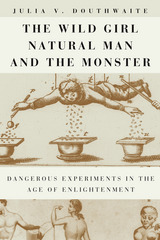 The Wild Girl, Natural Man, and the Monster: Dangerous Experiments in the Age of Enlightenment
Julia V. Douthwaite
University of Chicago Press, 2002 This study looks at the lives of the most famous "wild children" of eighteenth-century Europe, showing how they open a window onto European ideas about the potential and perfectibility of mankind. Julia V. Douthwaite recounts reports of feral children such as the wild girl of Champagne (captured in 1731 and baptized as Marie-Angélique Leblanc), offering a fascinating glimpse into beliefs about the difference between man and beast and the means once used to civilize the uncivilized.
A variety of educational experiments failed to tame these feral children by the standards of the day. After telling their stories, Douthwaite turns to literature that reflects on similar experiments to perfect human subjects. Her examples range from utopian schemes for progressive childrearing to philosophical tales of animated statues, from revolutionary theories of regenerated men to Gothic tales of scientists run amok. Encompassing thinkers such as Rousseau, Sade, Defoe, and Mary Shelley, Douthwaite shows how the Enlightenment conceived of mankind as an infinitely malleable entity, first with optimism, then with apprehension. Exposing the darker side of eighteenth-century thought, she demonstrates how advances in science gave rise to troubling ethical concerns, as parents, scientists, and politicians tried to perfect mankind with disastrous results.
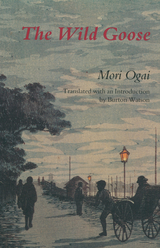 The Wild Goose
Mori Ogai; Translated with an Introduction by Burton Watson
University of Michigan Press, 1995 Mori Ōgai (1862–1922), one of the giants of modern Japanese literature, wrote The Wild Goose at the turn of the century. Set in the early 1880s, it was, for contemporary readers, a nostalgic return to a time when the nation was embarking on an era of dramatic change. Ōgai’s narrator is a middle-aged man reminiscing about an unconsummated affair, dating to his student days, between his classmate and a young woman kept by a moneylender. At a time when writers tended to depict modern, alienated male intellectuals, the characters of The Wild Goose are diverse, including not only students preparing for a privileged intellectual life and members of the plebeian classes who provide services to them, but also a pair of highly developed female characters. The author’s sympathetic and penetrating portrayal of the dilemmas and frustrations faced by women in this early period of Japan’s modernization makes the story of particular interest to readers today. Ōgai was not only a prolific and popular writer, but also a protean figure in early modern Japan: critic, translator, physician, military officer, and eventually Japan’s Surgeon General. His rigorous and broad education included the Chinese classics as well as Dutch and German; he gained admittance to the Medical School of Tokyo Imperial University at the age of only fifteen. Once established as a military physician, he was sent to Germany for four years to study aspects of European medicine still unfamiliar to the Japanese. Upon his return, he produced his first works of fiction and translations of English and European literature. Ōgai’s writing is extolled for its unparalleled style and psychological insight, nowhere better demonstrated than in The Wild Goose.
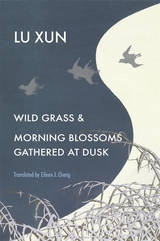 Wild Grass and Morning Blossoms Gathered at Dusk
Lu Xun
Harvard University Press, 2022 A brilliant new translation of the short improvisational fiction and memoirs of Lu Xun, the father of modern Chinese literature.
This captivating translation assembles two volumes by Lu Xun, the founder of modern Chinese literature and one of East Asia’s most important thinkers at the turn of the twentieth century. Wild Grass and Morning Blossoms Gathered at Dusk represent a pinnacle of achievement alongside Lu Xun’s famed short stories.
In Wild Grass, a collection of twenty-three experimental pieces, surreal scenes come alive through haunting language and vivid imagery. These are landscapes populated by ghosts, talking animals, and sentient plants, where a protagonist might come face-to-face with their own corpse. By depicting the common struggle of real and imagined creatures to survive in an inhospitable world, Lu Xun asks the deceptively simple question, “What does it mean to be human?”
Alongside Wild Grass is Morning Blossoms Gathered at Dusk, a memoir in eight essays capturing the literary master’s formative years and featuring a motley cast of dislocated characters—children, servants, outcasts, the dead and the dying. Giving voice to vulnerable subjects and depicting their hopes and despair as they negotiate an unforgiving existence, Morning Blossoms affirms the value of all beings and elucidates a central predicament of the human condition: feeling without a home in the world.
Beautifully translated and introduced by Eileen J. Cheng, these lyrical texts blur the line between autobiography and literary fiction. Together the two collections provide a new window into Lu Xun’s mind and his quest to find beauty and meaning in a cruel and unjust world.
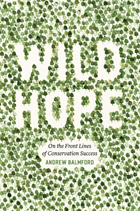 Wild Hope: On the Front Lines of Conservation Success
Andrew Balmford
University of Chicago Press, 2012 Tropical deforestation. The collapse of fisheries. Unprecedented levels of species extinction. Faced with the plethora of gloom-and-doom headlines about the natural world, we might think that environmental disaster is inevitable. But is there any good news about the environment? Yes, there is, answers Andrew Balmford in Wild Hope, and he offers several powerful stories of successful conservation to prove it. This tragedy is still avoidable, and there are many reasons for hope if we find inspiration in stories of effective environmental recovery. Wild Hope is organized geographically, with each chapter taking readers to extraordinary places to meet conservation’s heroes and foot soldiers—and to discover the new ideas they are generating about how to make conservation work on our hungry and crowded planet. The journey starts in the floodplains of Assam, where dedicated rangers and exceptionally tolerant villagers have together helped bring Indian rhinos back from the brink of extinction. In the pine forests of the Carolinas, we learn why plantation owners came to resent rare woodpeckers—and what persuaded them to change their minds. In South Africa, Balmford investigates how invading alien plants have been drinking the country dry, and how the Southern Hemisphere’s biggest conservation program is now simultaneously restoring the rivers, saving species, and creating tens of thousands of jobs. The conservation problems Balmford encounters are as diverse as the people and their actions, but together they offer common themes and specific lessons on how to win the battle of conservation—and the one essential ingredient, Balmford shows, is most definitely hope. Wild Hope, though optimistic, is a clear-eyed view of the difficulties and challenges of conservation. Balmford is fully aware of failed conservation efforts and systematic flaws that make conservation difficult, but he offers here innovative solutions and powerful stories of citizens, governments, and corporations coming together to implement them. A global tour of people and programs working for the planet, Wild Hope is an emboldening green journey.
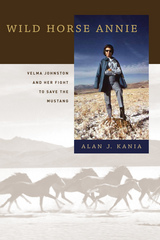 Wild Horse Annie: Velma Johnston and Her Fight to Save the Mustang
Alan J. Kania
University of Nevada Press, 2013 In 1950 Velma Johnston, a shy Nevada ranch wife, came upon a horse trailer leaking blood. When she discovered the destination of the trailer and its occupants—a trio of terrified and badly injured wild horses—she launched a crusade that eventually reached the halls of Congress and changed the way westerners regard and treat the bands of mustangs and burros that roam their region.
Wild horses have been a subject of bitter controversy in the West for decades. To some, they are symbols of the West’s wild, free heritage. To others, they are rapacious grazers that destroy habitat and compete with domestic livestock and indigenous wildlife for scanty food and water. For years, free-ranging horses and burros were rounded up and shipped to slaughterhouses to be killed and turned into pet food. This practice provided an income for the “mustangers” who trapped and sold them, but it also involved horrendous cruelty and abuse of the animals.
Velma Johnston, who became known as “Wild Horse Annie,” undertook to stop the removal of wild horses and burros from US public lands and protect them from the worst aspects of mustanging. Her campaign attracted nationwide attention, as it led her from her rural Nevada County to state offices and finally to Washington, DC. Author Alan J. Kania worked closely with Johnston for seven years, and his biography provides unique insight into Wild Horse Annie’s life and her efforts to save the West’s wild horse herds through the passage of protective legislation.
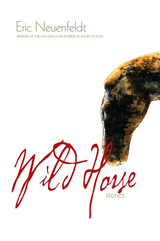 Wild Horse: Stories
Eric Neuenfeldt
University of Massachusetts Press, 2016 Winner of the prestigious Grace Paley Prize, Wild Horse explores human experience in forgotten places of America's industrial decline. Interweaving images of remarkable natural beauty with neglected homes and trashed streets, Neuenfeldt writes fully to life characters who have been dealt losing hands. With a pathos both heartrending and fascinating, he offers stories that pull readers completely into the landscapes of loss, daring them to keep looking despite the squalor because there is something about the character—the grit he displays or the hopefulness he maintains—that makes readers want to see how it ends.
An orphaned boy fights to keep the dilapidated home that contains the memory of his family. A sawyer's nephew scrambles to recall the skills of the trade in the wake of his uncle's death. A corrections teacher strains to give his son direction in a remote prison town after his addict mother deserts them. These stories create a portrait of the difficult decisions people must make in unforgiving surroundings and the consequences of the battle to press on.
Published in cooperation with Association of Writers and Writing Programs.
Wild Horses
Jordi Cussà, Translated by Tiago Miller
Fum d'Estampa Press, 2022
A brutally powerful, unflinching account of the heroin epidemic that swept across Catalonia in the 1980s, Wild Horses tells the story of a group of friends as they buy, sell, and consume heroin and other drugs in their hometown. Told through a kaleidoscope of voices, stories, song lyrics, and heartbreakingly all-too-real characters, Cussà’s novel, originally published in 2000, is already a true classic of modern storytelling that is both shocking and captivating at the same time.
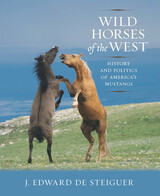 Wild Horses of the West: History and Politics of America's Mustangs
J. Edward de Steiguer
University of Arizona Press, 2011 When the Spanish explorers brought horses to North America, the horses were, in a sense, returning home. Beginning with their origins fifty million years ago, the wild horse has been traced from North America through Asia to the plains of Spain’s Andalusia and then back across the Atlantic to the ranges of the American West. When given the chance, these horses simply took up residence in the landscape that their ancestors had roamed so long ago.
In Wild Horses of the West, J. Edward de Steiguer provides an entertaining and well-researched look at one of the most controversial animal welfare issues of our time—the protection of free-roaming horses on the West’s public lands. This is the first book in decades to include the entire story of these magnificent animals, from their evolution and biology to their historical integration into conquistador, Native American, and cowboy cultures. And the story isn’t over. De Steiguer goes on to address the modern issues— ecology, conservation, and land management—surrounding wild horses in the West today.
Featuring stunning color photographs of wild horses, this extremely thorough and engaging blend of history, science, and politics will appeal to students of the American West, conservation activists, and anyone interested in the beauty and power of these striking animals.
Wild Hundreds
Nate Marshall
University of Pittsburgh Press, 2015 Winner, 2017 Great Lakes Colleges Association New Writers Award (poetry category)
Winner, 2016 BCALA Literary Award (poetry category)
Winner of the 2014 Agnes Lynch Starrett Poetry Prize
Finalist, 2015 NAACP Image Awards (poetry category)
Wild Hundreds is a long love song to Chicago. The book celebrates the people, culture, and places often left out of the civic discourse and the travel guides. Wild Hundreds is a book that displays the beauty of black survival and mourns the tragedy of black death.
 Wild Ideas
David Rothenberg
University of Minnesota Press, 1995 A new view of what’s “wild,” and a new path for environmentalism. At the very heart of American respect for nature, historically and philosophically, is the notion of the wild. This notion comes under scrutiny in Wild Ideas, a collection of essays that bring a fresh and refreshing perspective to the wilderness paradoxically at the center of our civilization. Blending well-known and new voices, the volume surveys classical and romantic concepts of wilderness, from the scary to the sublime, and shows why neither serves us anymore. Instead, the authors argue for a “wild culture,” in which nature is not opposed to humanity, a mere matter of resources and consumers. A cogent reassessment of the ideas that drive the conservation movement, Wild Ideas points out a new direction for future environmentalism.Among the topics discussed are the confluence of wilderness, empire, and race in the United States; the way the ecology movement uses language; gendered views of the wilderness; maps and topology, and how they affect our view of the wild; healing by the wilderness experience; and the idea of an urban wilderness. Contributors: David Abram; Douglas Buege, U of Wisconsin; Denis Cosgrove, U of London; Robert Greenway, Sonoma State U; Ed Grumbine, Sierra Institute; Marvin Henberg, Linfield College; Irene Klaver, Montana State U; Andrew Light, U of Alberta; Lois Lorentzen, U of San Francisco; Max Oelschlaeger, U of North Texas; R. Murray Schafer; Tom Wolf.
Wild Indians And Other Creatures
Adrian C. Louis
University of Nevada Press, 1997 This stunning book will startle readers who harbor romantic notions about contemporary Native American life. In these ten irreverent and interrelated short stories, Louis interweaves his versions of traditional Trickster tales with human stories to create something new and arresting. Set on and around the Pine Ridge Reservation of South Dakota, these unsettling, often politically incorrect stories function almost as a novel. Many are laugh-out-loud funny, while others are stark and sad, yet grimly human and powerful. In this collection, Louis, one of the leading Native American poets, presents an unblinking look at the social ills of reservation life while at the same time speaking of hope and survival for native peoples.
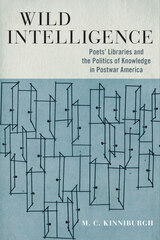 Wild Intelligence: Poets' Libraries and the Politics of Knowledge in Postwar America
M. C. Kinniburgh
University of Massachusetts Press, 2022 Information science was a burgeoning field in the early years of the Cold War, and while public and academic libraries acted as significant sites for the information boom, it is unsurprising that McCarthyism and censorship would shape what they granted readers access to and acquired. Wild Intelligence traces a different history of information management, examining the privately assembled collections of poets and their knowledge-building practices at midcentury. Taking up case studies of four poets who began writing during the 1950s and 1960s, including Charles Olson (1910–1970), Diane di Prima (1934–2020), Gerrit Lansing (1928–2018), and Audre Lorde (1934–1992), M. C. Kinniburgh shows that the postwar American poet’s library should not just be understood according to individual books within their collection but rather as an archival resource that reveals how poets managed knowledge in a growing era of information overload. Exploring traditions and systems that had been overlooked, buried, occulted, or censored, these poets sought to recover a sense of history and chart a way forward.
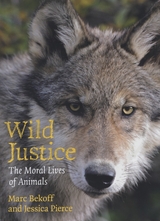 Wild Justice: The Moral Lives of Animals
Marc Bekoff and Jessica Pierce
University of Chicago Press, 2009 Scientists have long counseled against interpreting animal behavior in terms of human emotions, warning that such anthropomorphizing limits our ability to understand animals as they really are. Yet what are we to make of a female gorilla in a German zoo who spent days mourning the death of her baby? Or a wild female elephant who cared for a younger one after she was injured by a rambunctious teenage male? Or a rat who refused to push a lever for food when he saw that doing so caused another rat to be shocked? Aren’t these clear signs that animals have recognizable emotions and moral intelligence? With Wild Justice Marc Bekoff and Jessica Pierce unequivocally answer yes. Marrying years of behavioral and cognitive research with compelling and moving anecdotes, Bekoff and Pierce reveal that animals exhibit a broad repertoire of moral behaviors, including fairness, empathy, trust, and reciprocity. Underlying these behaviors is a complex and nuanced range of emotions, backed by a high degree of intelligence and surprising behavioral flexibility. Animals, in short, are incredibly adept social beings, relying on rules of conduct to navigate intricate social networks that are essential to their survival. Ultimately, Bekoff and Pierce draw the astonishing conclusion that there is no moral gap between humans and other species: morality is an evolved trait that we unquestionably share with other social mammals. Sure to be controversial, Wild Justice offers not just cutting-edge science, but a provocative call to rethink our relationship with—and our responsibilities toward—our fellow animals.
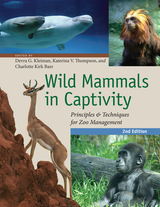 Wild Mammals in Captivity: Principles and Techniques for Zoo Management, Second Edition
Edited by Devra G. Kleiman, Katerina V. Thompson, and Charlotte Kirk Baer
University of Chicago Press, 2010 Zoos, aquaria, and wildlife parks are vital centers of animal conservation and management. For nearly fifteen years, these institutions have relied on Wild Mammals in Captivity as the essential reference for their work. Now the book reemerges in a completely updated second edition. Wild Mammals in Captivity presents the most current thinking and practice in the care and management of wild mammals in zoos and other institutions. In one comprehensive volume, the editors have gathered the most current information from studies of animal behavior; advances in captive breeding; research in physiology, genetics, and nutrition; and new thinking in animal management and welfare. In this edition, more than three-quarters of the text is new, and information from more than seventy-five contributors is thoroughly updated. The standard text for all courses in zoo biology, Wild Mammals in Captivity will, in its new incarnation, continue to be used by zoo managers, animal caretakers, researchers, and anyone with an interest in how to manage animals in captive conditions.
Wild Man
Tobias Schneebaum
University of Wisconsin Press, 2003 Part autobiographical journal, part social-historical novel, Wild Man tracks Tobias Schneebaum's fascinating and almost epic life story, from his earliest contemplation of homoerotic desire through his life in Peru, Borneo, and beyond. A young man from New York, Schneebaum "disappeared" in 1955 on the eastern slopes of the Andes. He was, in actuality, living for more than a year among the remote Harakhambut people, discovering a way of being that was strange, primitive, and powerfully attractive to him. This longing to find the "wild man" in other cultures—and in himself—eventually led him on an odyssey through South America, India, Tibet, Africa, Borneo, New Guinea, and Southeast Asia. He lived among isolated forest peoples, including headhunters and cannibals, in regions where few, if any, white men had ever been.
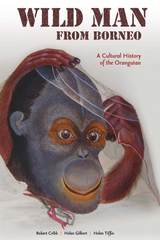 Wild Man from Borneo: A Cultural History of the Orangutan
Robert J. Cribb, Helen Gilbert, and Helen Tiffin
University of Hawaii Press, 2014 Wild Man from Borneo offers the first comprehensive history of the human-orangutan encounter. Arguably the most humanlike of all the great apes, particularly in intelligence and behavior, the orangutan has been cherished, used, and abused ever since it was first brought to the attention of Europeans in the seventeenth century. The red ape has engaged the interest of scientists, philosophers, artists, and the public at large in a bewildering array of guises that have by no means been exclusively zoological or ecological. One reason for such a long-term engagement with a being found only on the islands of Borneo and Sumatra is that, like its fellow great apes, the orangutan stands on that most uncomfortable dividing line between human and animal, existing, for us, on what has been called “the dangerous edge of the garden of nature.”
Beginning with the scientific discovery of the red ape more than three hundred years ago, this work goes on to examine the ways in which its human attributes have been both recognized and denied in science, philosophy, travel literature, popular science, literature, theatre, museums, and film. The authors offer a provocative analysis of the origin of the name “orangutan,” trace how the ape has been recruited to arguments on topics as diverse as slavery and rape, and outline the history of attempts to save the animal from extinction. Today, while human populations increase exponentially, that of the orangutan is in dangerous decline. The remaining “wild men of Borneo” are under increasing threat from mining interests, logging, human population expansion, and the widespread destruction of forests. The authors hope that this history will, by adding to our knowledge of this fascinating being, assist in some small way in their preservation.
The Wild Man Within: An Image in Western Thought from the Renaissance to Romanticism
Edward Dudley
University of Pittsburgh Press, 1972
These essays trace the myth of the wild man from the Middle Ages to its disintegration into symbol in the periods following the discovery of America and encounter with real “wild men.” This is the first book to discuss the concept of wildness in the writings of the Enlightenment period in Western Europe and the first to attempt a broad, interdisciplinary approach to the subject of primitivism, not only from a strict “history of ideas” approach, but through discussions of individual works, both literary and political, and encompassing various subject matter from racism to the origins of language.
Contributors: Richard Ashcraft; Ehrhard Bahr; John G. Burke; Earl Miner; Gary B. Nash; Stanley Robe; Geoffrey Symcox; Peter Thoralev; Hayden V. White, and the editors.
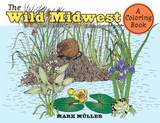 The Wild Midwest: A Coloring Book
Mark Muller
University of Iowa Press, 2016 While most coloring books offer fanciful recreations of the wonders of nature, Mark Müller’s realistic drawings allow you to embellish real-world birds, plants, and animals with all the colors you can imagine. Layer your creative whimsy on his meticulous accuracy. Go ahead, ink in a hot pink bison or a turquoise sandhill crane or a buttery yellow tree frog, pouring magic into reality. Turn the tallgrass prairie’s pale purple coneflowers ruby red, the black swallowtail butterfly into a green-dotted swallowtail, or white-tailed deer into fuschia-tailed. Why shouldn’t red-winged blackbirds flaunt salmon epaulets, or American goldfinches turn coppery, or rose-breasted grosbeaks celadon-breasted? Amid the creatures teeming in the midwestern grasses and wetlands on these pages, you’ll even find the most common invasive species—see if you can find the garlic mustard and the emerald ash borer! Here is the wild Midwest as it really is, for your coloring pleasure.
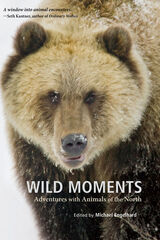 Wild Moments: Adventures with Animals of the North
Edited by Michael Engelhard
University of Alaska Press, 2009 It is nearly impossible to live in Alaska without being influenced by its natural environment. Residents have no choice but to coexist with the Alaska wilderness and its animal inhabitants, and this extraordinary experience—along with the stunning landscape—is what often draws people to Alaska. Wild Moments offers a fascinating range of creative nonfiction essays that describe the chance meetings that bring Alaska residents face to face with their animal neighbors. These imaginative accounts speak to the ability of nature to transform the human experience, and the authors urge us through their works to protect these often threatened creatures who share our planet. The contributors to this collection include some of Alaska’s most prestigious nature writers, such as Peggy Shumaker, Ned Rozell, Nick Jans, Debbie S. Miller, Craig Childs, Richard Nelson, and Drew Pogge. Wild Moments presents some of the best and most innovative nonfiction writing in an environmental context, and it will be of interest to all readers with a passion and concern for the natural world.
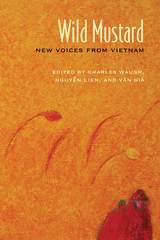 Wild Mustard: New Voices from Vietnam
Edited by Charles Waugh, Nguyen Lien, and Van Giá
Northwestern University Press, 2017 Wild Mustard, an anthology of prizewinning short fiction by contemporary Vietnamese writers, throws into relief the transformations of self and place that followed Vietnam’s turn toward a market economy. In just three decades, since the 1986 policy known as doi moi (renovation) ended collectivization and integrated Vietnam into world markets, the country has transformed from one of the poorest and most isolated on earth into a dynamic global economy. The nineteen stories in this volume capture the kaleidoscopic experiences of Vietnam's youth, navigating between home and newly expanded horizons, as they seek new opportunities through migration, education, and integration not only into their nation but into the world.
In the tradition of the "Under 40" collections popularized by magazines such as the New Yorker and Granta, but with greater stakes and greater differences between the previous generation of writers and this new one, Wild Mustard seeks to change how North American readers think of Vietnam. Escaping the common fixation on the Vietnam War and its aftermath, these stories reflect the movement and dynamism of the young Vietnamese who locate themselves amid the transnational encounters and proliferating identities of a global economy.
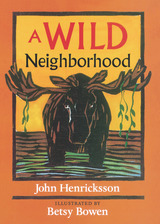 Wild Neighborhood
John Henricksson
University of Minnesota Press, 1997 An entertaining portrait of the creatures that share our place in the woods. John Henricksson’s neighbors stop by to chat or to have a bite to eat or just to sit and watch. But in his Wild Neighborhood the visitors are the black bear, gray jay, timber wolf, owl, white-tailed deer, raven, and the moose. A Wild Neighborhood is a collection of elegantly written essays about these creatures. From kitchen-table gossip about the black bear’s recent attempts to raid the bird feeder, to the retelling of Native American myths about the mischievous raven, Henricksson shows a love and understanding of the residents with whom he shares the narrow wedge of the Superior National Forest in northeastern Minnesota.Henricksson writes of the personal relationships that develop while living in the woods. He tells of the joy of helping a deer survive a tough winter and the mystery of animals he calls “ghosts”—species that are extinct or near extinct but still have a fleeting presence in the area. Award-winning artist Betsy Bowen, author of Antler, Bear, Canoe: A Northwoods Alphabet Year, beautifully depicts the denizens of the forest. Her twenty-four woodcuts reflect, often humorously, Henricksson’s respect for and love of northwoods creatures.This personal account of a vibrant community in the woods will appeal to readers of all ages and make a beautiful gift for everyone who has admired the creatures of his or her own wild neighborhood.
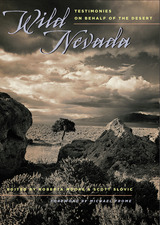 Wild Nevada: Testimonies On Behalf Of The Desert
Roberta Moore
University of Nevada Press, 2005 For many people beyond Nevada’s borders, the state is no more than the nation’s desert dumping ground for dangerous waste. Others know it only for its hedonistic centers of gambling and entertainment. This scandal belies the extraordinary beauty and wonder of the state’s wilderness areas and the precious natural, aesthetic, and cultural resources to be found there. In Wild Nevada, editors Roberta Moore and Scott Slovic have assembled twenty-nine writers who know and love the Nevada wilderness to testify on its behalf. Contributors include literary artists and scholars, environmental and community activists, leading politicians, ranchers, scientists, and park rangers. Some essays offer observations on the political and philosophical discussions of wilderness that heat up the halls of academia and Congress; others recount moving personal encounters with wild places within Nevada; and still others comment on the ambiguities of preserving wild places through wilderness designation. But despite the eclectic backgrounds of the writers and their varied perspectives on public policy, they are all united in their devotion to the ecological and aesthetic values of Nevada’s threatened wilderness areas. Foreword by Michael Frome.
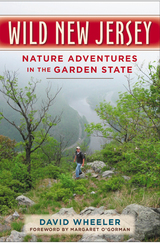 Wild New Jersey: Nature Adventures in the Garden State
David Wheeler
Rutgers University Press, 2011 The fastest animal on earth dive-bombs him from the skies. A young black bear bounds up a mountain trail a few yards away. Poisonous snakes swirl at his feet. A thousand bats careen past his head in a pitch-black roost. Pods of dolphins swim right past him by the scores. Who? Experienced naturalist David Wheeler. Where? In Wild New Jersey, of course. Wild New Jersey invites readers along Wheeler’s whirlwind year-long tour of the most ecologically diverse state for its size in America. Along with the expert guidance of charismatic wildlife biologists and local conservationists, he explores mountains, valleys, beaches, pine barrens, caves, rivers, marshlands, and more—breathtaking landscapes and the state’s Noah’s Ark of fascinating creatures. This isn’t your ordinary ride on the Jersey Turnpike. Fasten your seatbelts and join Wheeler as he . . . - Kayaks through the Meadowlands under the watchful eye of the Empire State Building,
- Pans for cretaceous fossils in a hidden brook once home to mastodons and giant sloths,
- Rides a fishing boat in the frigid snows of winter on a high-seas quest for Atlantic puffins,
- Trudges through the eerie darkness of a bog on a mysterious night hike,
- Dogsleds across the windswept alpine slopes in the haunts of the porcupine and bobcat.
With Wheeler’s compelling narrative, in-depth background details, and eye for revealing the offbeat, you can count this as the first nature book to paint the extraordinary picture of New Jersey’s unlikely wilderness in all its glory. Come along for all the adventure and insight in Wild New Jersey!
The Wild Night Dress: Poems
Laura McCullough
University of Arkansas Press, 2017 Finalist, 2017 Miller Williams Poetry Prize, edited by Billy Collins “A graceful synthesis of poetry and science.” —Billy Collins Laura McCullough finds passage through the darkest times as she loses, in short order, her mother and her marriage. Through her near unbearable grief, she creates poems that slip between science and nature as she grasps at coordinates in a world spun out of its orbit. From the God Particle to toroidal vortexes, from the slippery linguistics of translation to the translation of the body, McCullough brings readers to the mystery of surrender, and the paradox that what we bear can make us more beautiful, that there is a gift in grief.
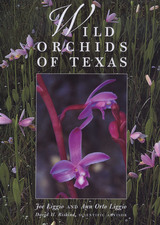 Wild Orchids of Texas
By Joe Liggio and Ann Orto Liggio
University of Texas Press, 1999 Best of Show Award, Society for Technical Communication International From the East Texas swamps and forests to the Edwards Plateau canyons and the Trans-Pecos mountains, Texas hosts a surprising number of native orchids. Their exquisite beauty endears them to everyone from wildflower lovers to professional botanists and conservationists. This beautifully illustrated book presents all 54 wild orchids of Texas. The species descriptions that accompany Joe Liggio's lovely color photos discuss the plant's flowers, blooming season, pollinators, typical habitats, and range (also shown by map), including its distribution within and beyond Texas. The species are grouped by genus and also listed by color, county, and habitat for easy reference. In addition to the species accounts, the authors offer a general natural history of Texas orchids that discusses such topics as pollination and reproduction, special growing requirements, and threats to orchids from loss of habitats and careless collecting. They also describe the many orchid habitats in Texas and the species that grow in each. This wide variety of information, which has never before been collected in one volume for a general readership, makes this book the essential guide to Texas' wild orchids.
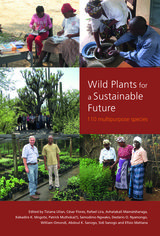 Wild Plants for a Sustainable Future
Edited by Tiziana Ulian, César Flores, Rafael Lira, Avhatakali Mamatsharaga, Kebadire K. Mogotsi, Patrick Muthoka, Samodimo Ngwako, Desterio O. Nyamongo, William Omondi, Abdoul K. Sanogo, Sidi Sanogo, and Efisio Mattana
Royal Botanic Gardens, Kew, 2018 Aimed at practitioners in governmental institutions and NGOs working in Africa and Latin America, this book has been written to promote the conservation and sustainable use of wild multipurpose plant species in conservation, agriculture, and forestry projects, addressing the UN Sustainable Development Goals “to end poverty, protect the planet and ensure prosperity for all.”
The publication forms one of the main dissemination achievements of The MGU–Useful Plants Project, developed under Kew’s Millennium Seed Bank partnership, to conserve and use sustainably wild plants important for rural communities in Botswana, Kenya, Mali, South Africa, and Mexico. Institutional partners led the project in each country, involving rural communities, local authorities, and schools. A scientific approach was applied throughout.
The core of this book presents detailed species profiles of 110 plants selected for their importance to communities and livelihoods. The profiles are structured in a clear and consistent format, providing information on taxonomy and nomenclature, plant descriptions, fruit and seed structures, distribution, habitat, uses, known hazards and safety, conservation status, seed conservation, propagation, and trading, along with key references from the literature.
Wild Plants of Southern Spain: A Guide to the Native Plants of Andalucia
Tony Hall
Royal Botanic Gardens, Kew, 2017 Southern Spain, and in particular Andalucia, is hope to many common garden plants, including daffodils, lavenders, and shrubs. At the same time, it is one of the most florally diverse regions in the world. This book covers that spectrum, from the commonplace to the astonishing.
Drawing on more than fifteen years of fieldwork in the region, Tony Hall details over five hundred different species in this volume, presenting all essential botanical information alongside more than six hundred photographs and distribution maps. No one interested in the plants of this region will be able to forego this book.
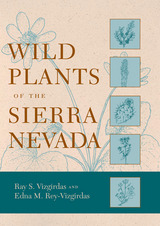 Wild Plants of the Sierra Nevada
Ray S. Vizgirdas
University of Nevada Press, 2009 The Sierra Nevada of California and Nevada is the longest continuous mountain range in the United States. It contains over 50 percent of California’s total flora, approximately 405 plant taxa endemic to the Sierra, and 218 taxa considered rare. Wild Plants of the Sierra Nevada inventories the flora of the entire range, including comprehensive descriptions of the plants; their traditional uses as food, medicine, or for making tools and other utensils; and information about their habitat. The authors describe the natural history and ecology of Sierra Nevada plants in terms of plant communities and life zones, and outline the basic principles of ethnobotany, the classification of plants, and methods of collecting plant specimens and protecting rare species. The plant descriptions are accompanied by line drawings of each major species, and the book includes a table of Sierra Nevada habitats and their associated plants, along with a list of threatened, endangered, and sensitive plant species found in the range. This text is an essential guide for botanists, outdoors aficionados, and anyone interested in the intricate connections between plants, their environment, and our human species.
The Wild Region in Life-History
Laszlo Tengelyi
Northwestern University Press, 2004 A tour de force by one of Hungary's most interesting contemporary philosophers The Wild Region in Life-History outlines a phenomenological approach to some of the main topics of theoretical philosophy, such as meaning, sense, temporality, unity of life, narrative history, self-identity, and intersubjectivity, as well as an ethics of alterity. In his investigations, László Tengelyi's point of departure is a critical examination of what is commonly referred to as "the narrative view of the self," which tends to equate life-history and personal identity. Challenging this view as too one-dimensional and reflective, Tengelyi reveals a hidden area of sense-formation in life-history--an area in which force and meaning do not merely blend but in many ways undermine each other. It is this hidden area that The Wild Region in Life-History describes.
|
|
